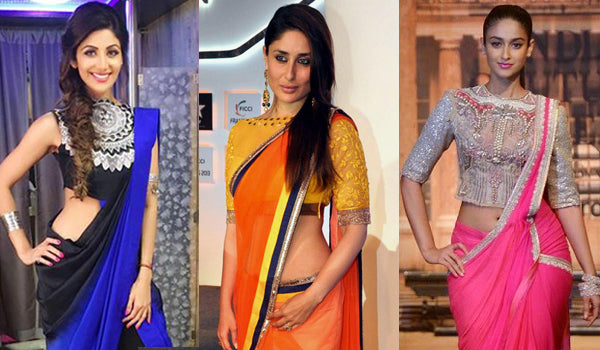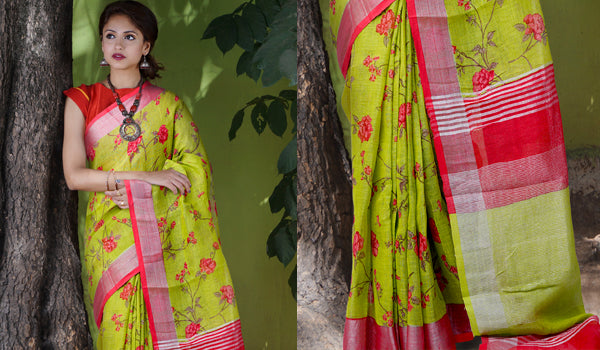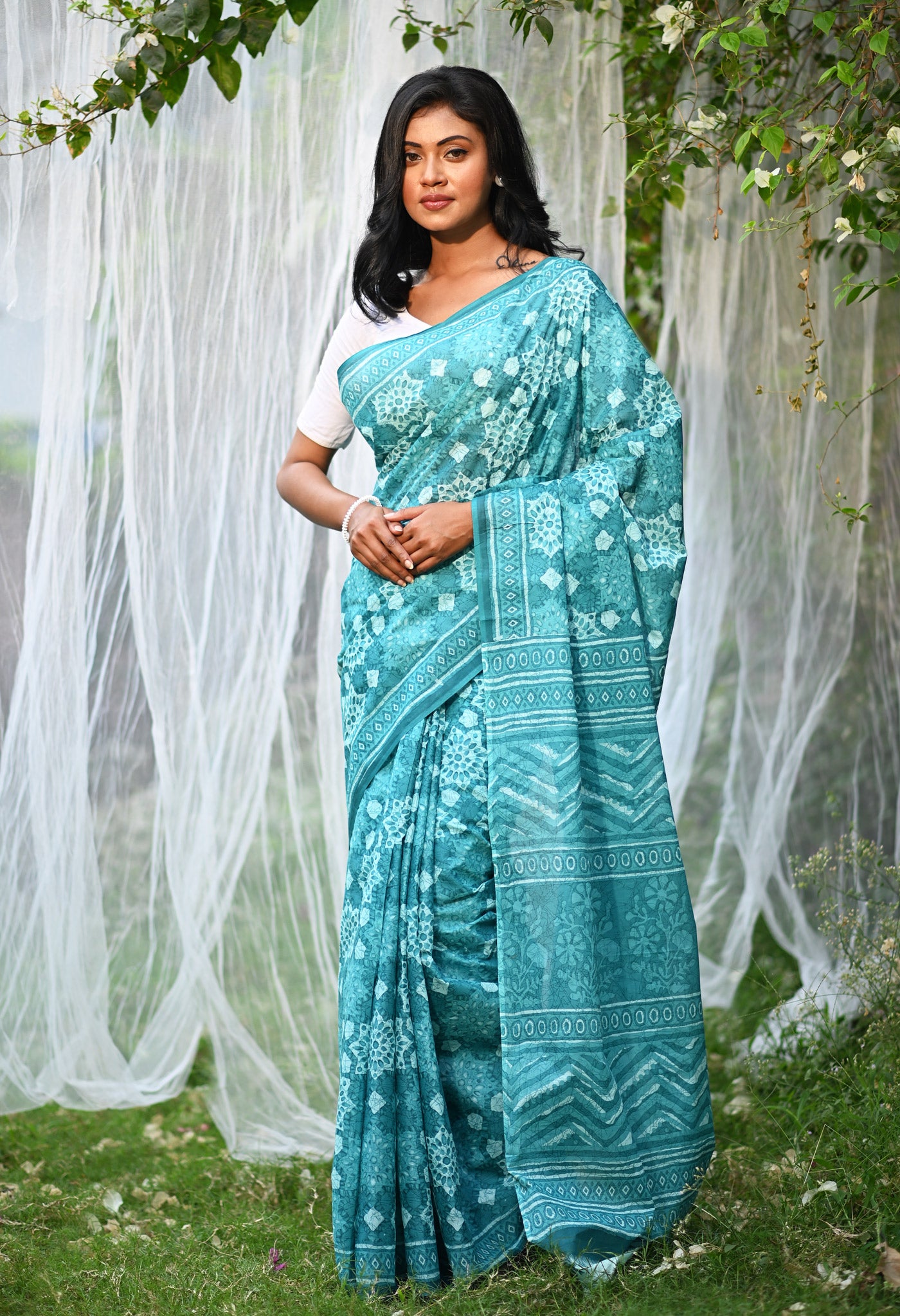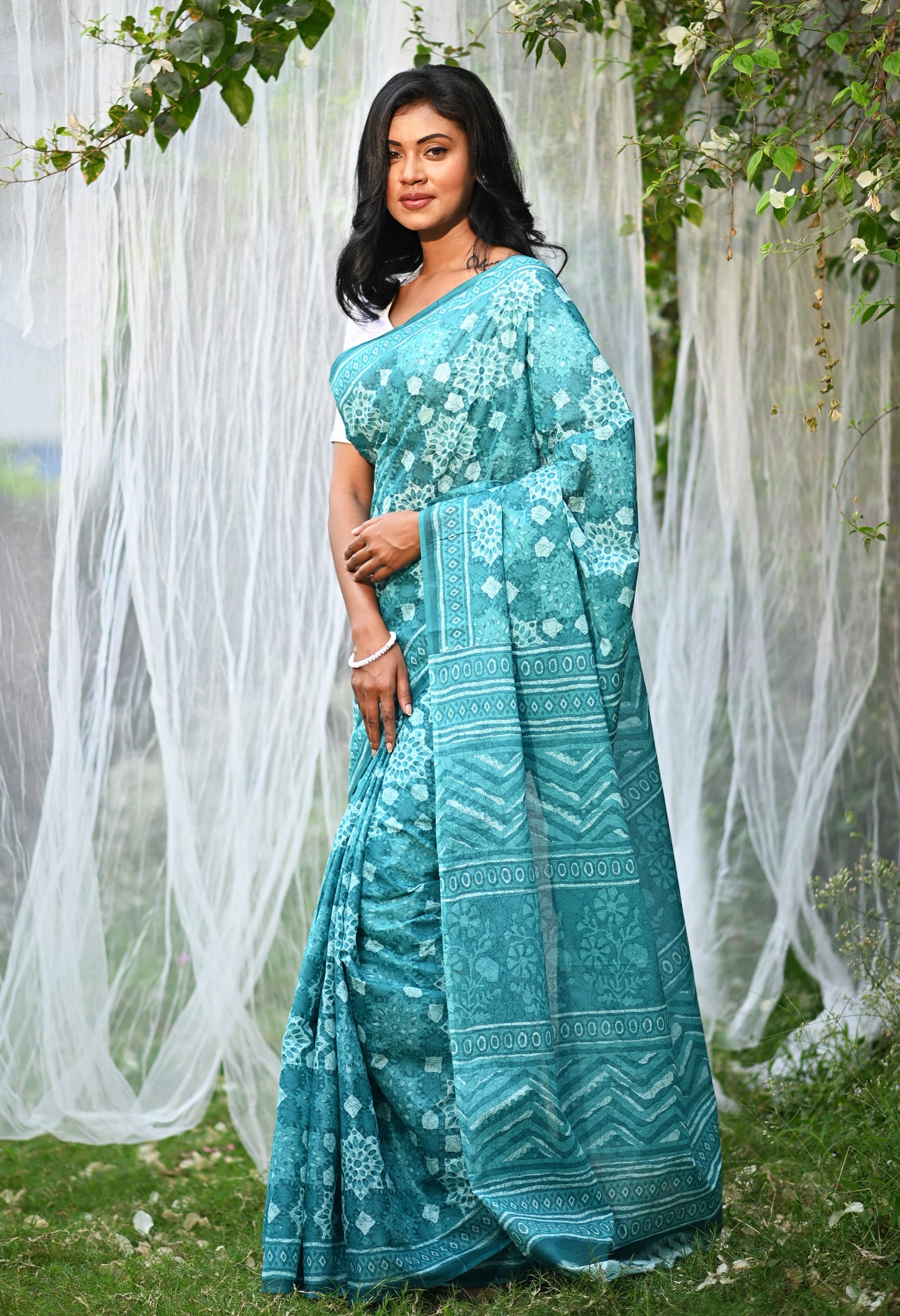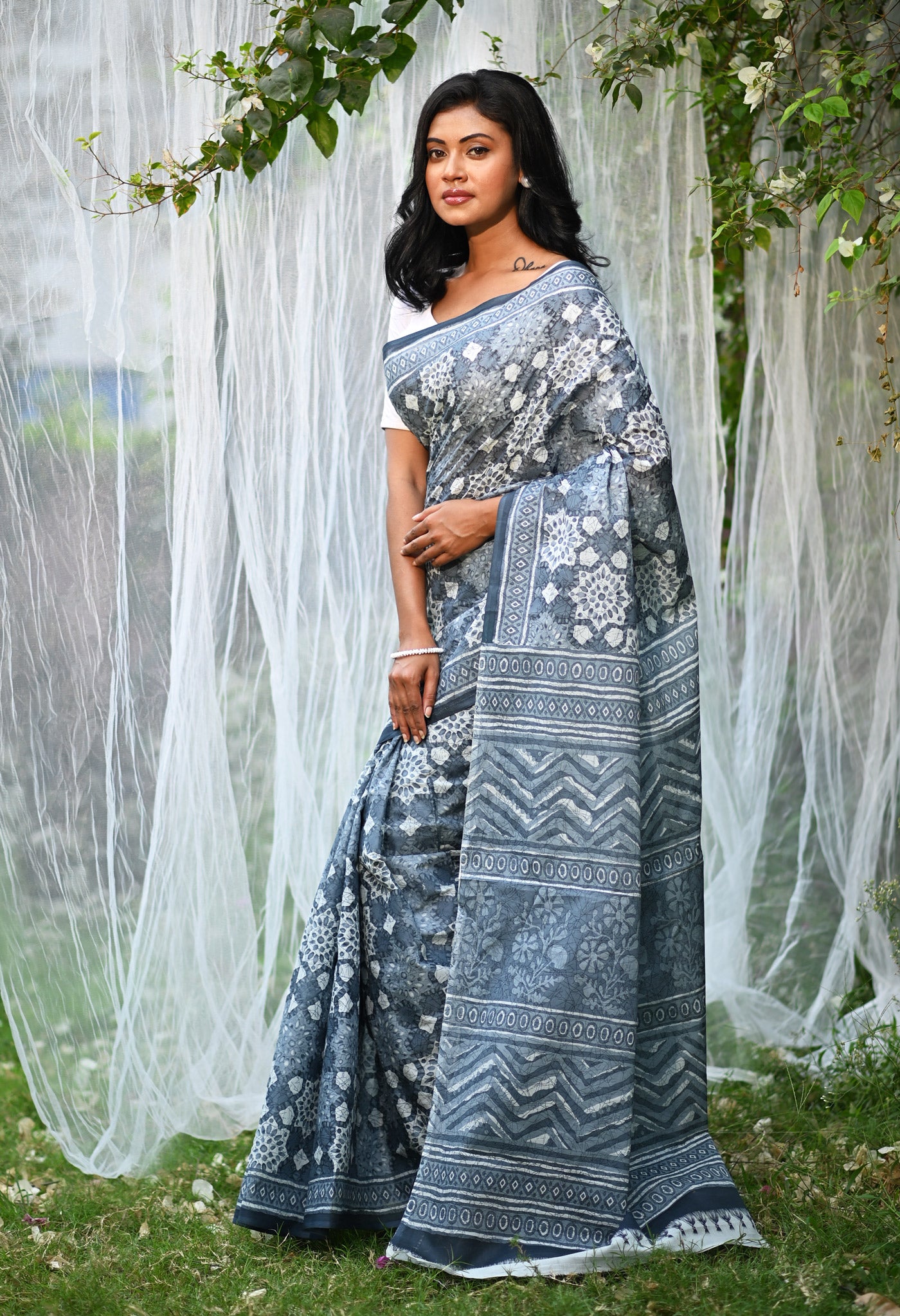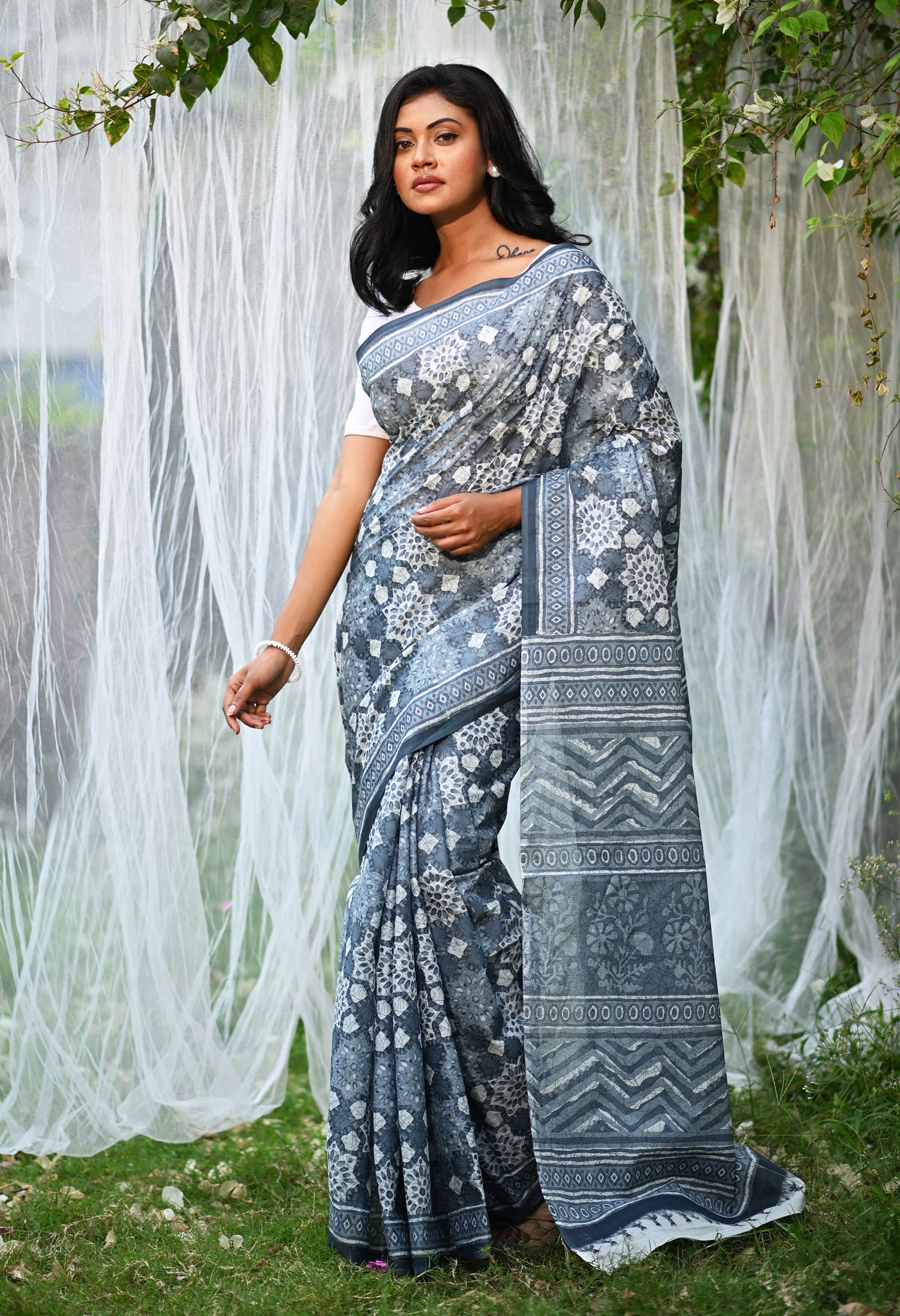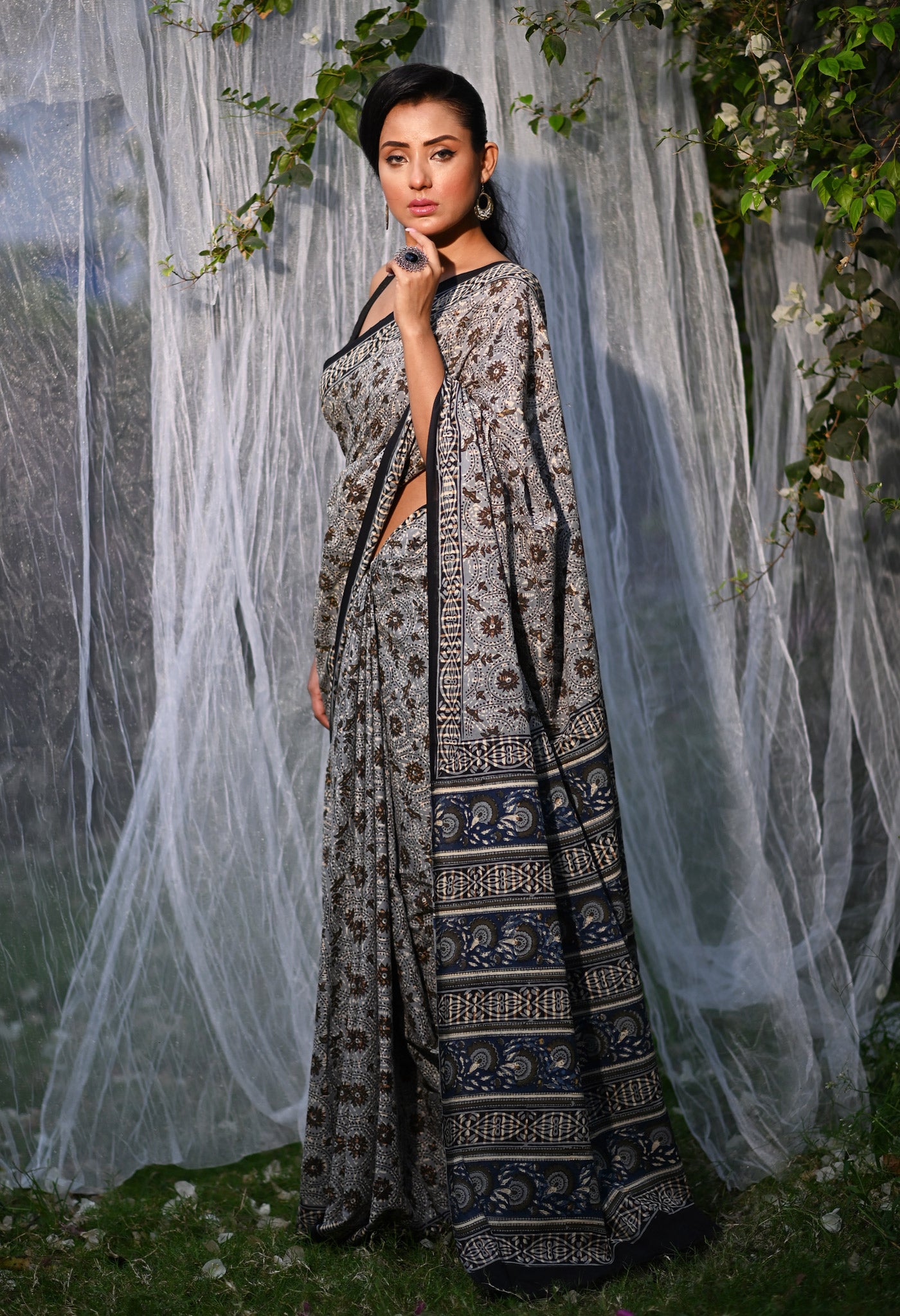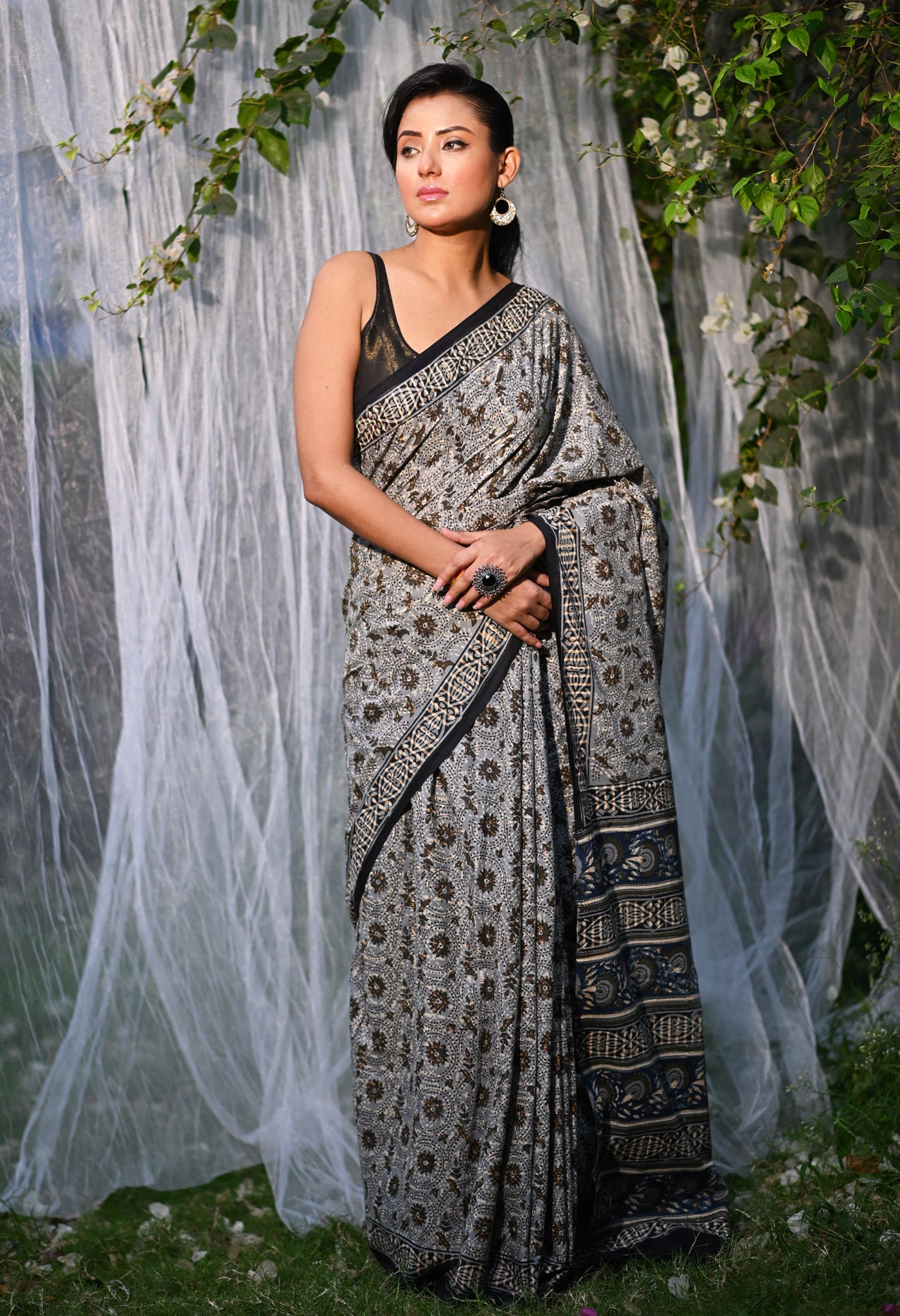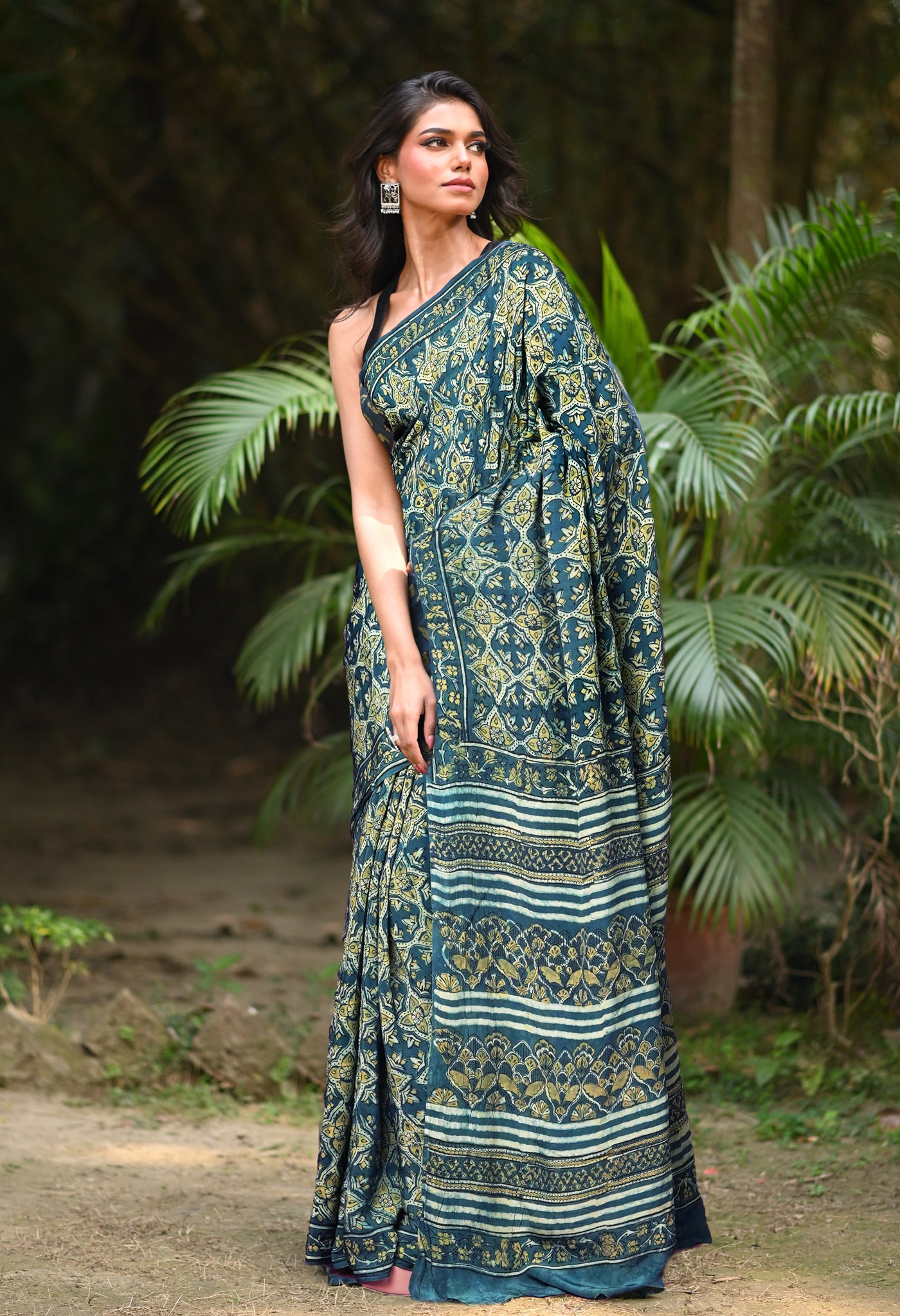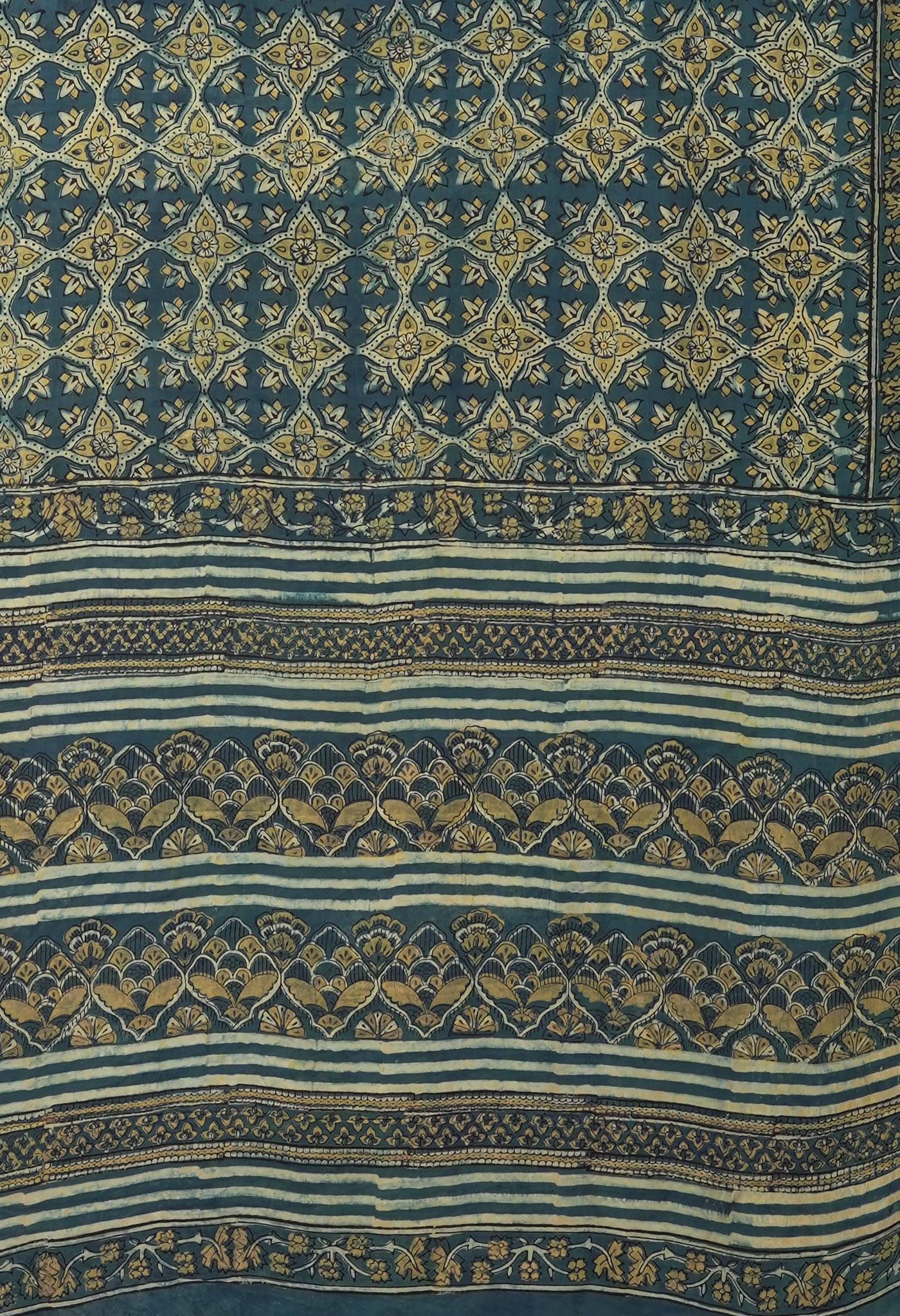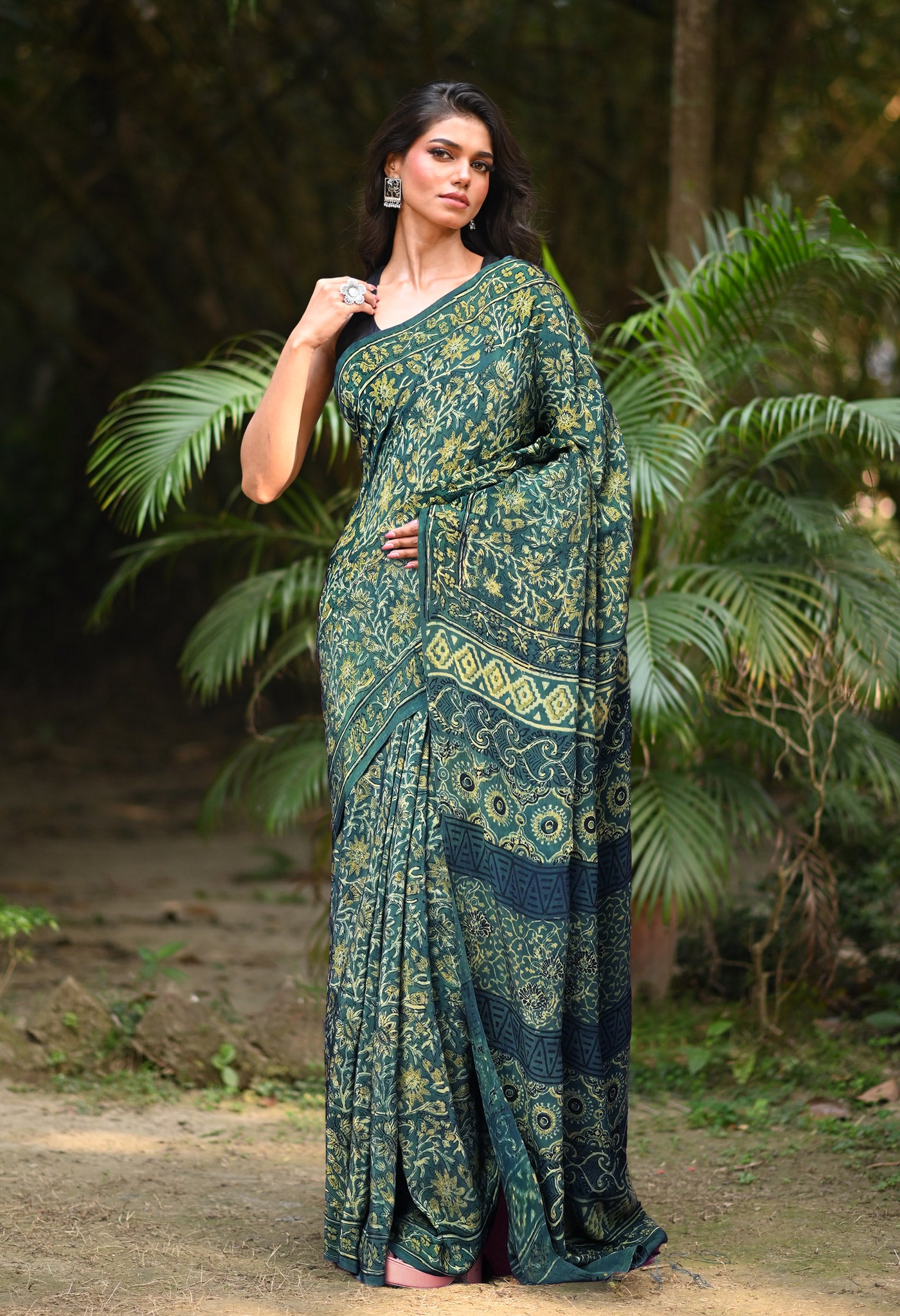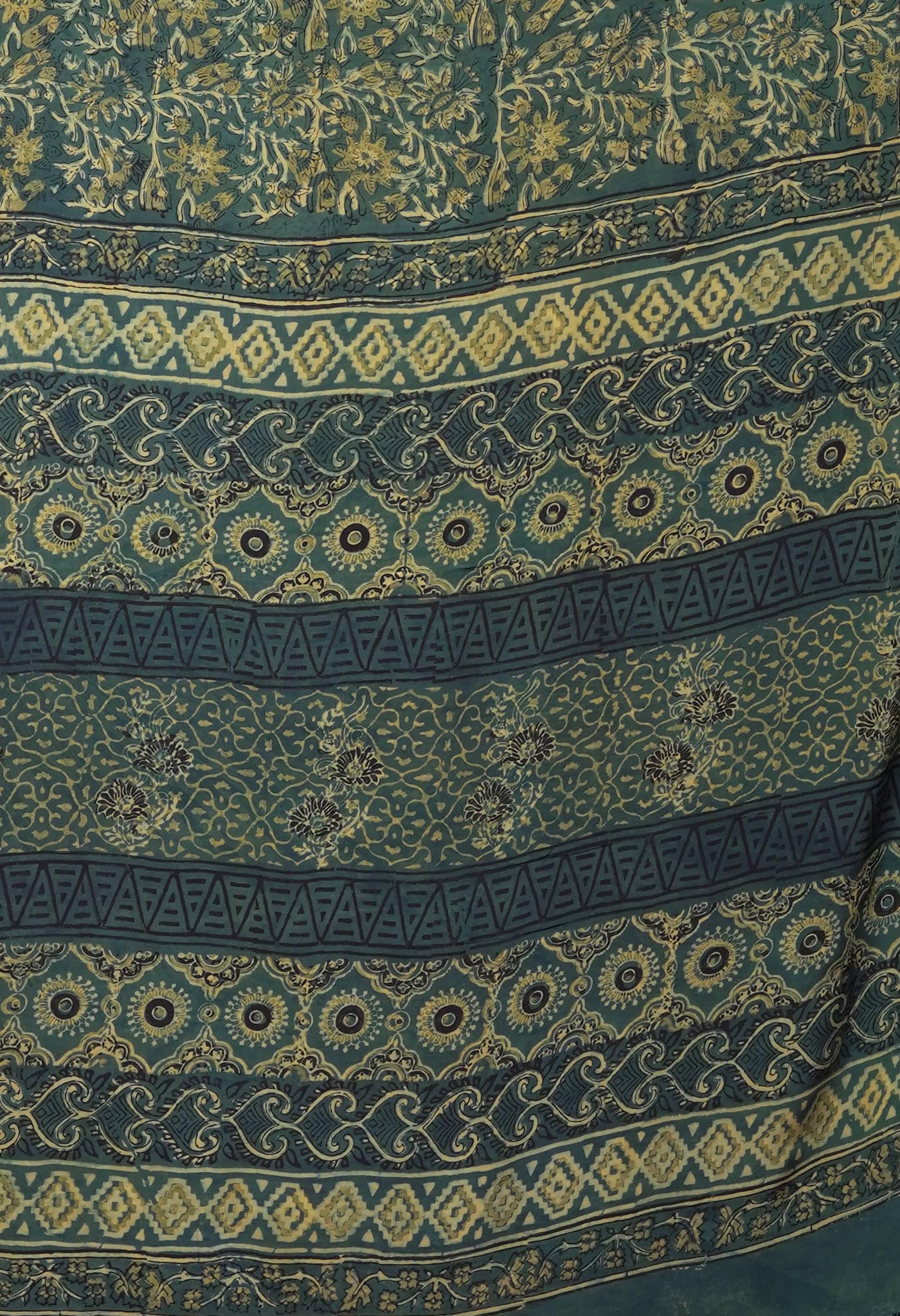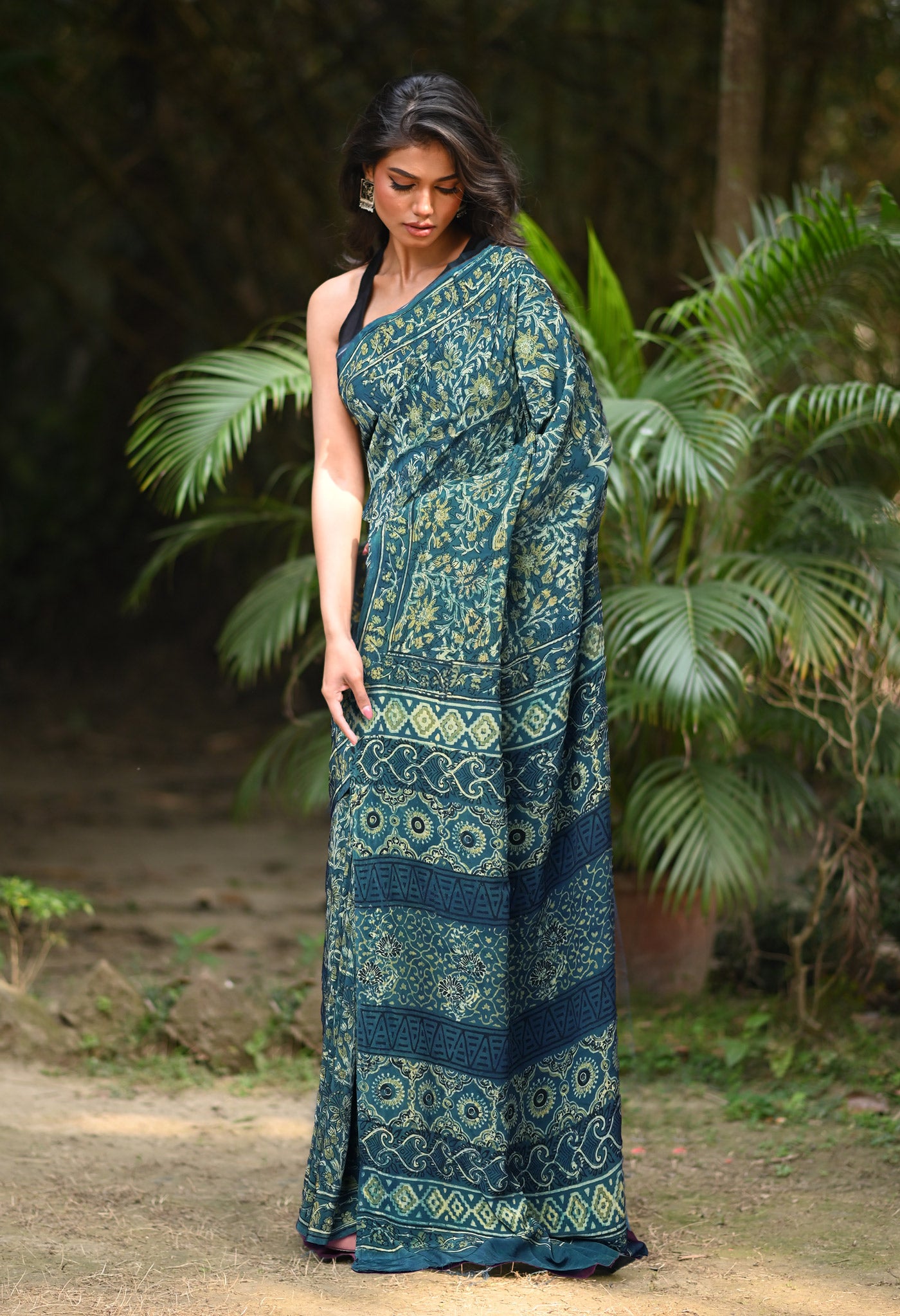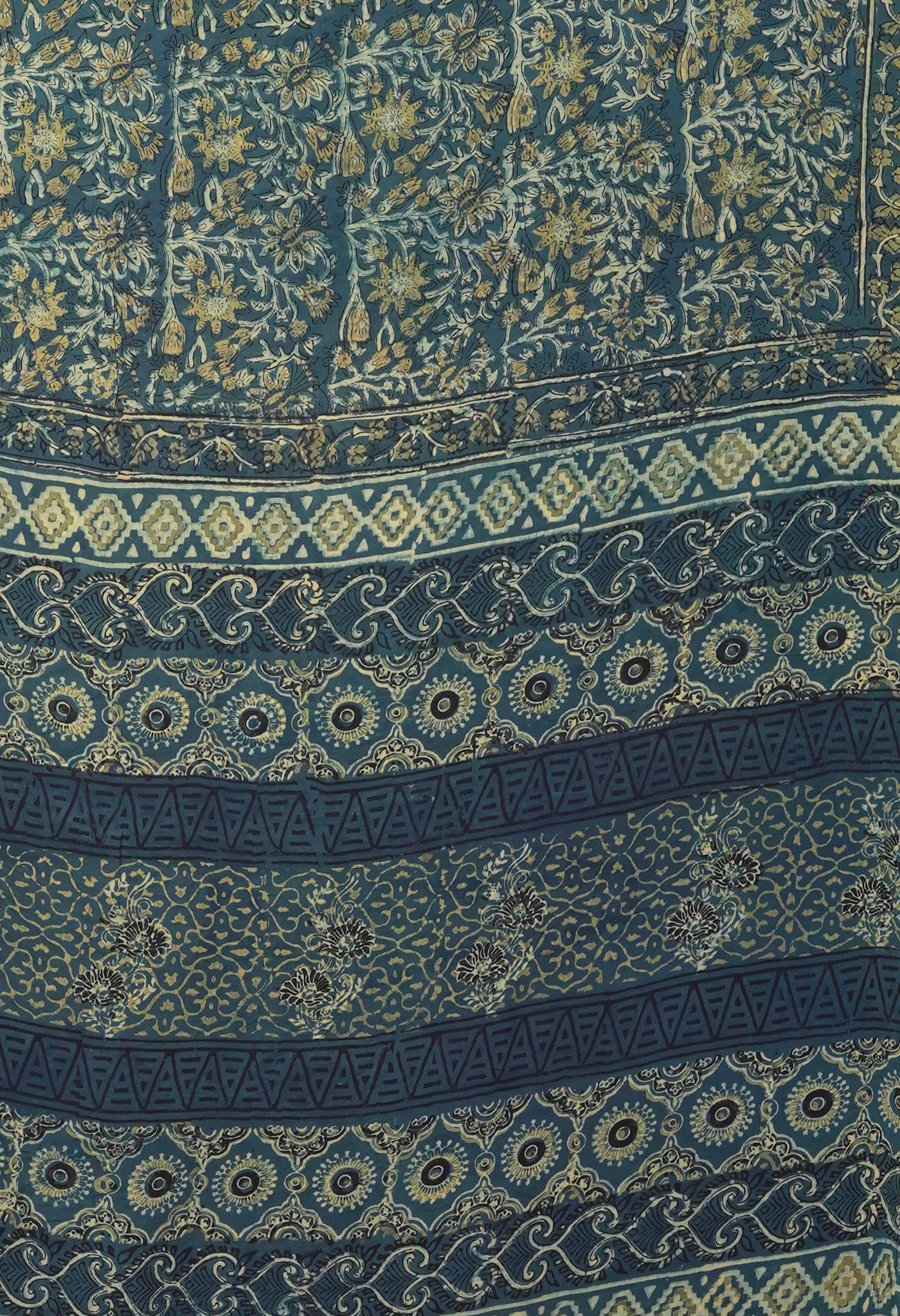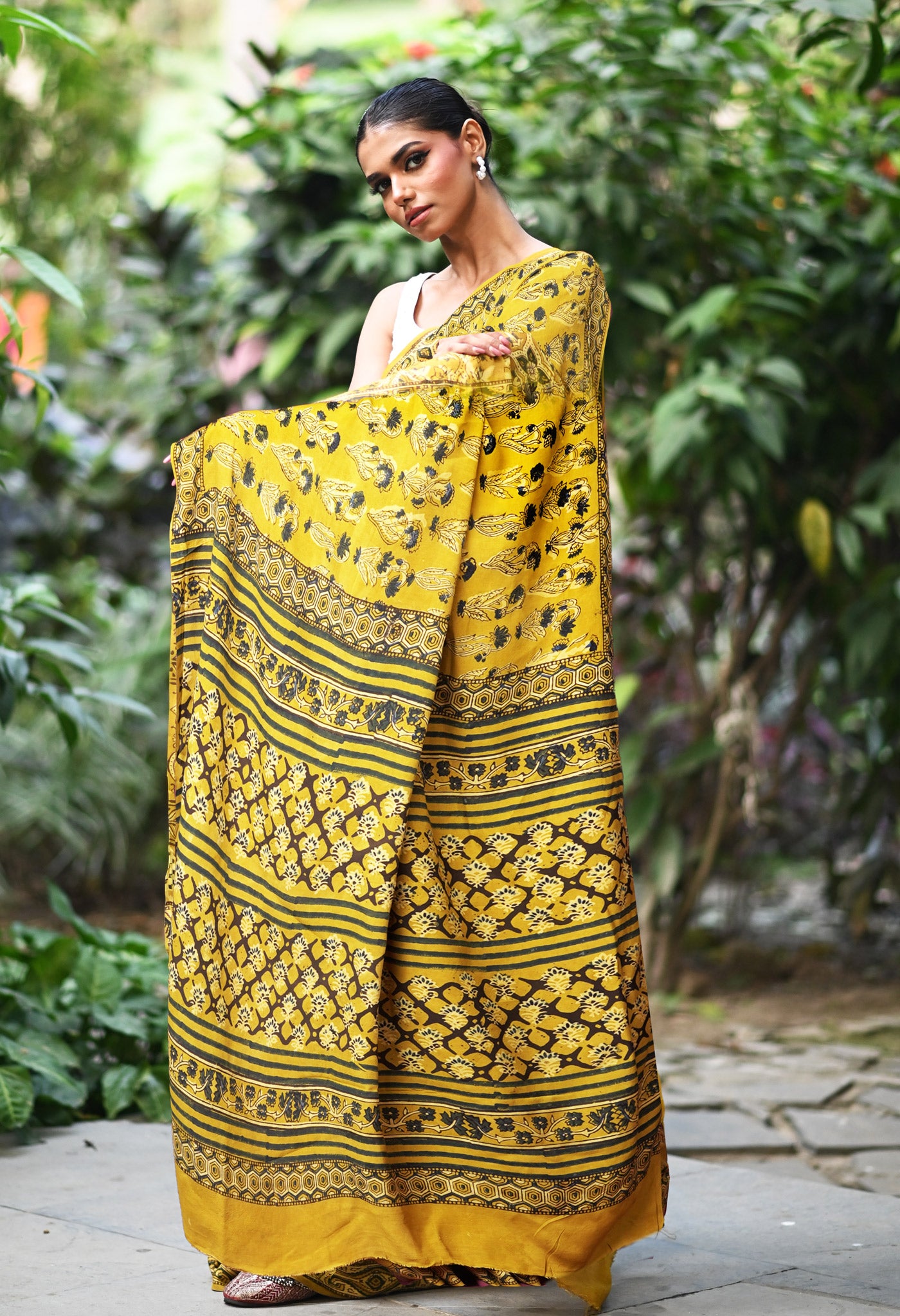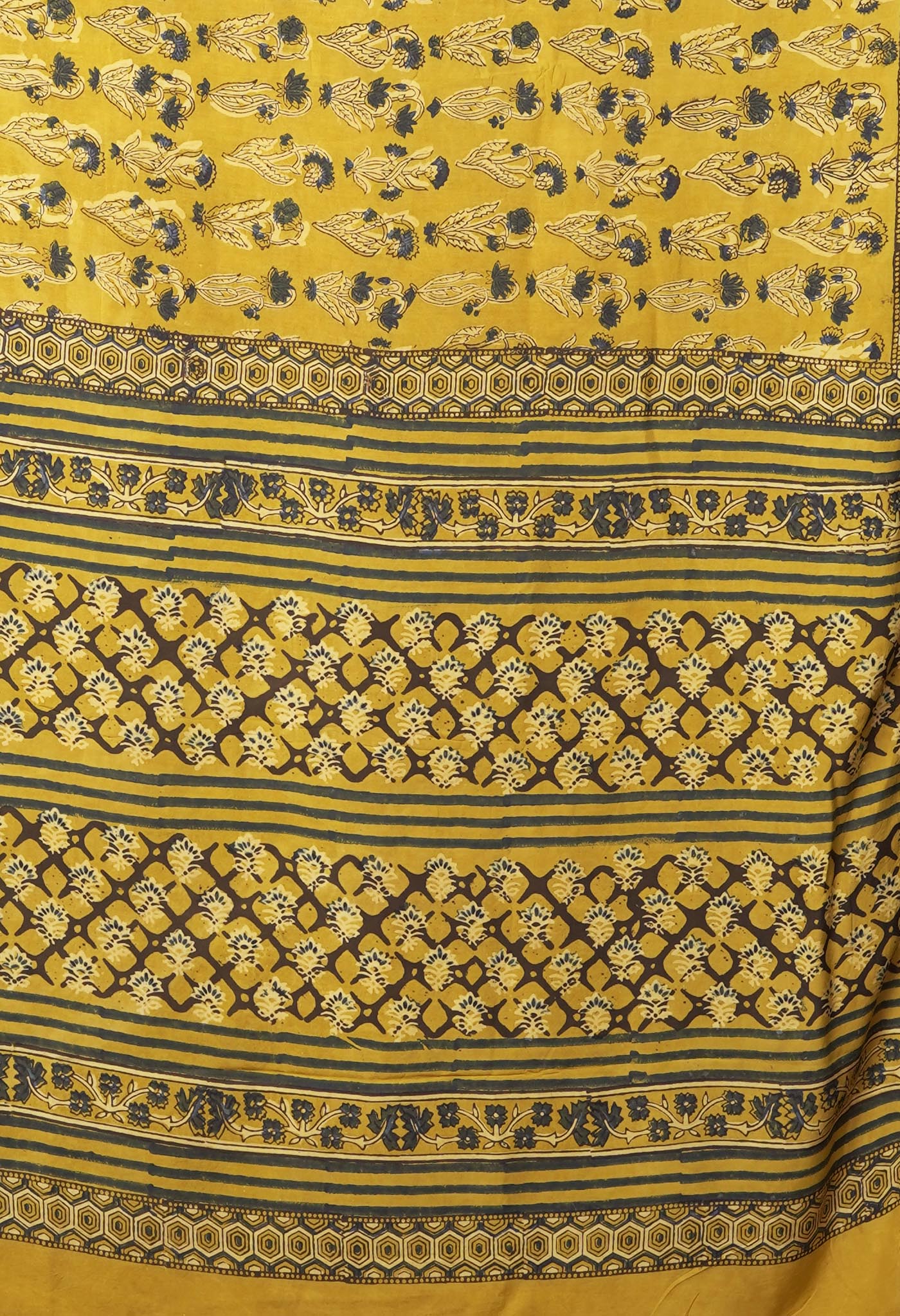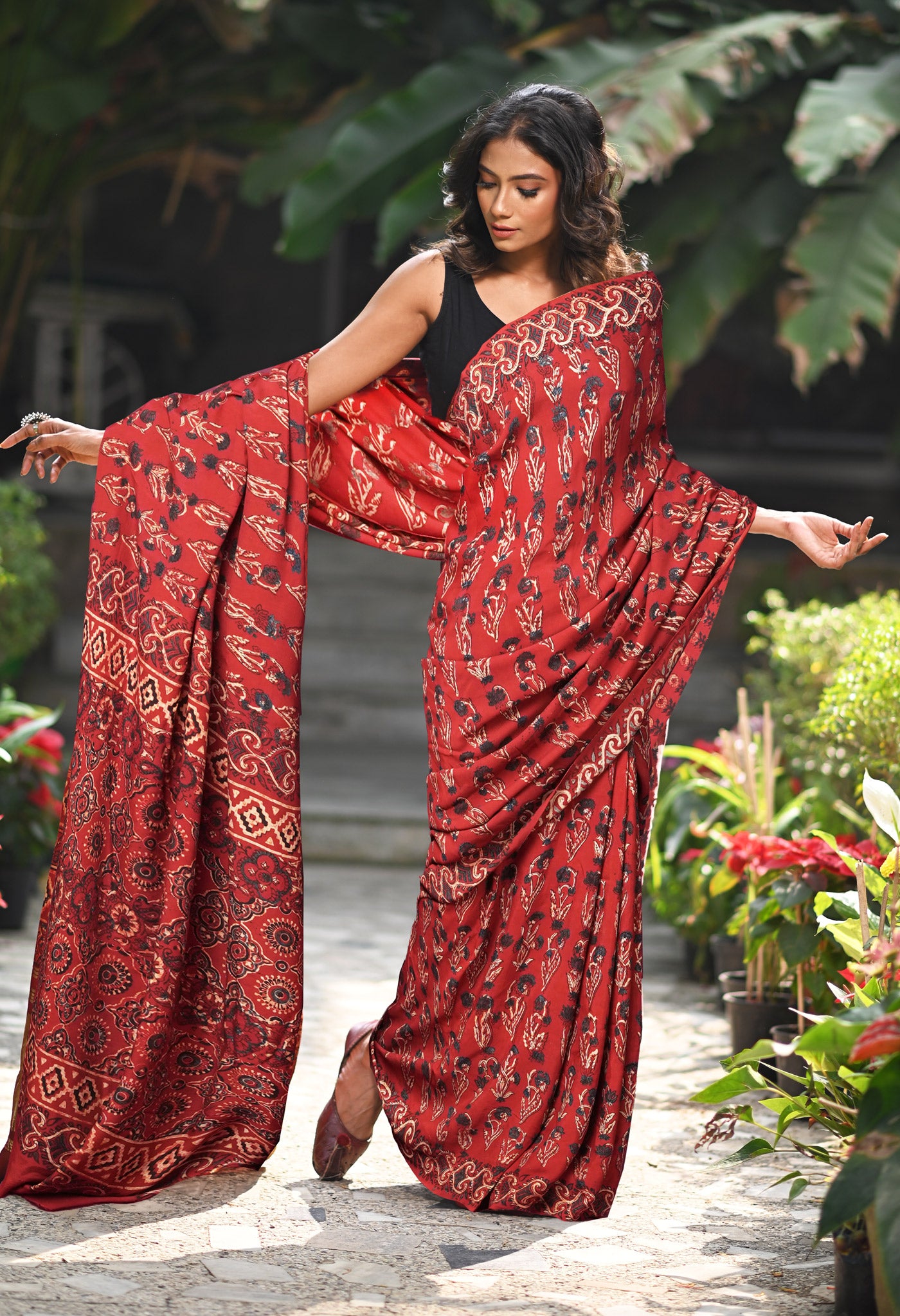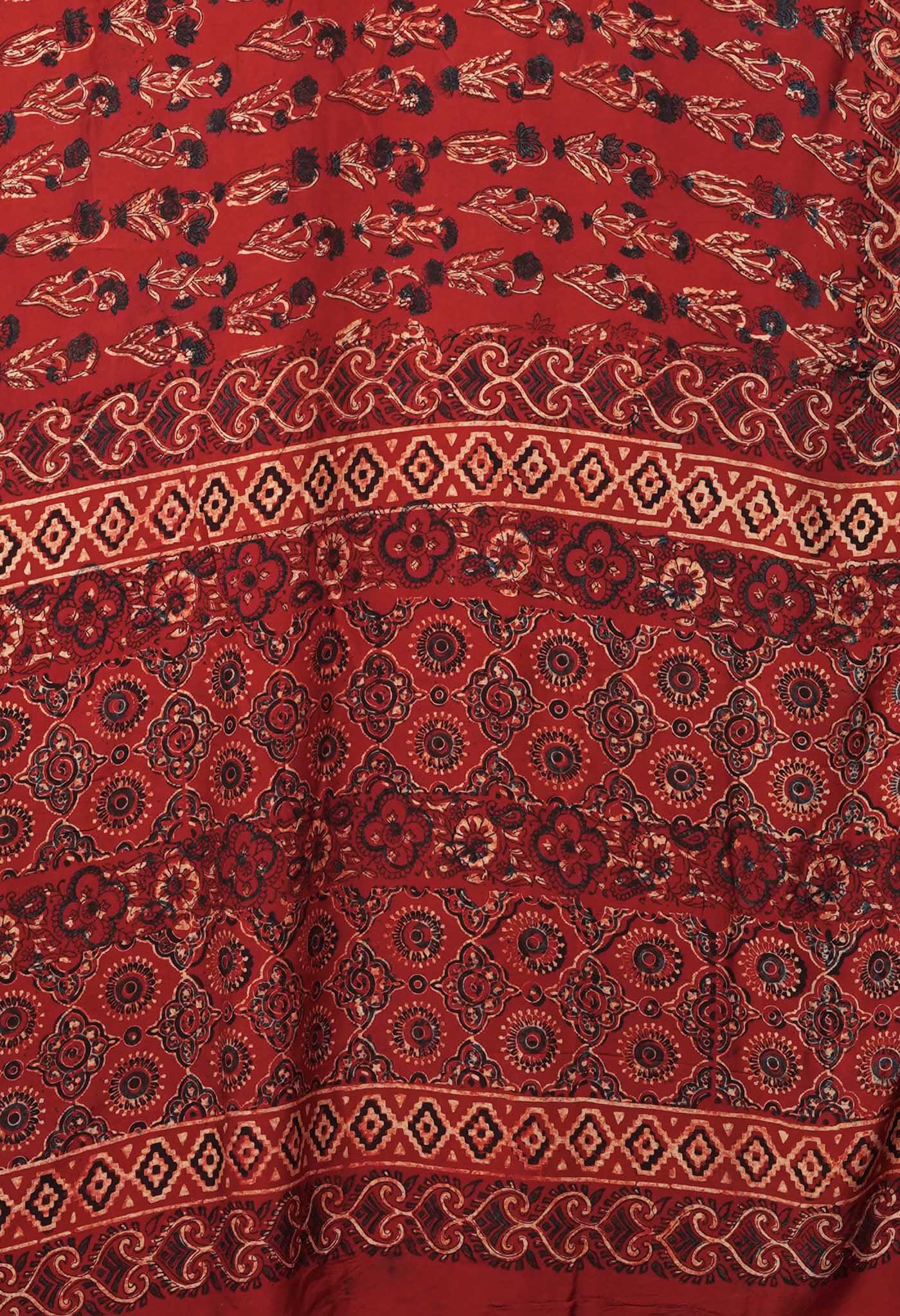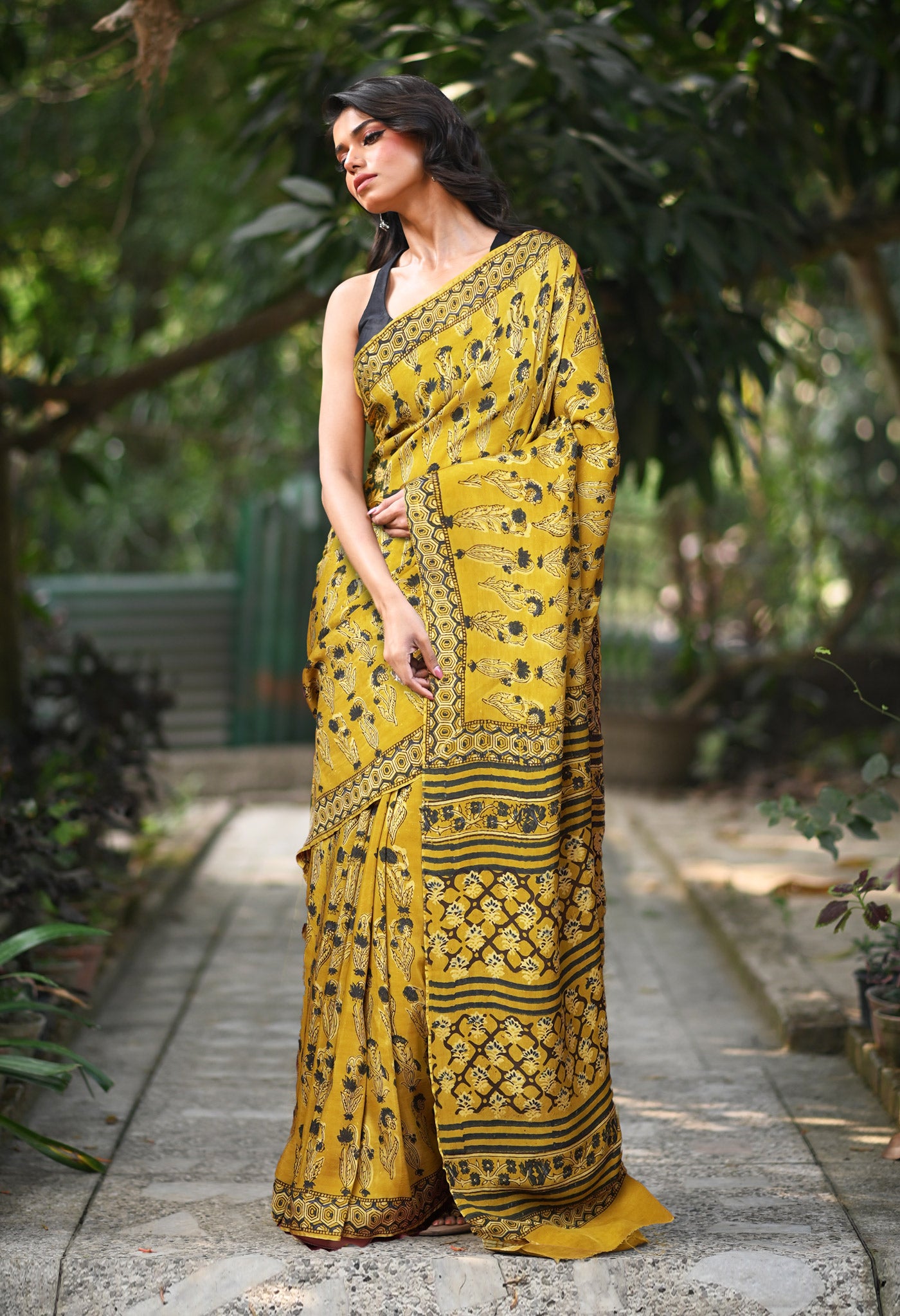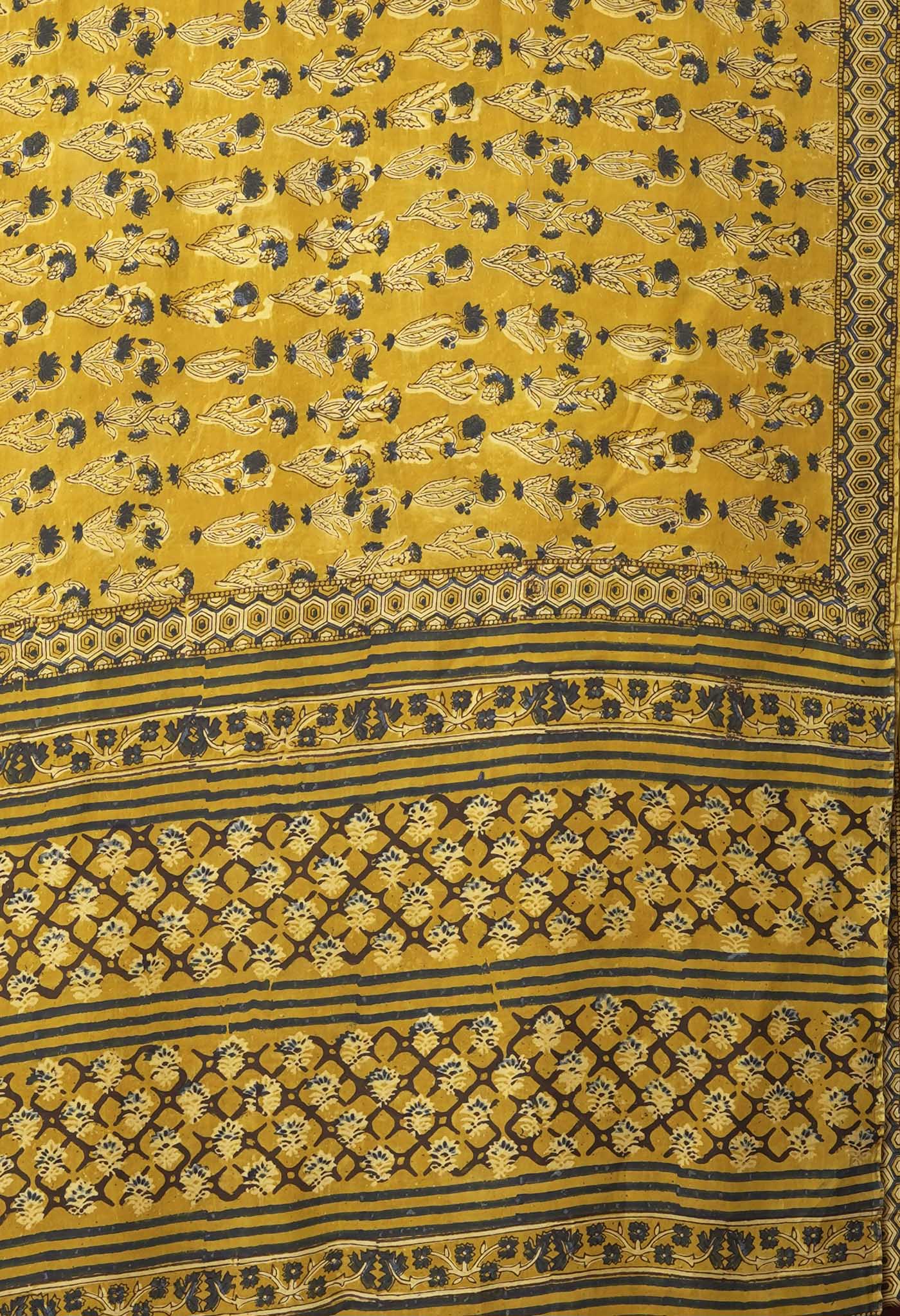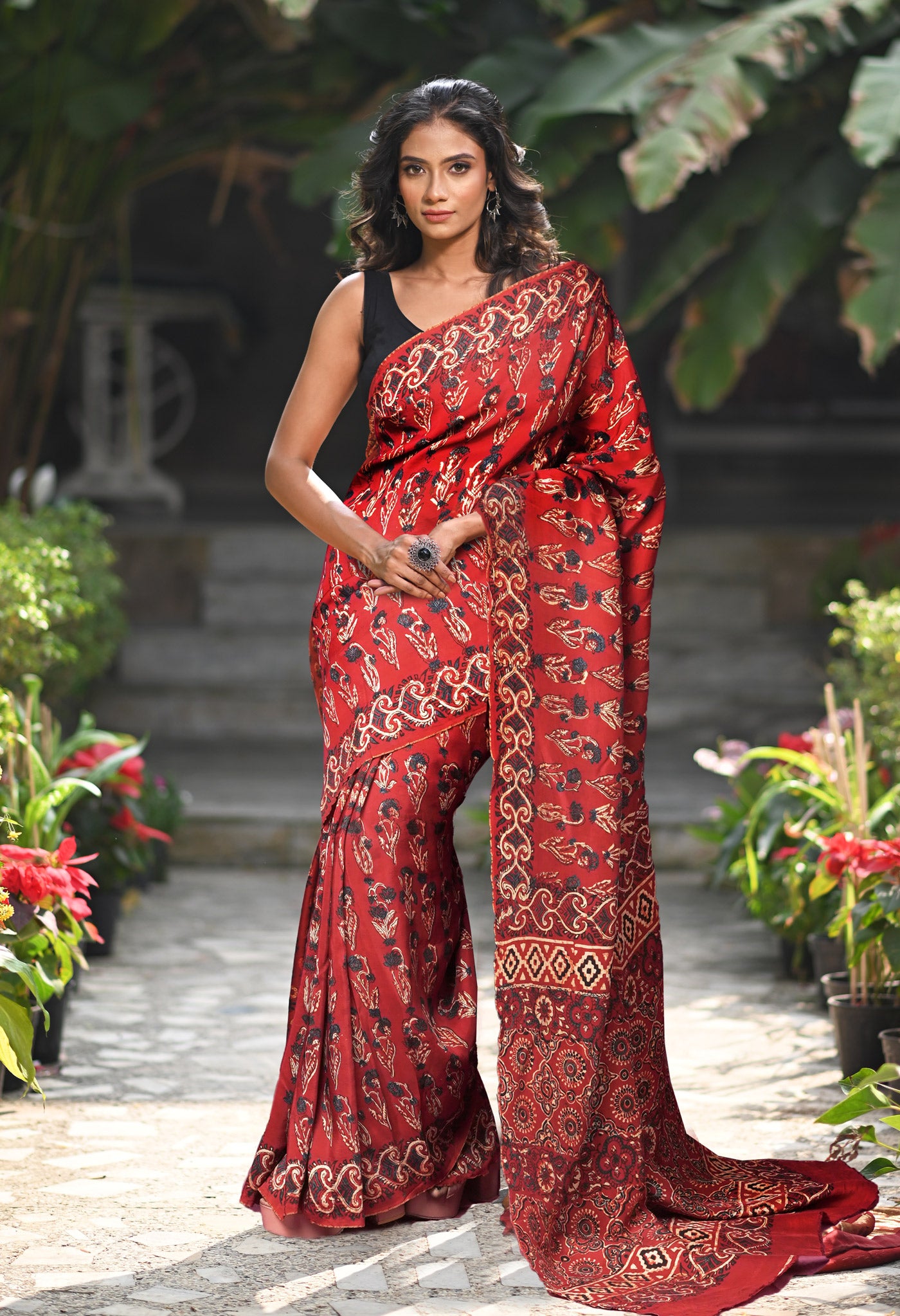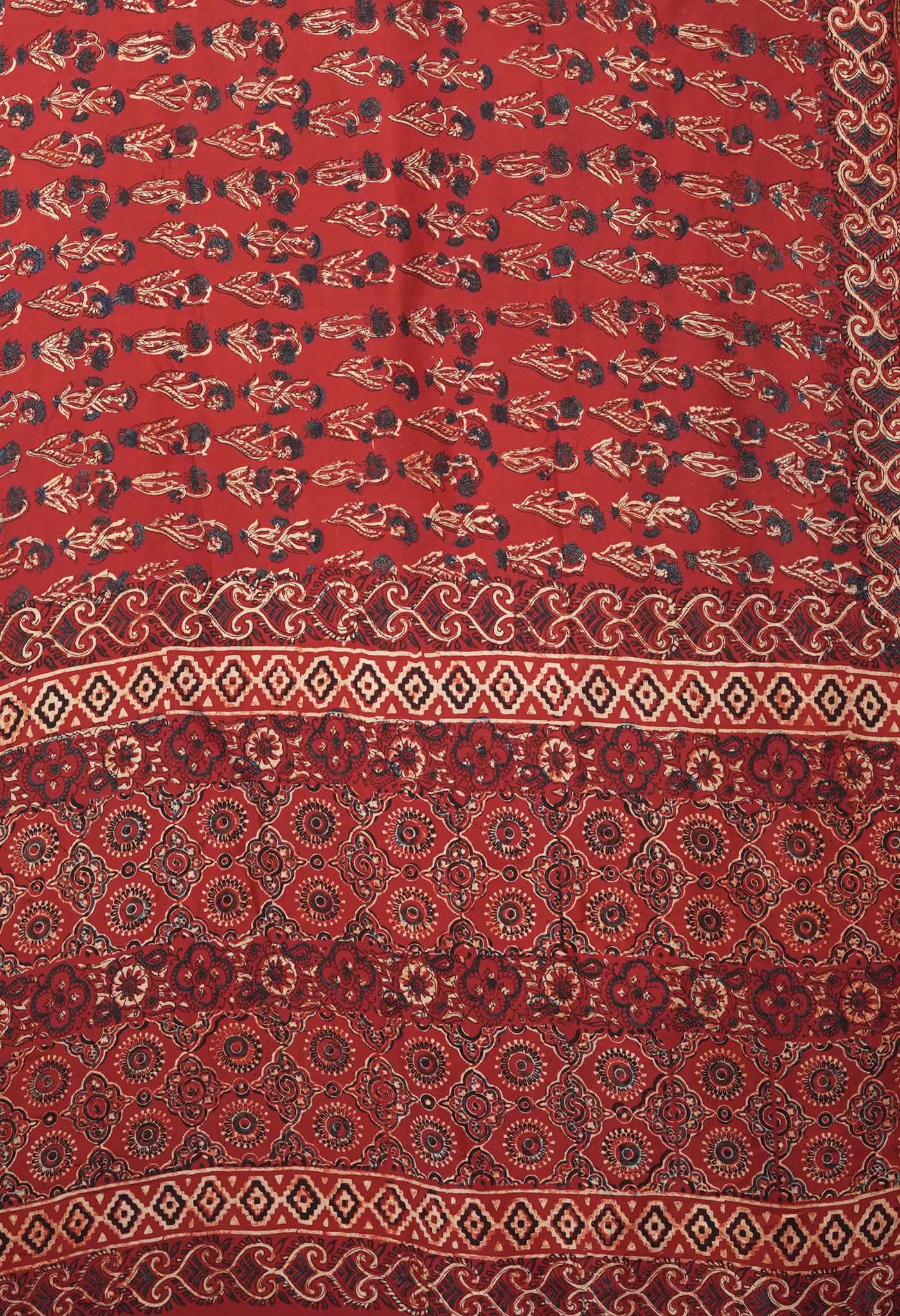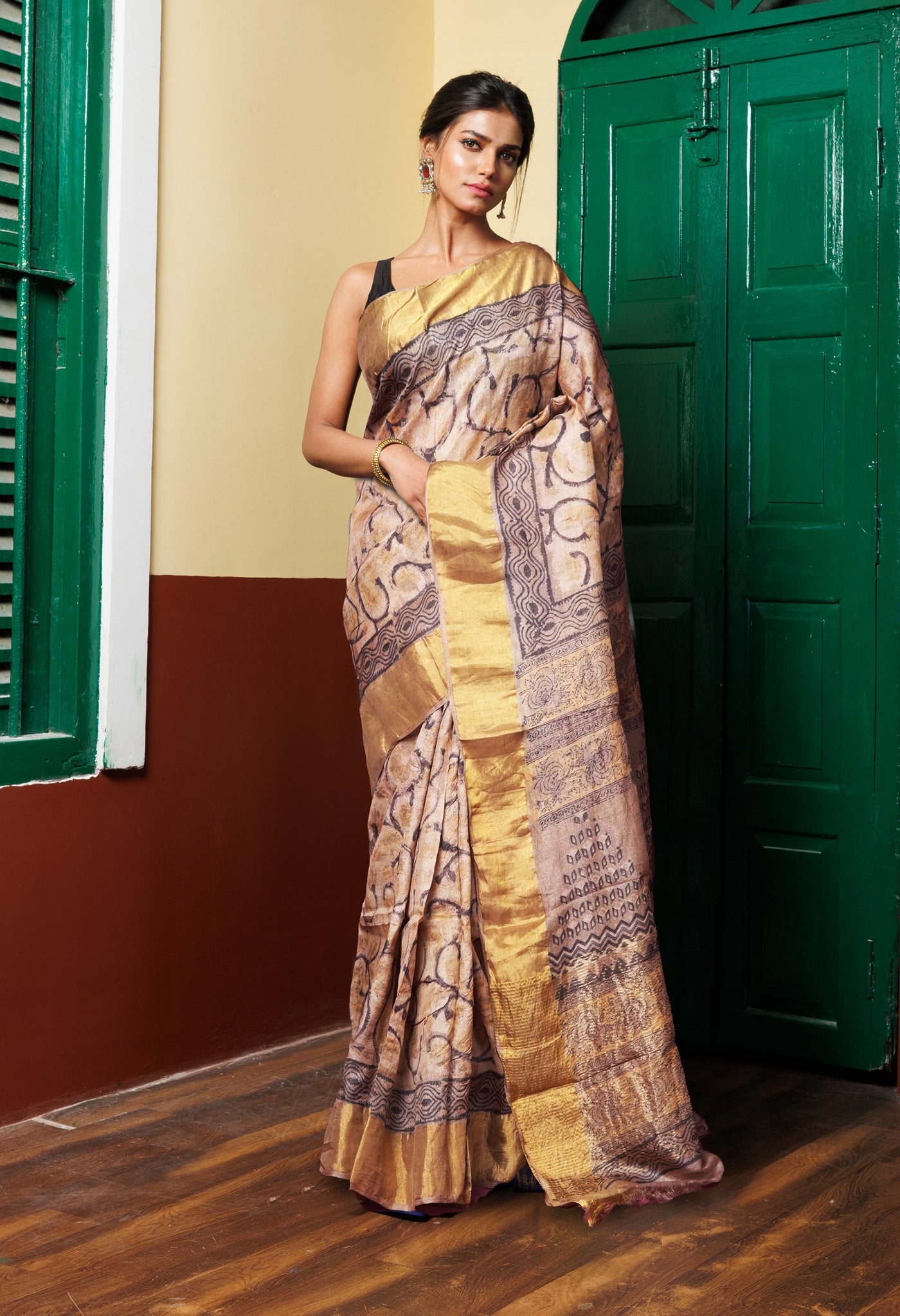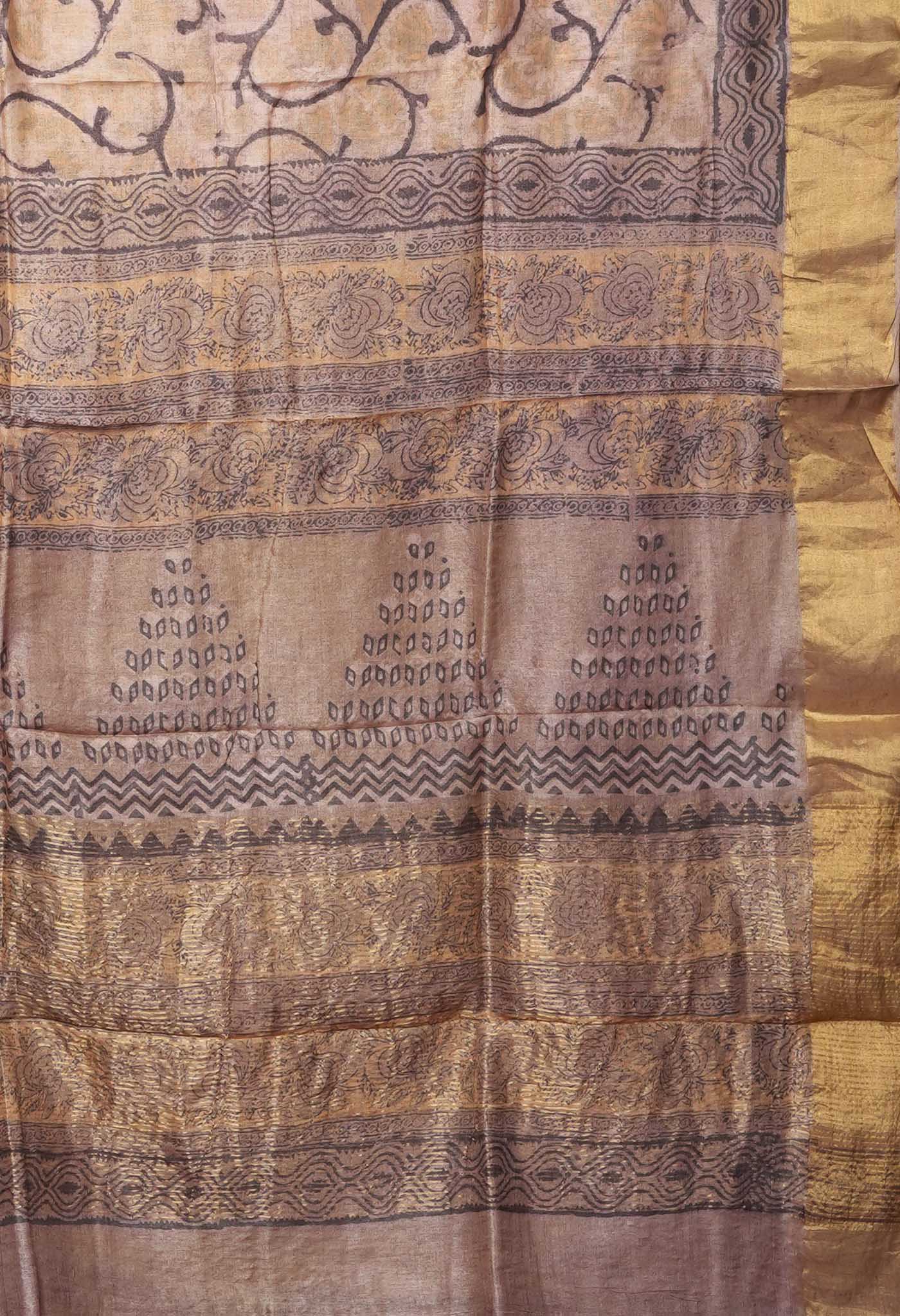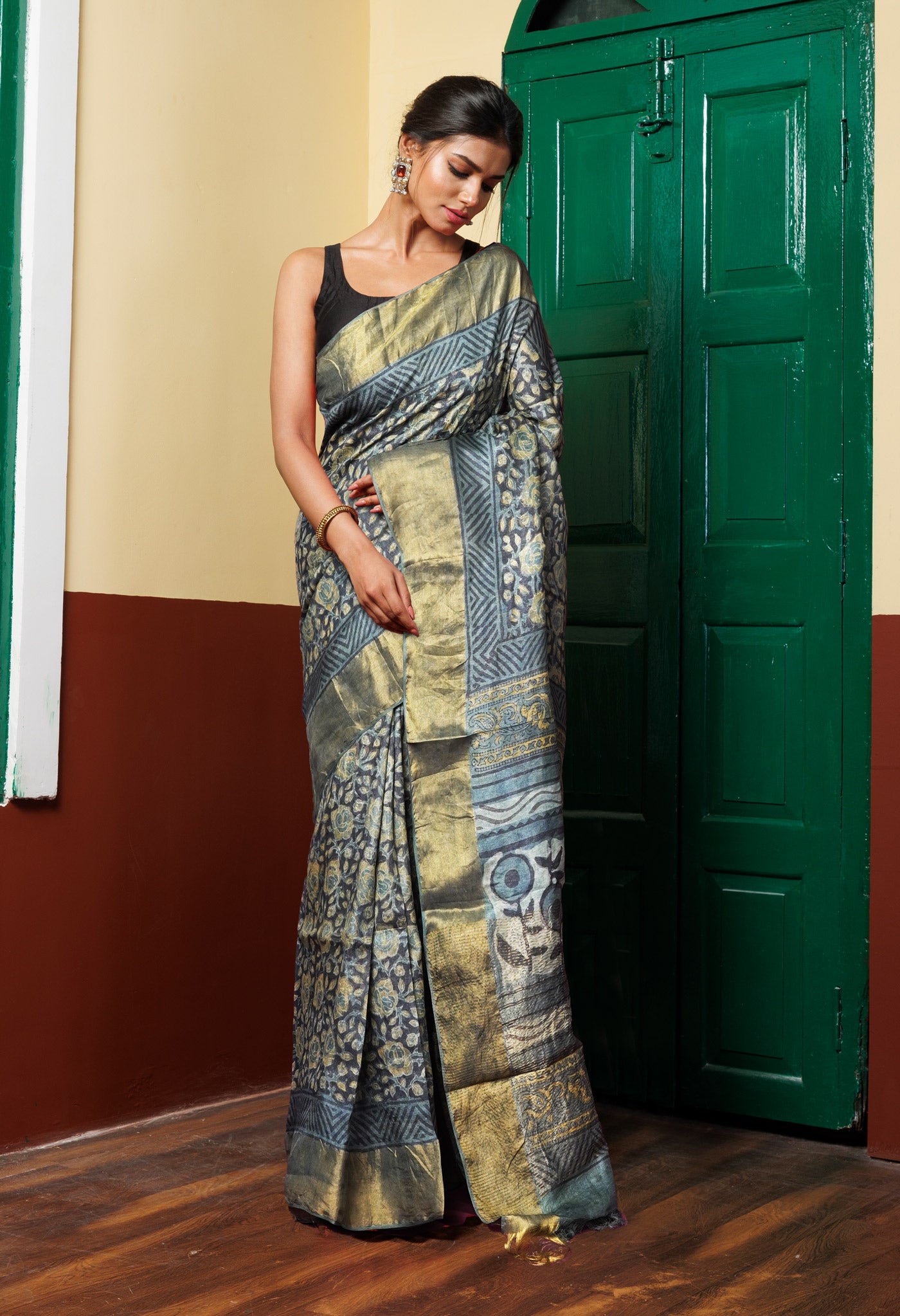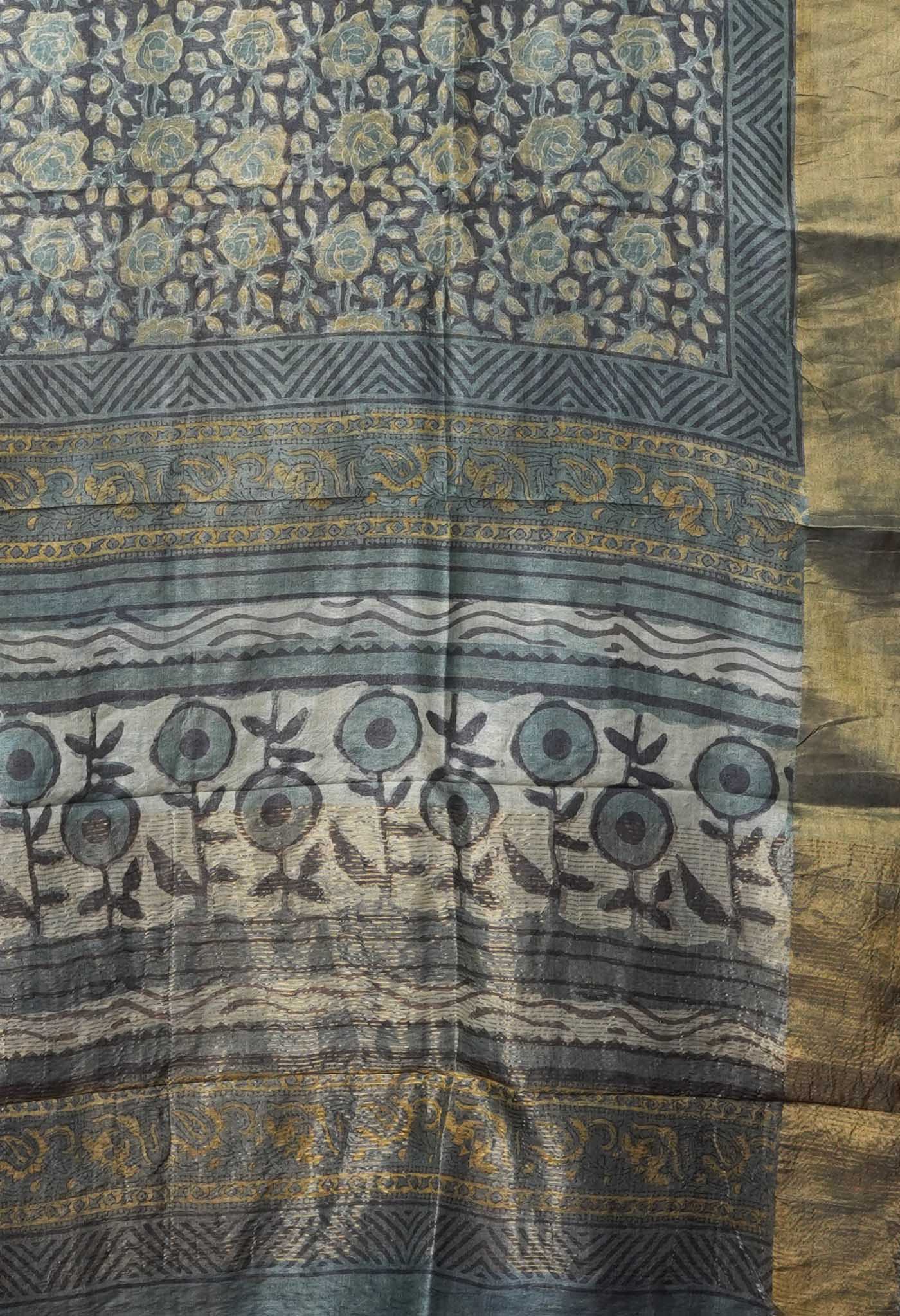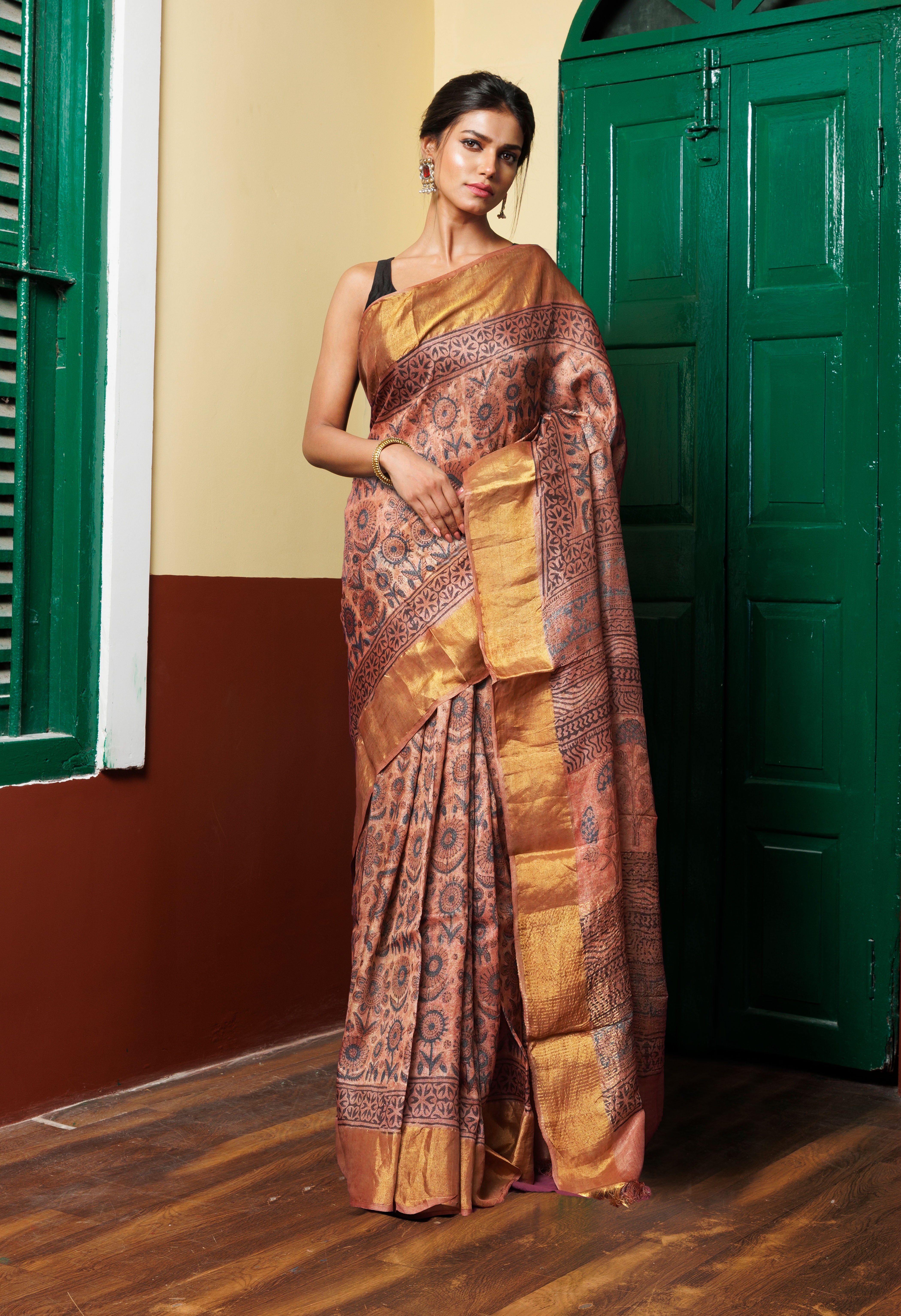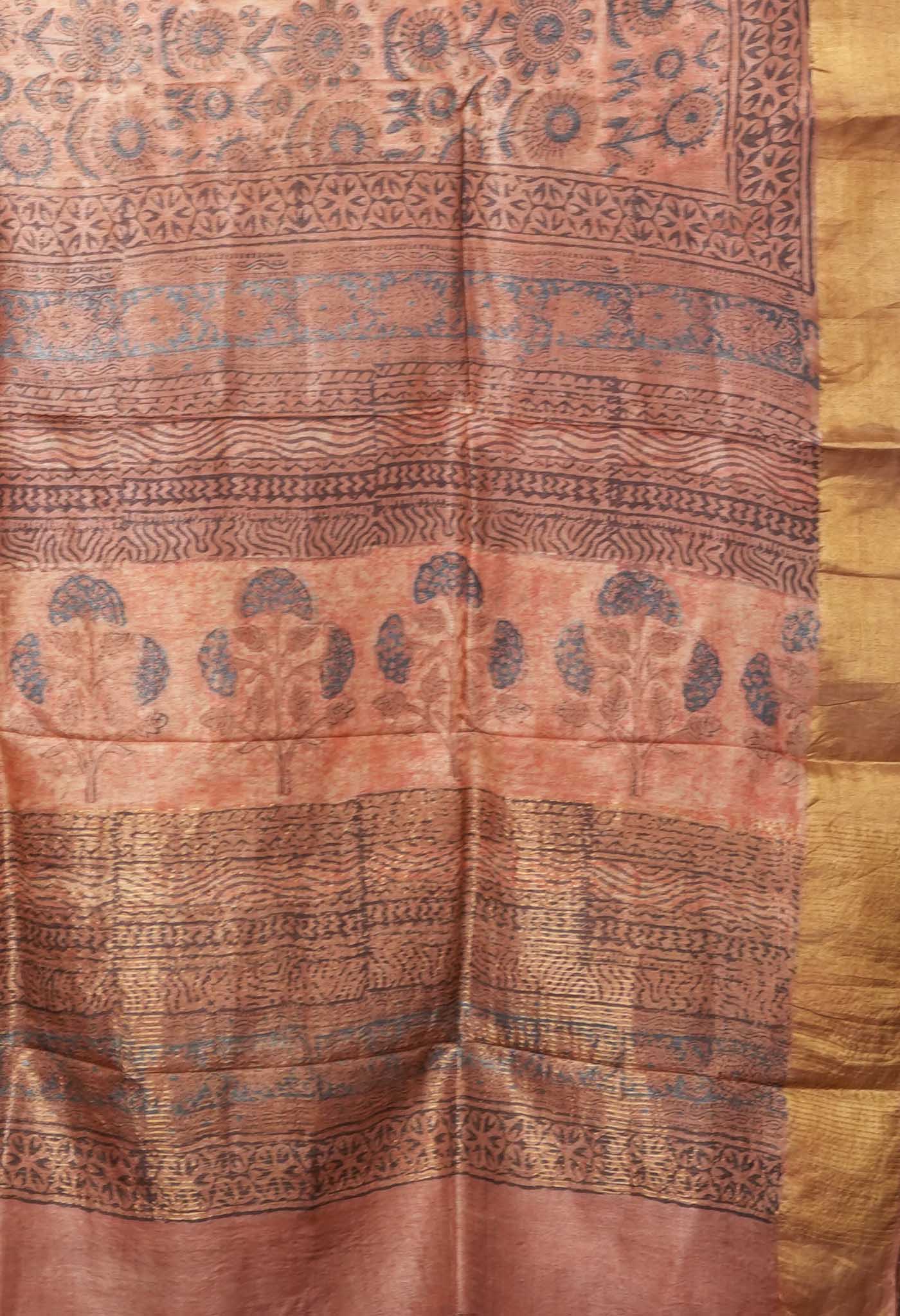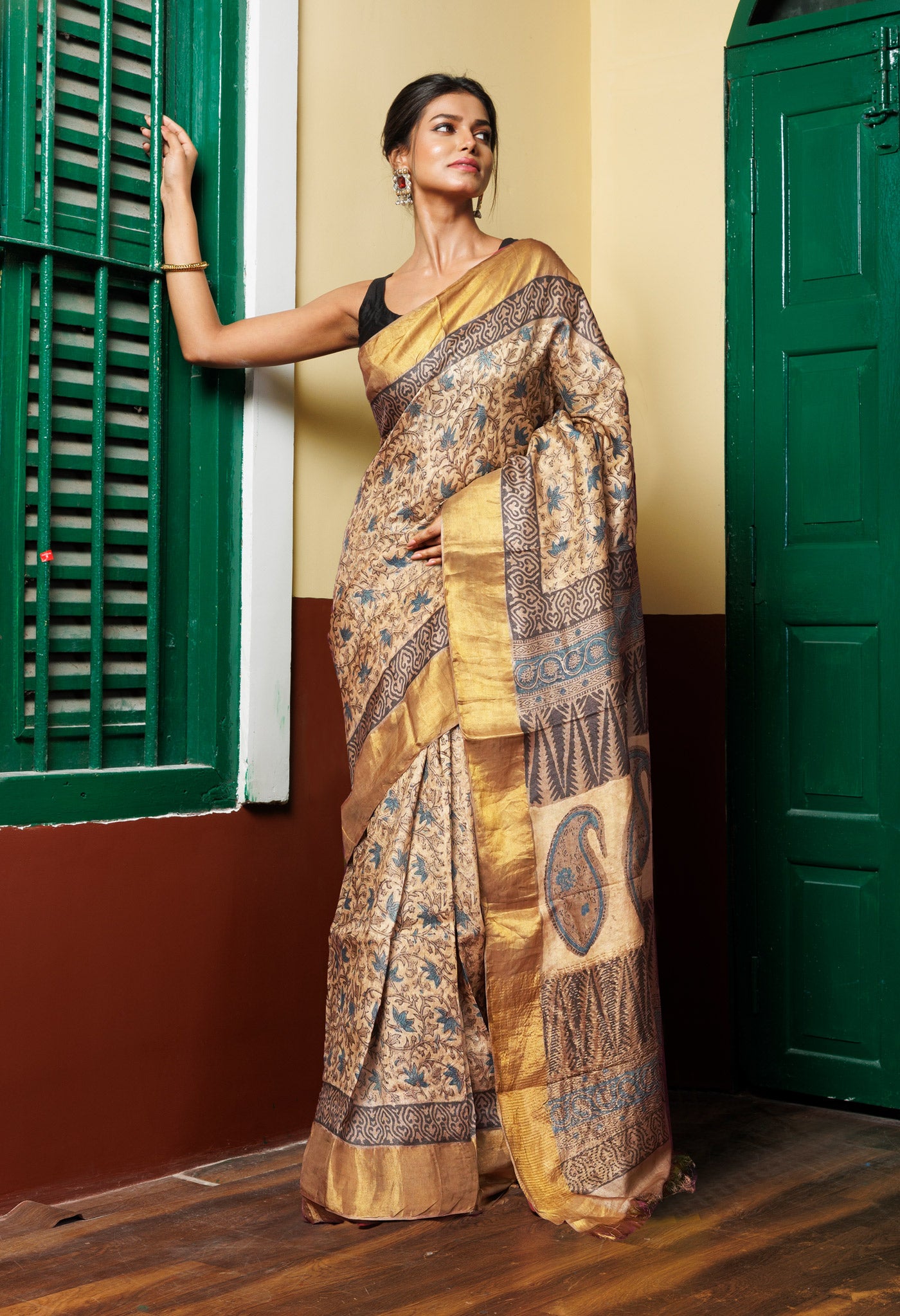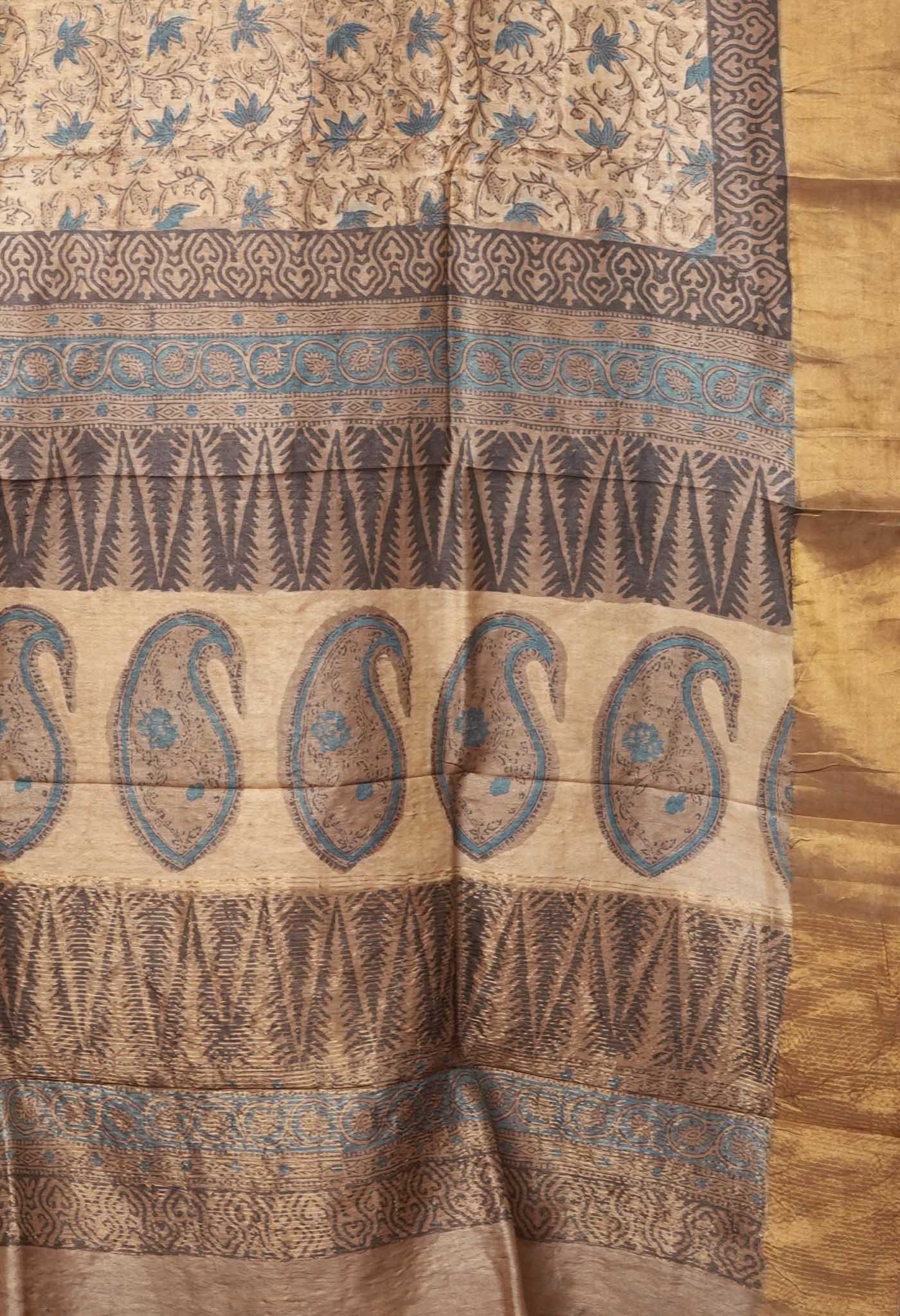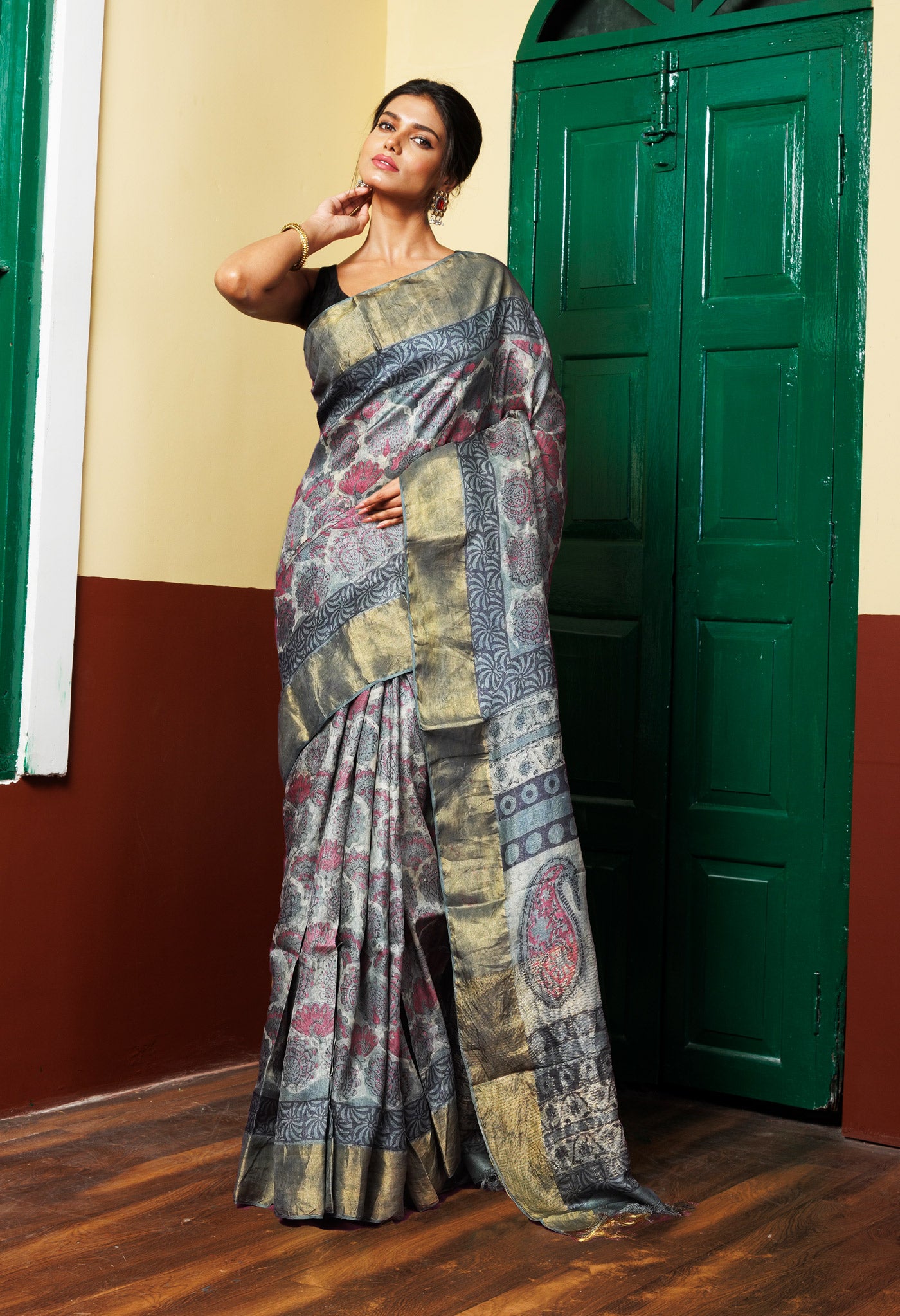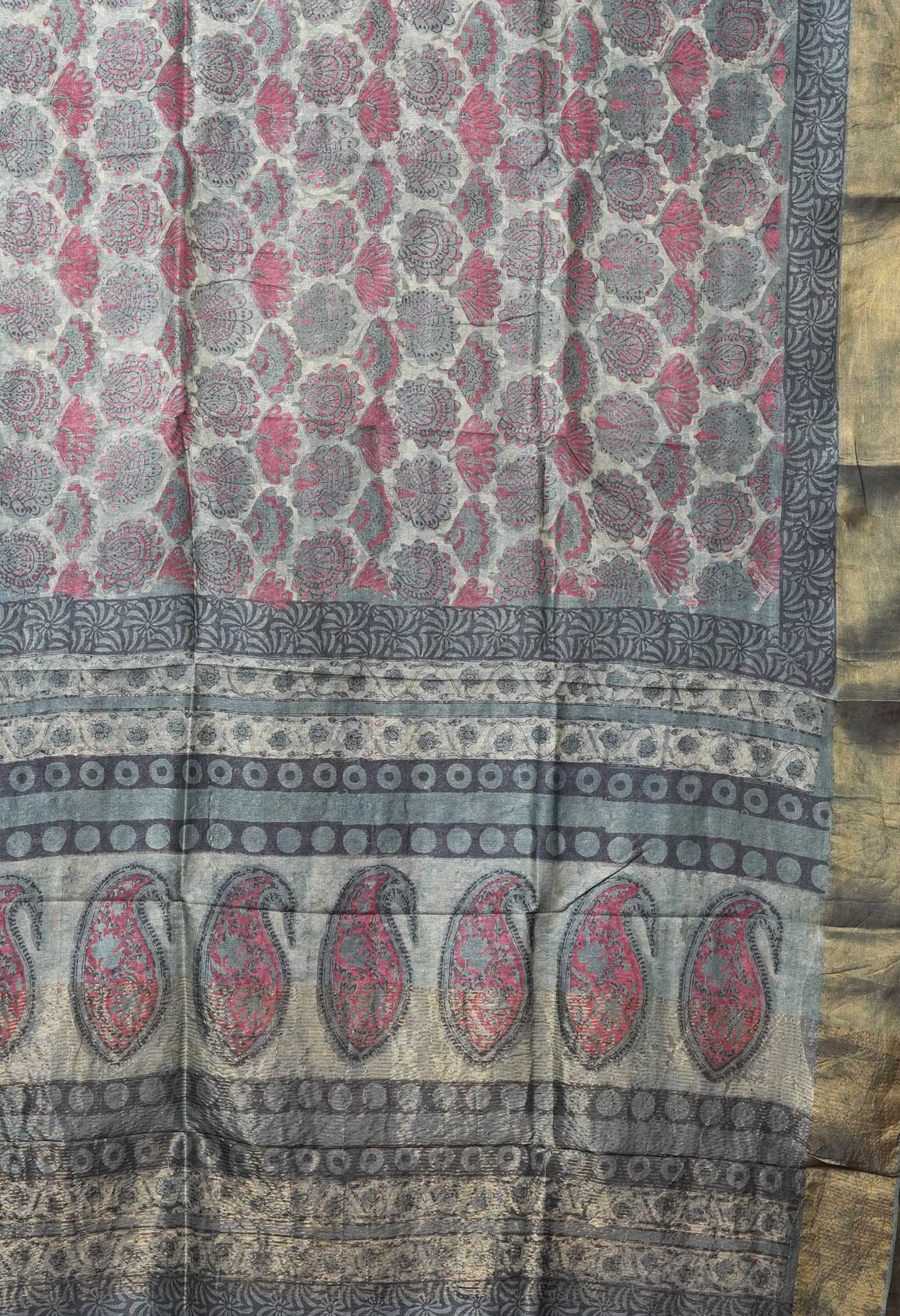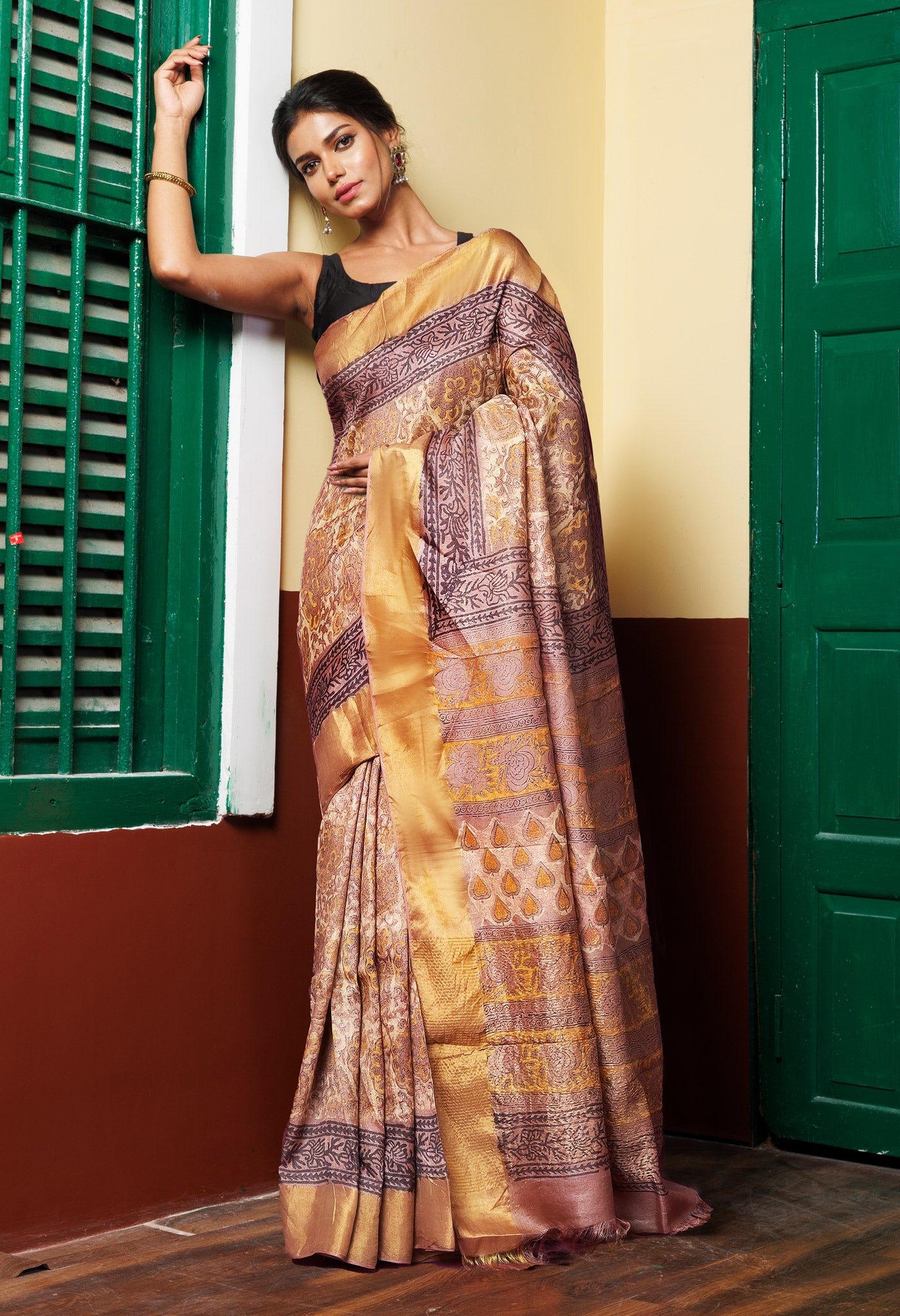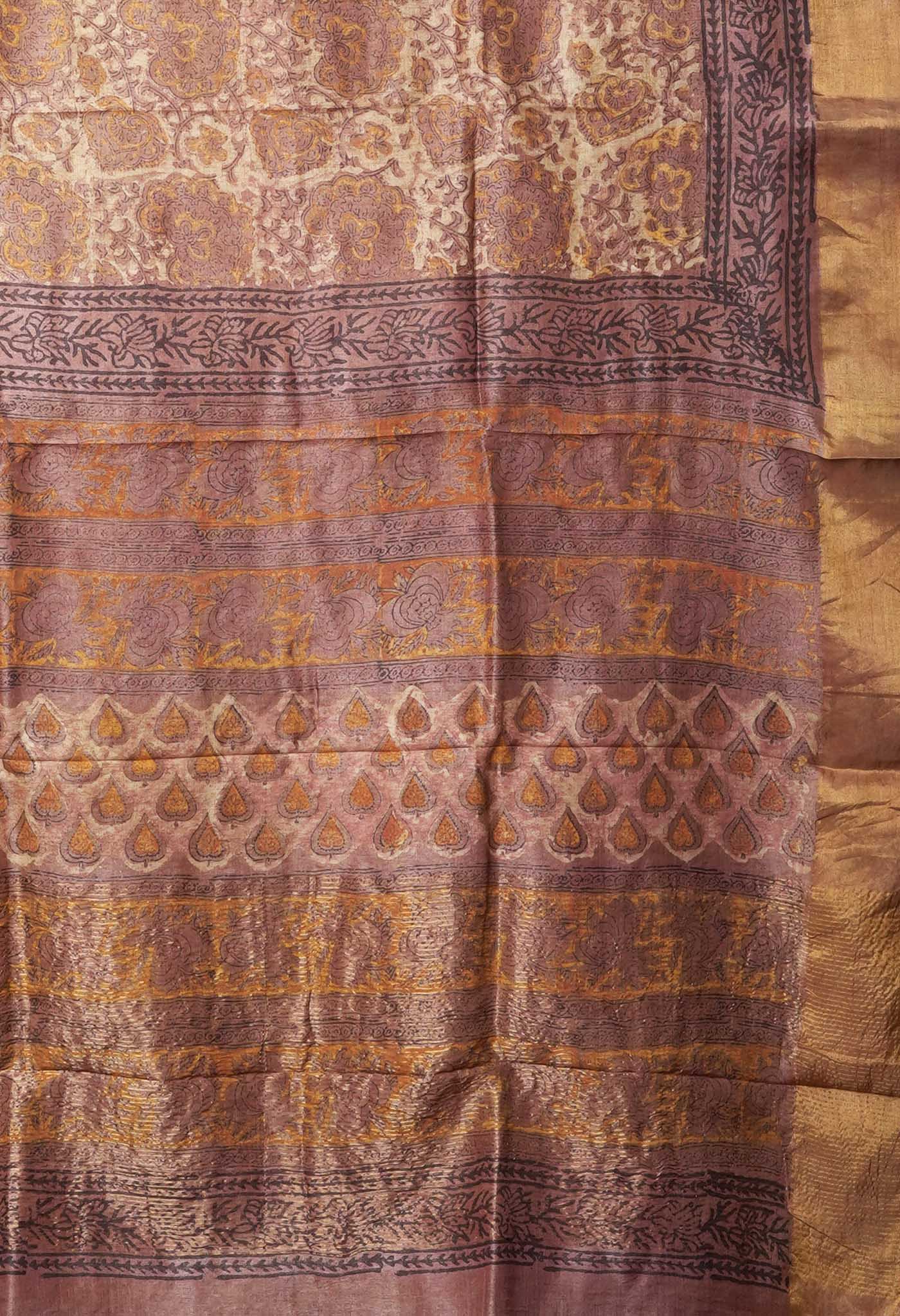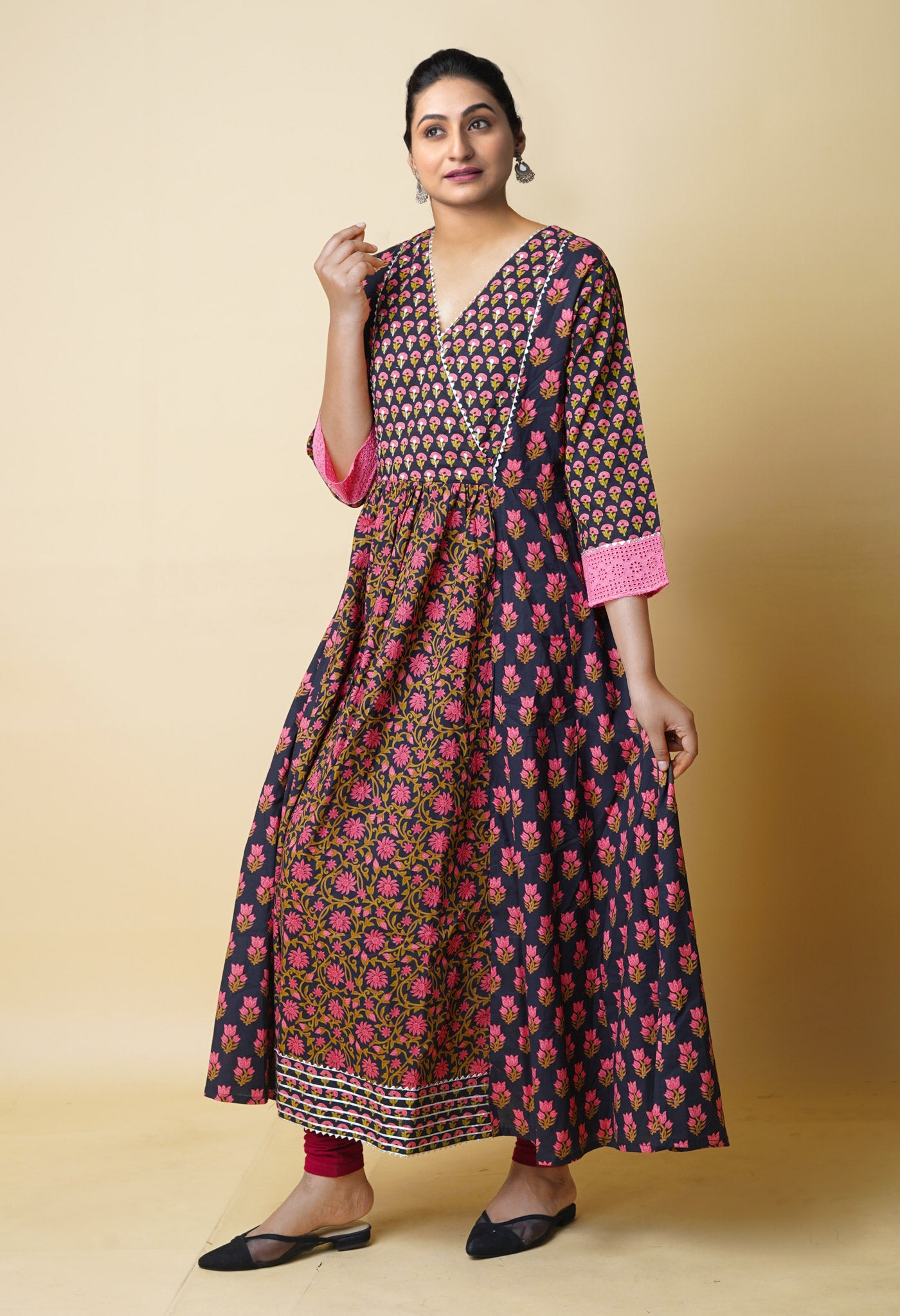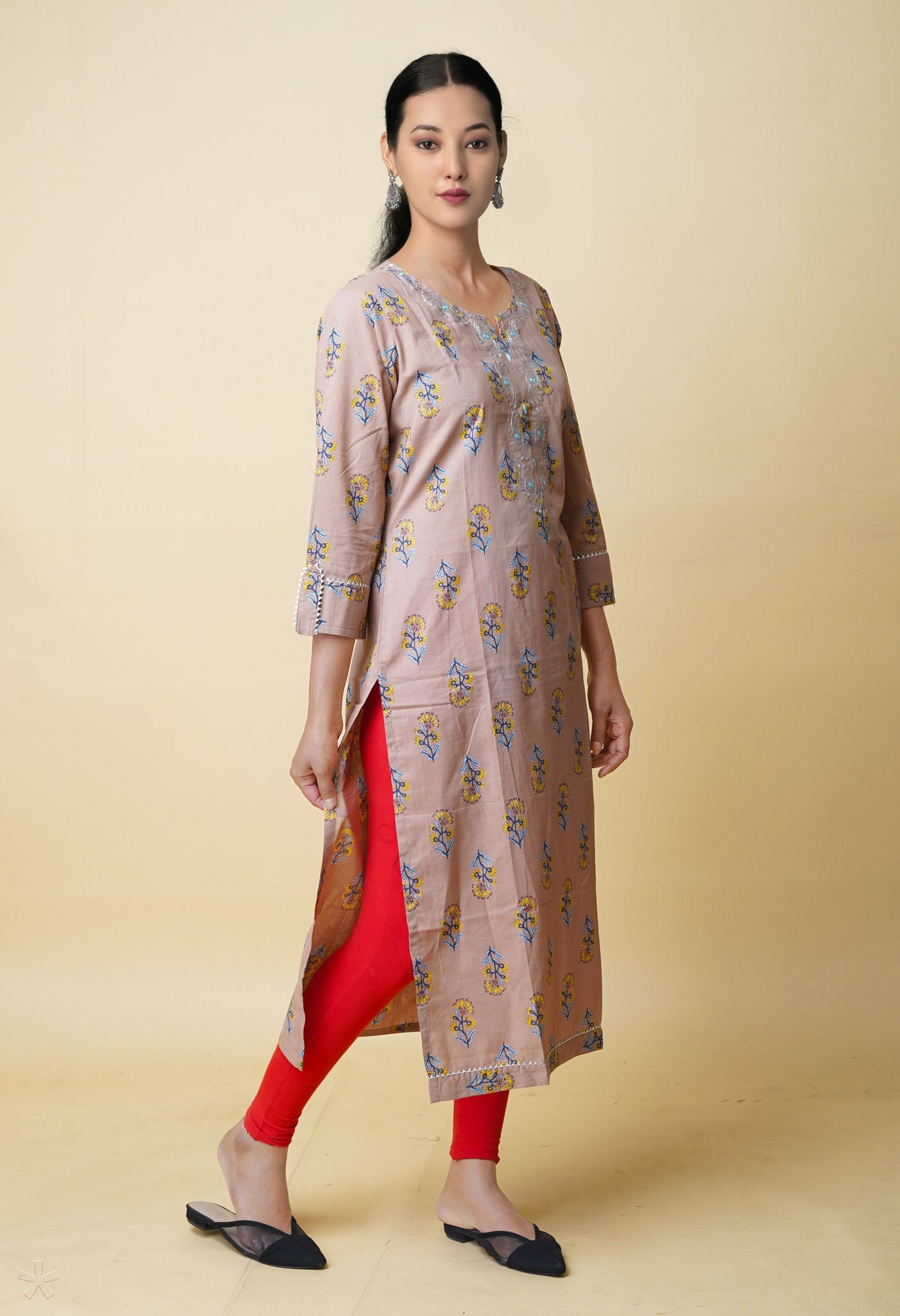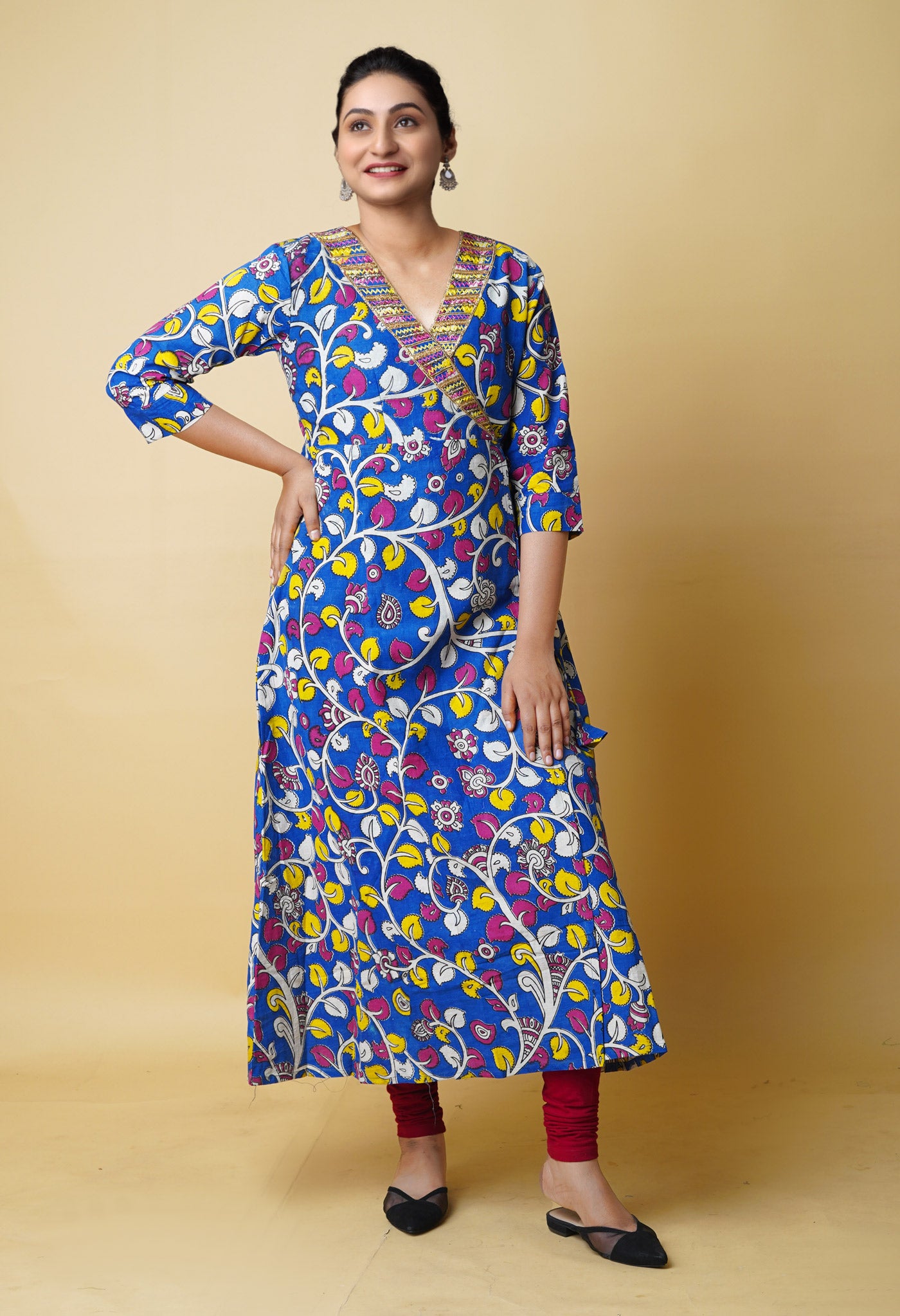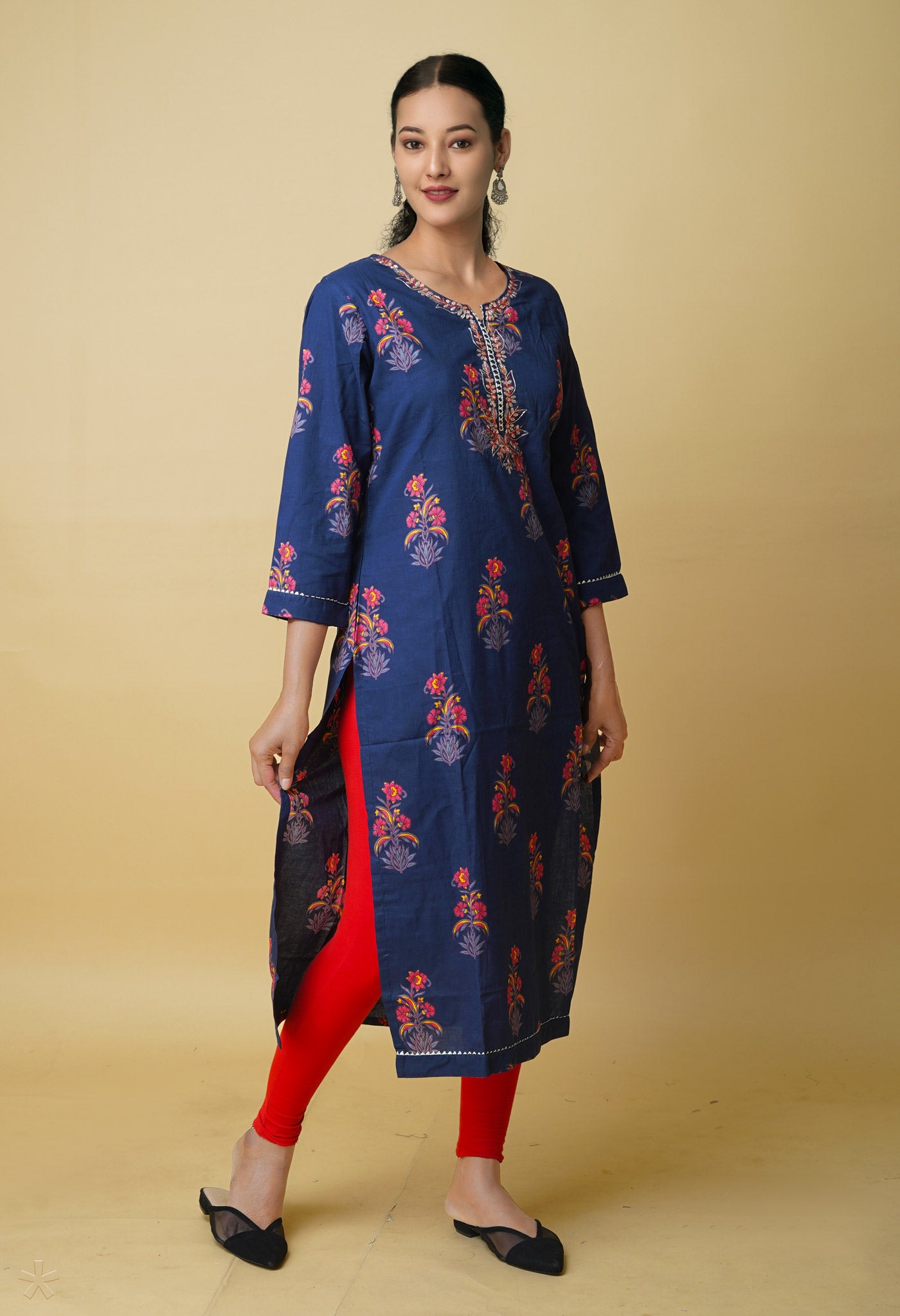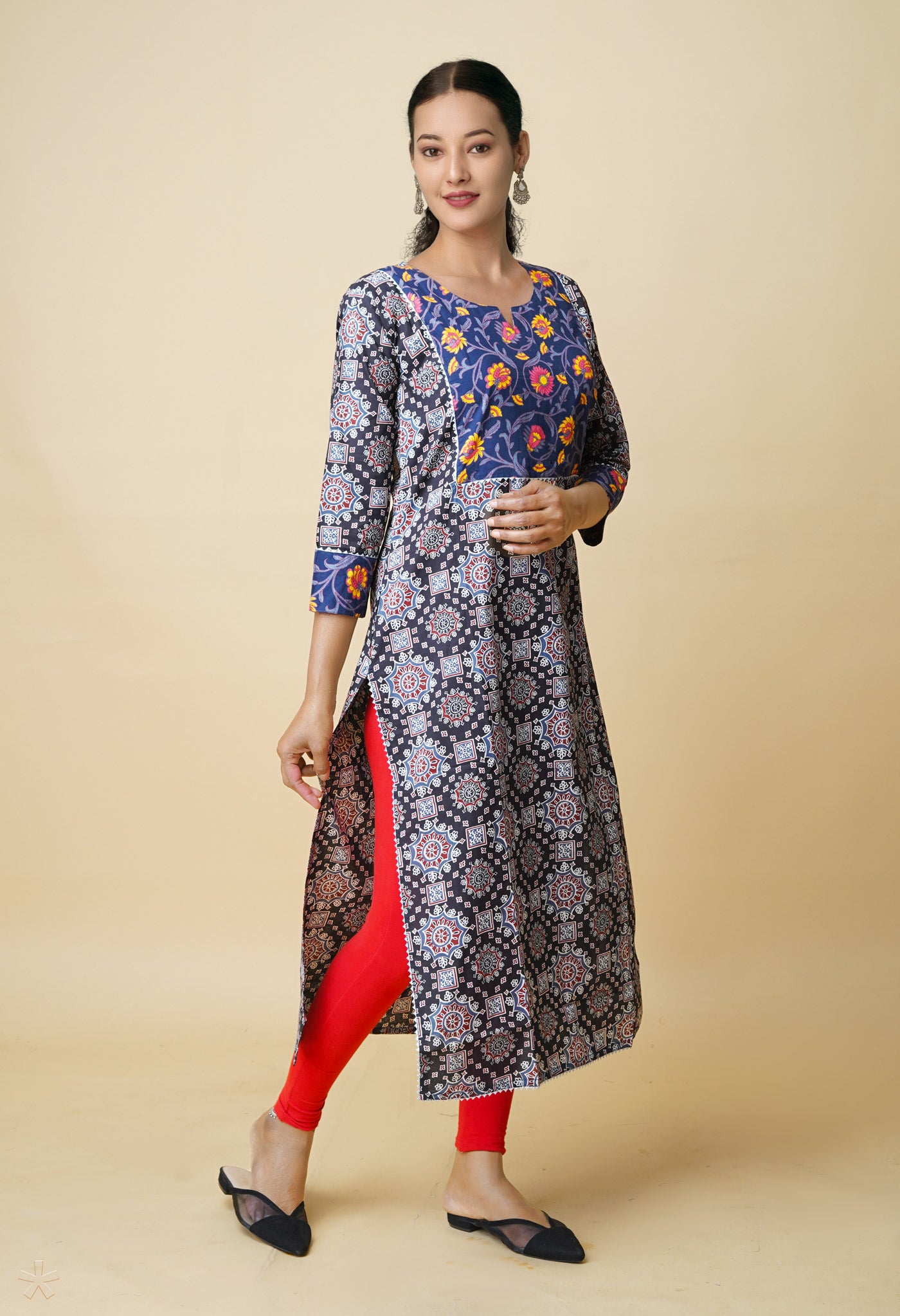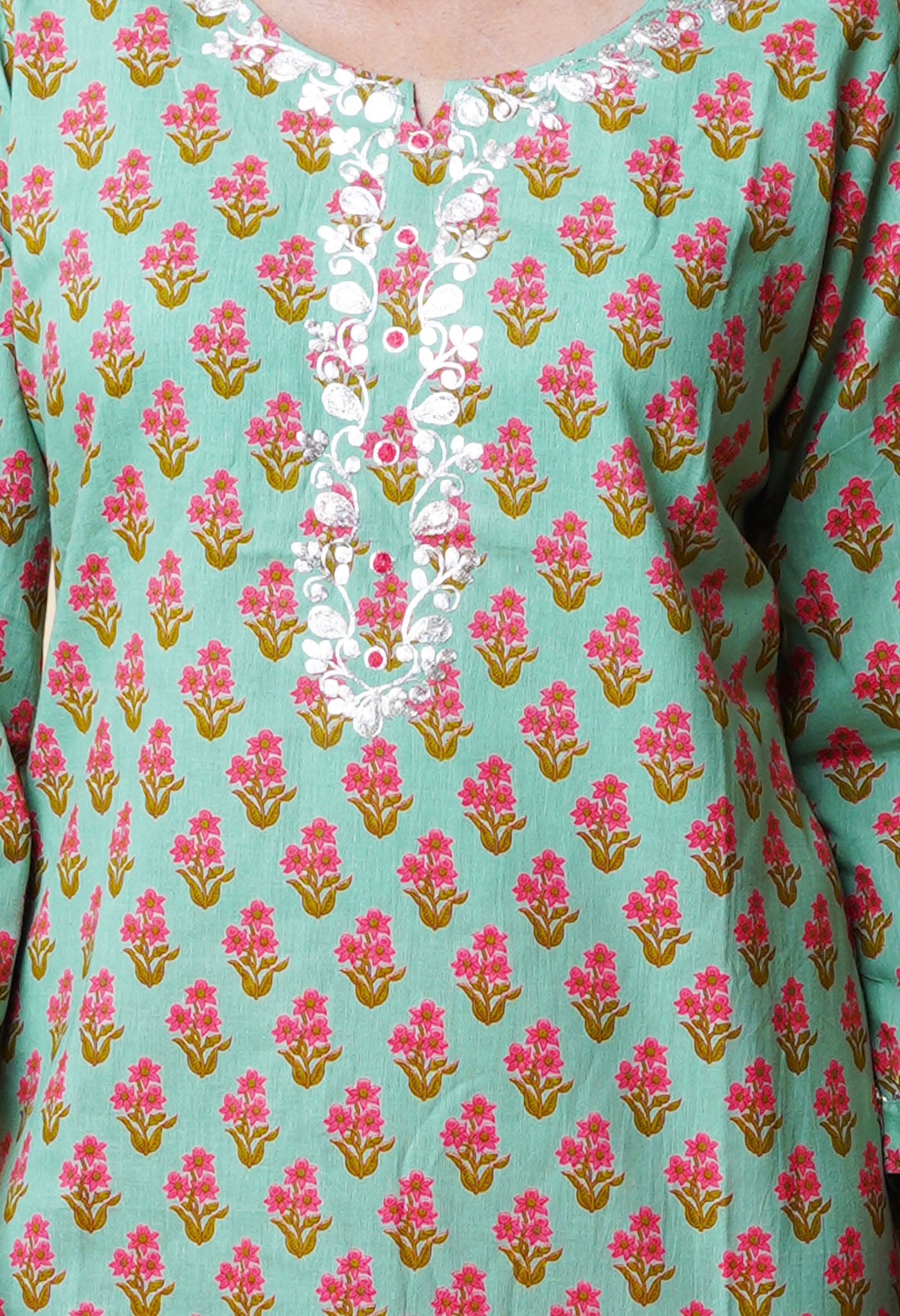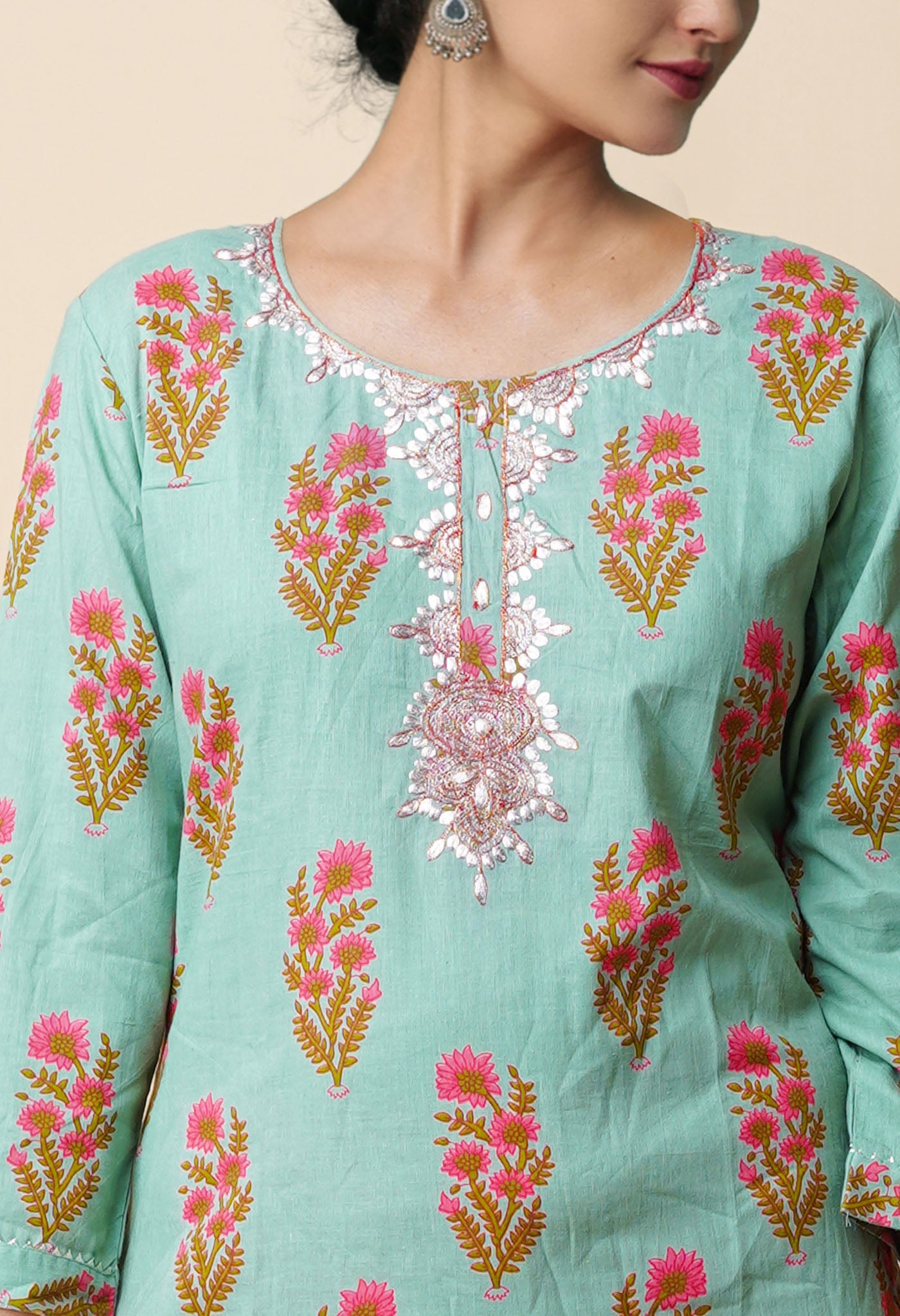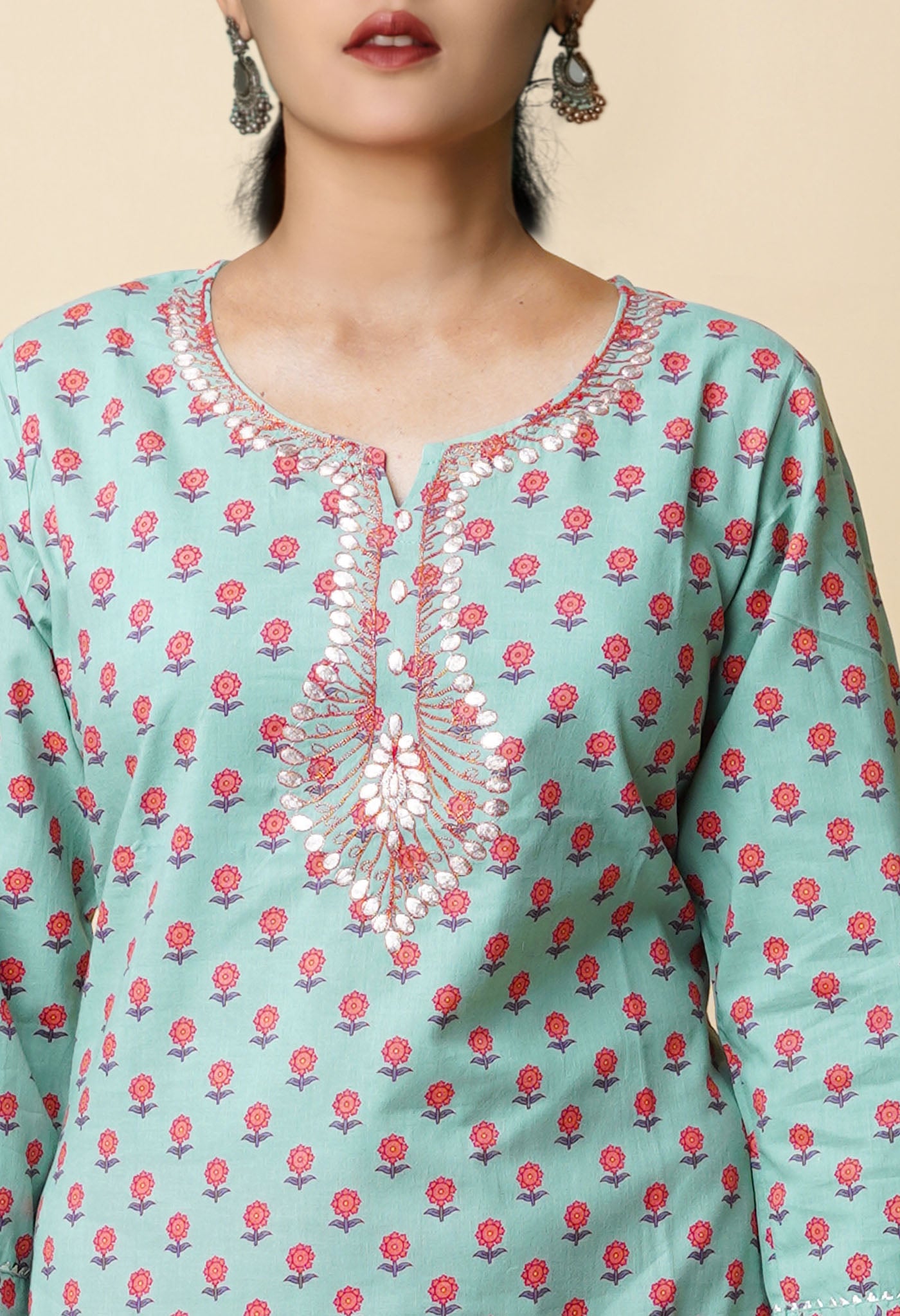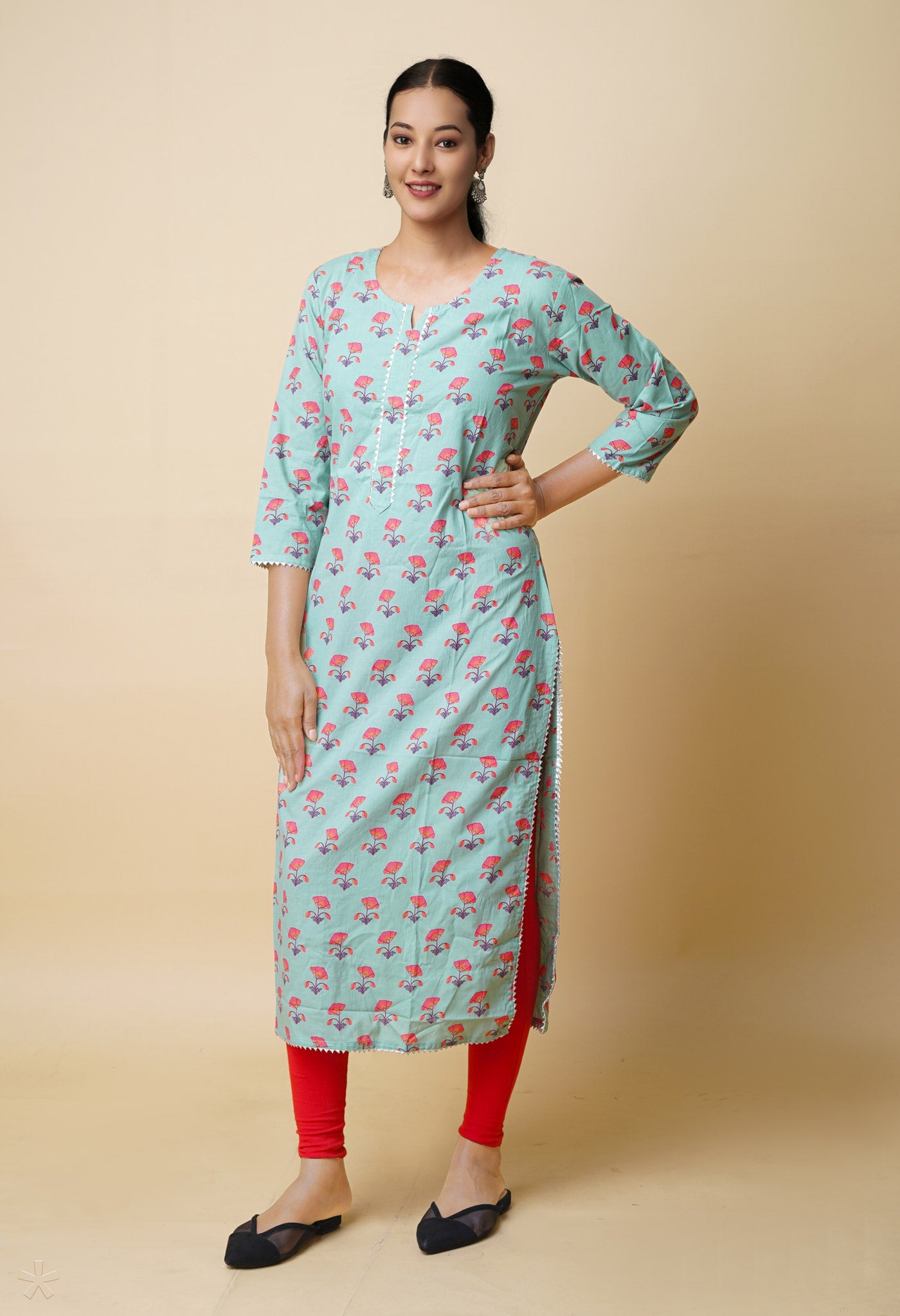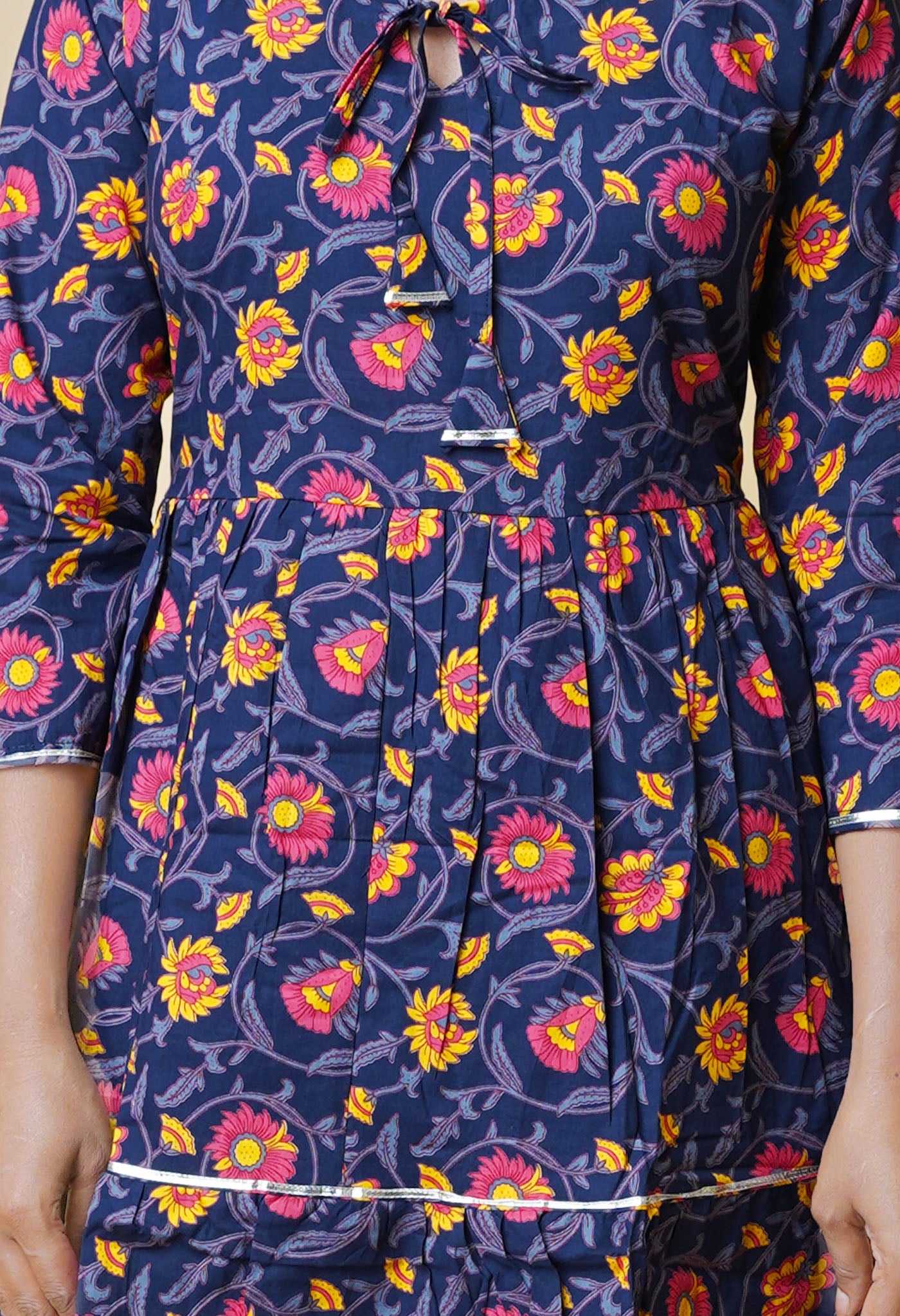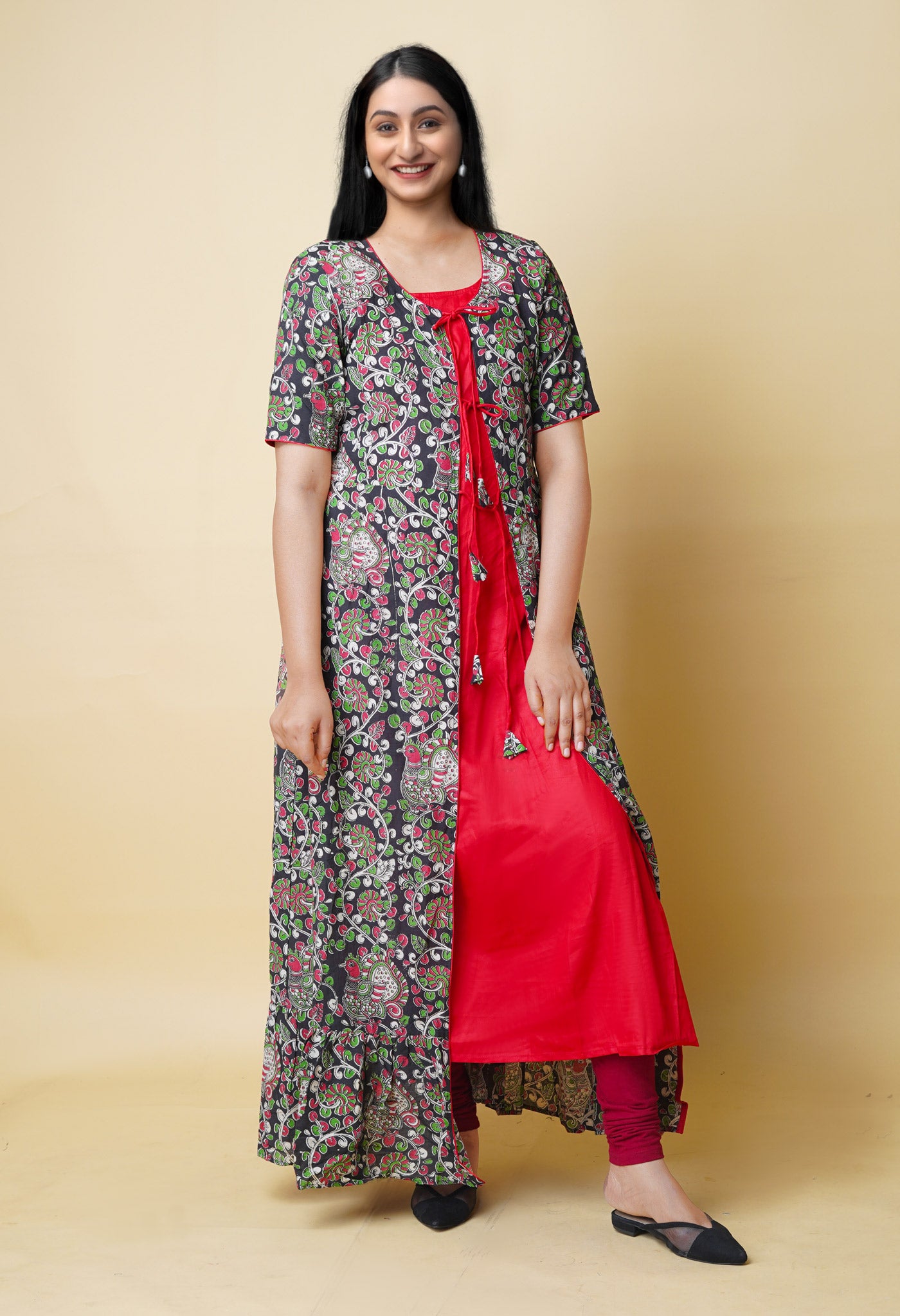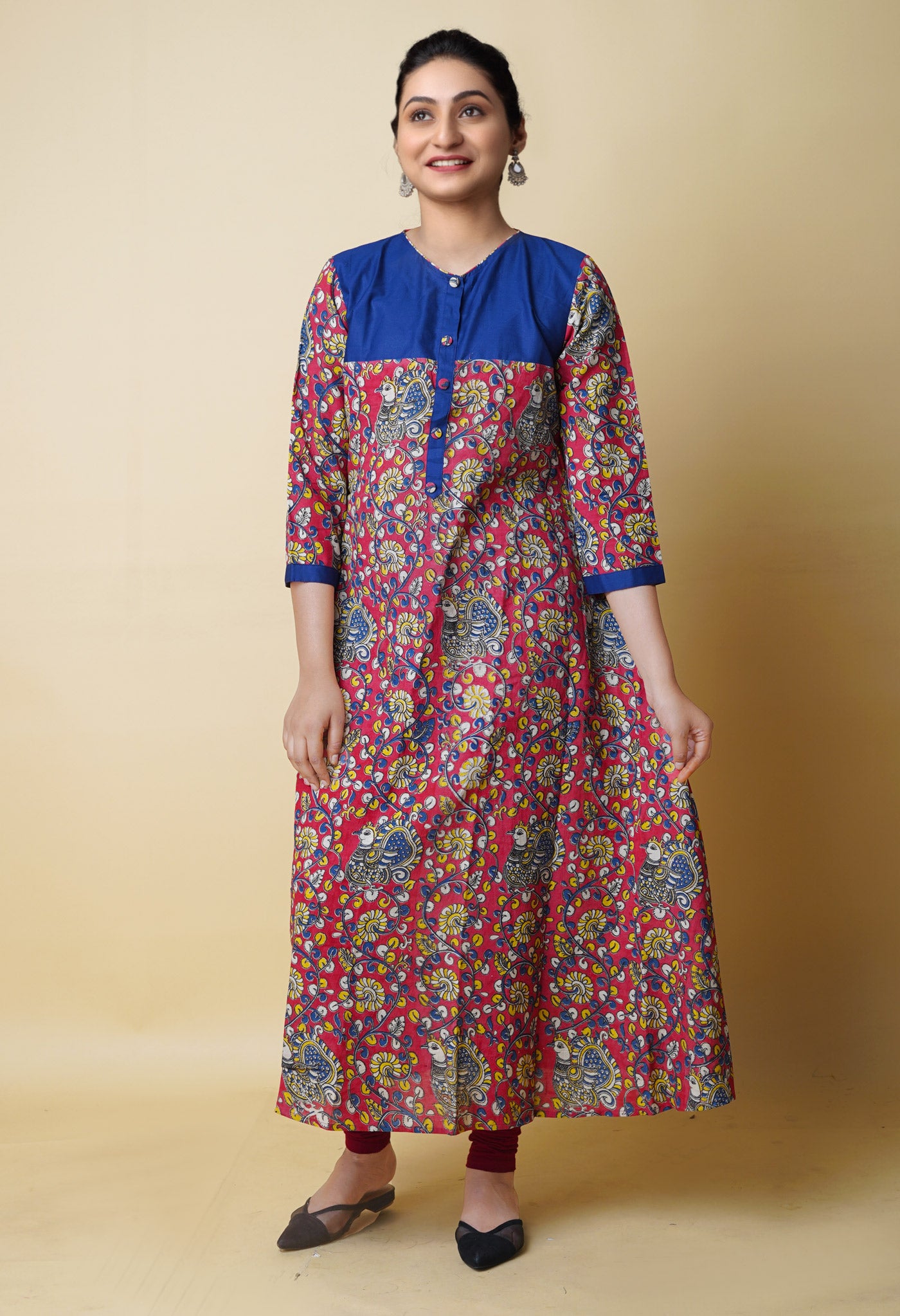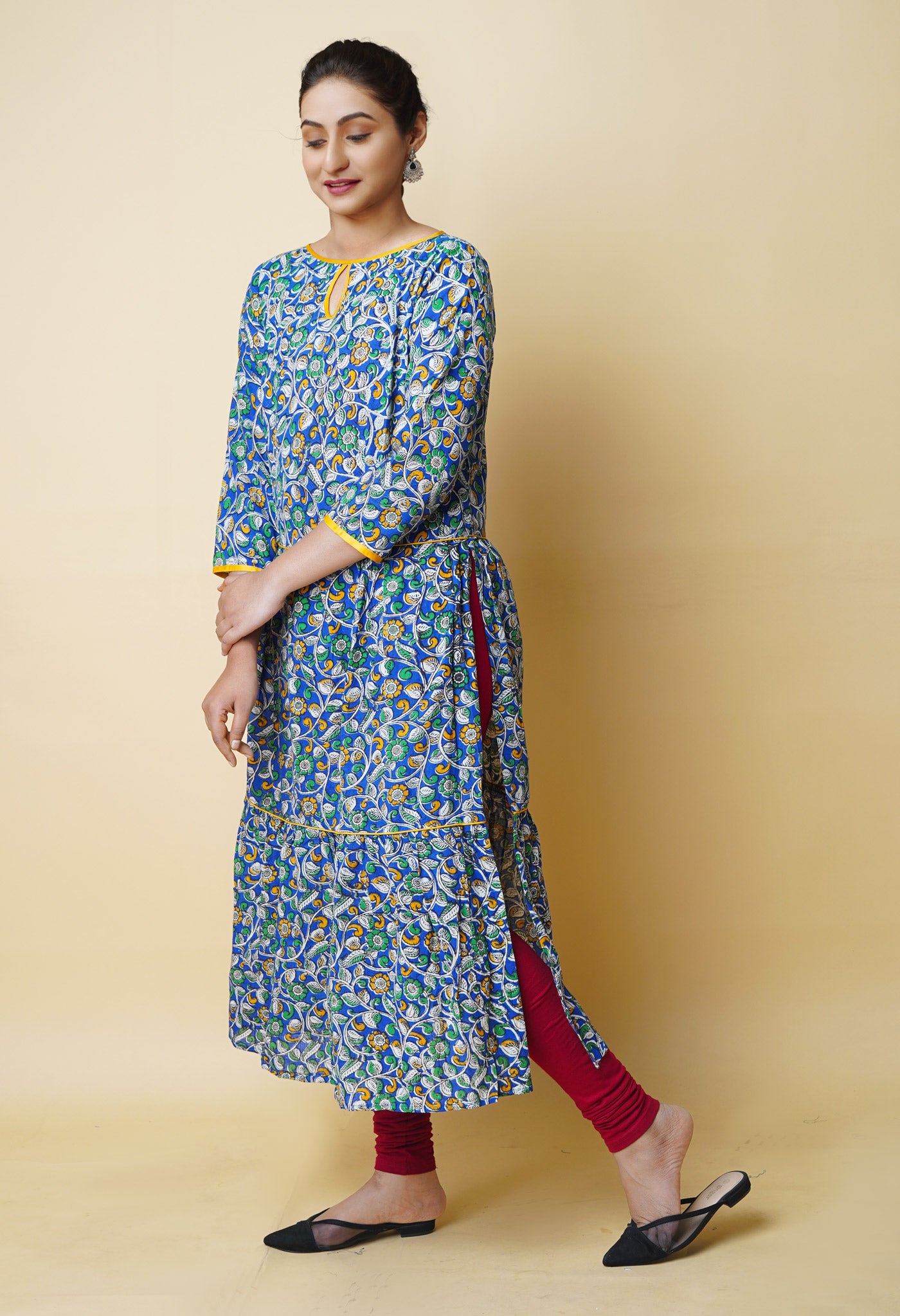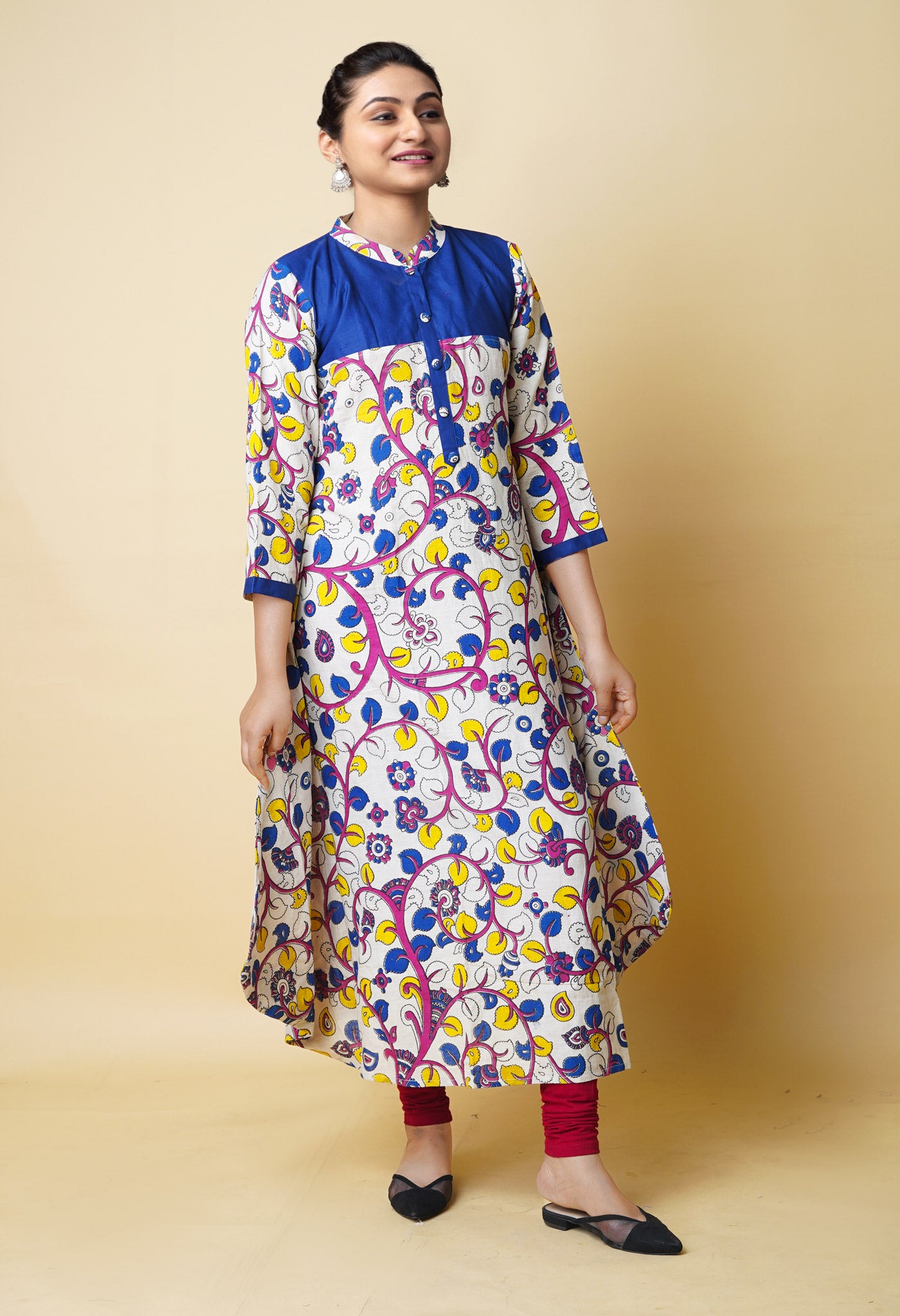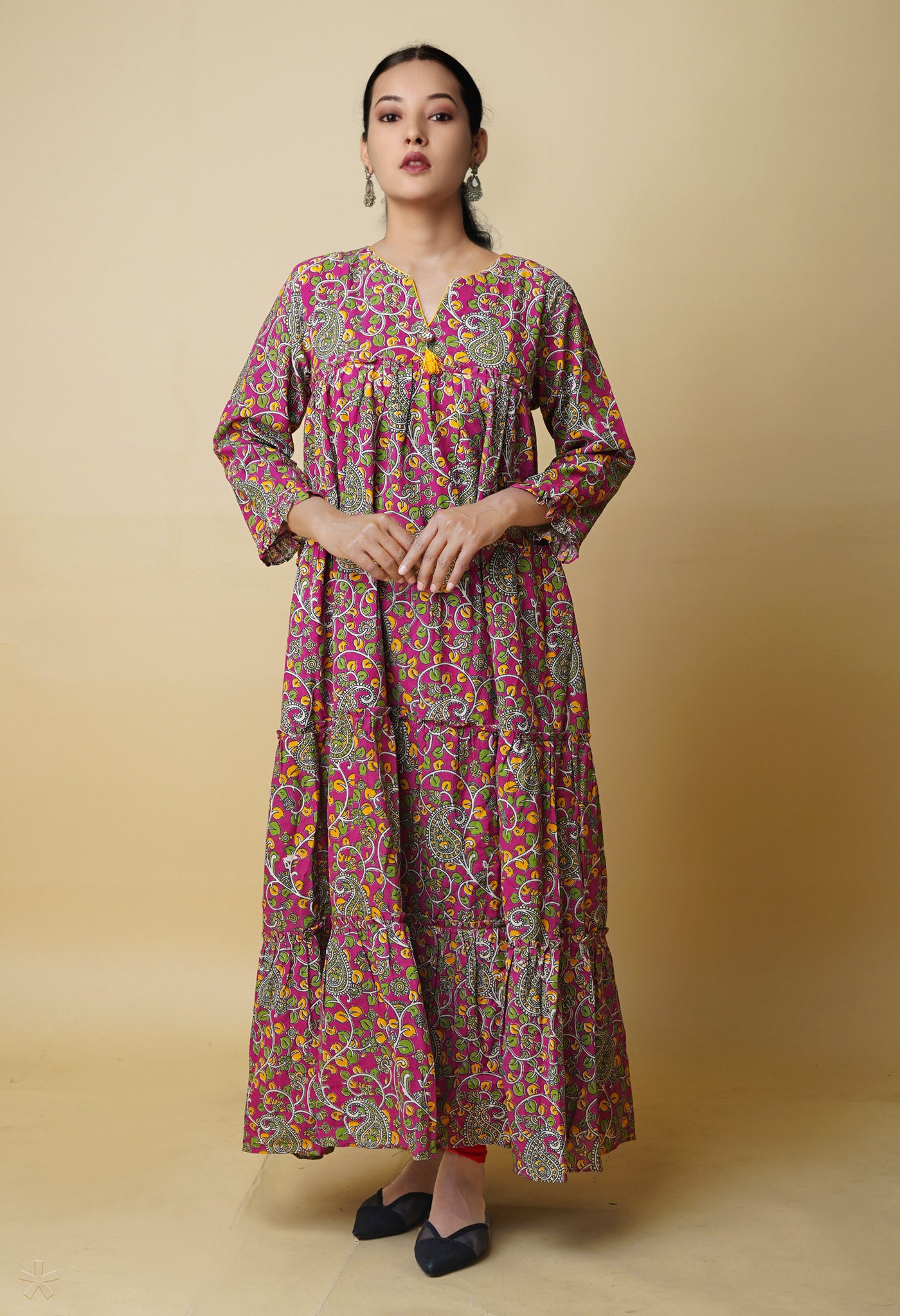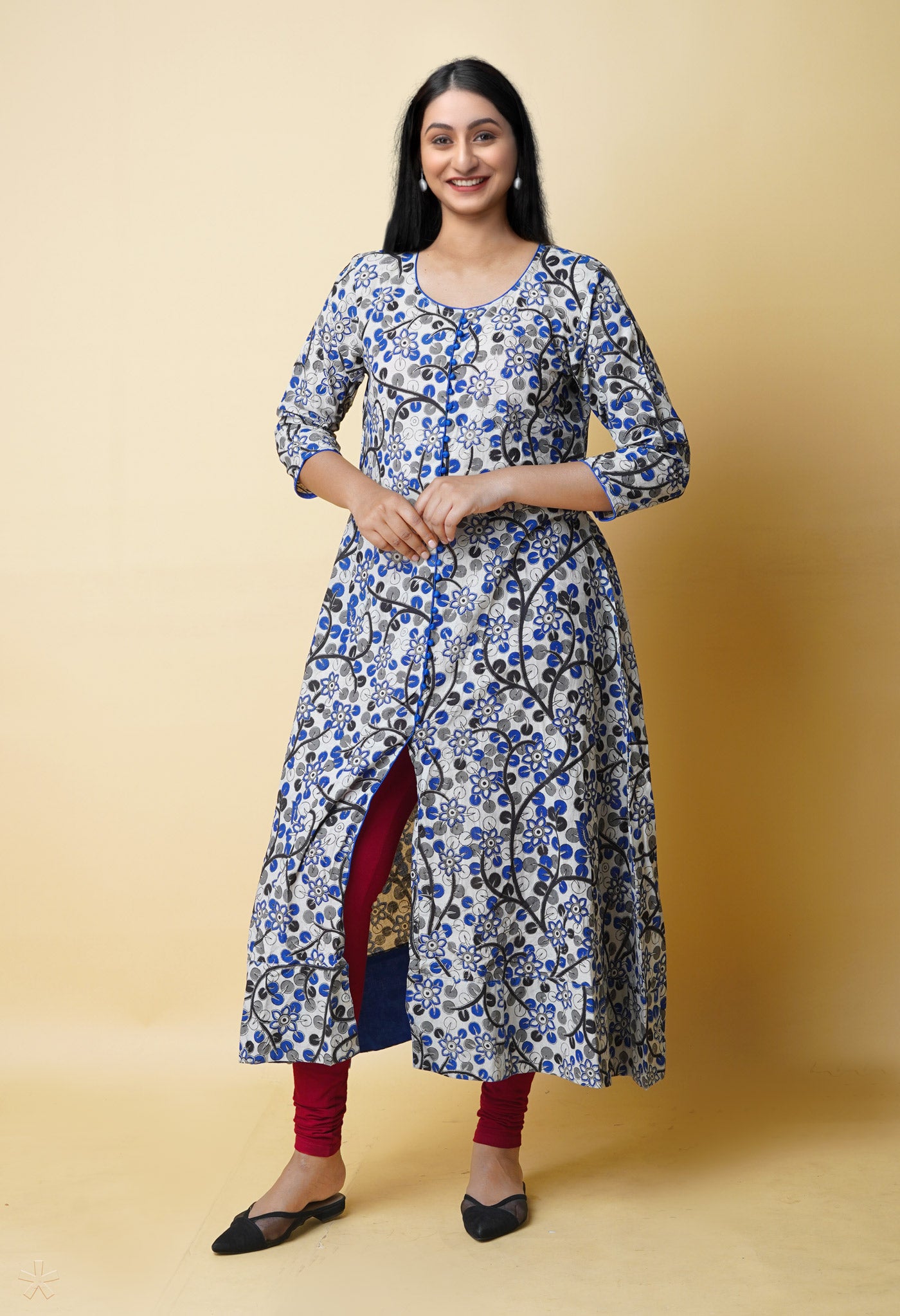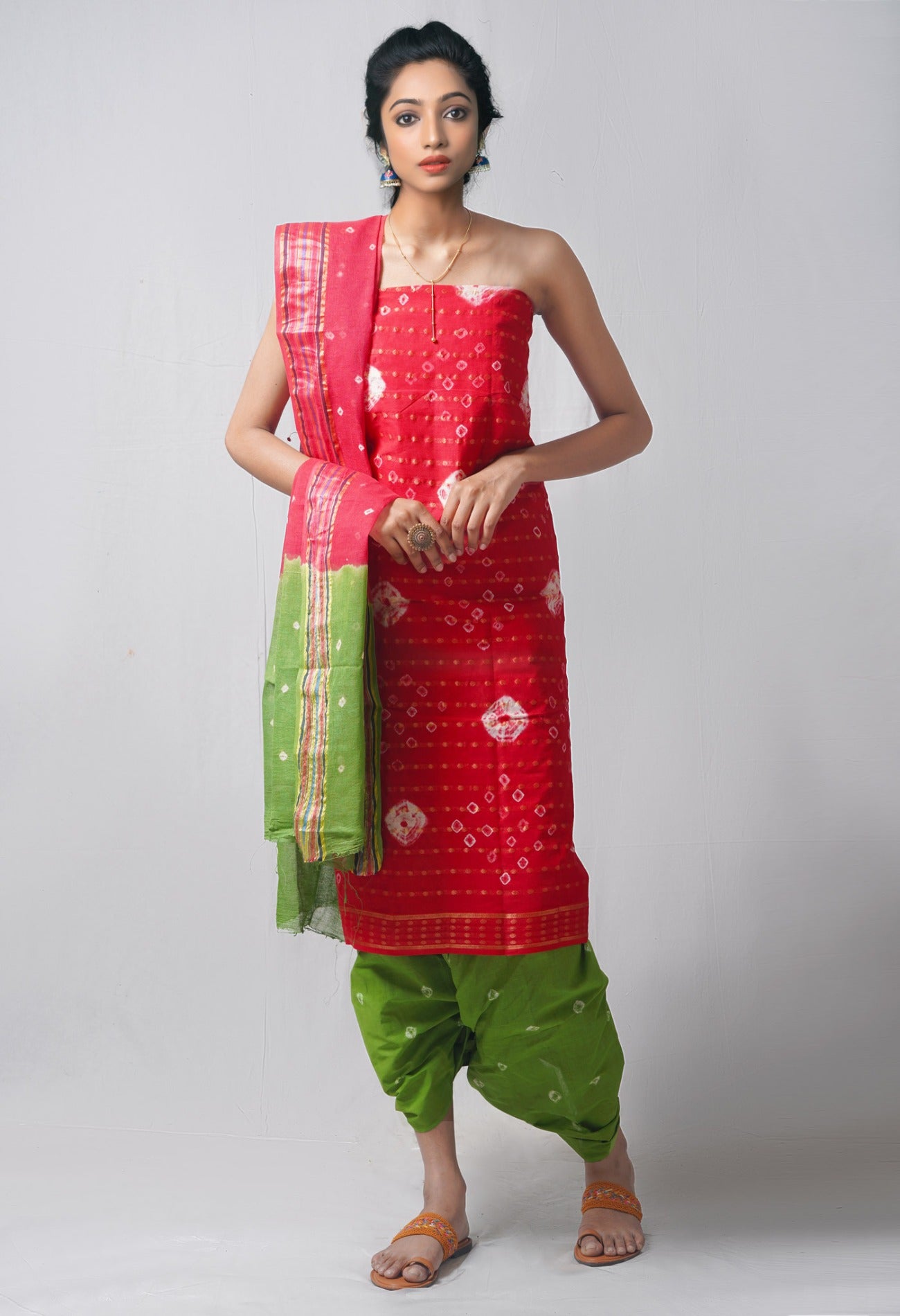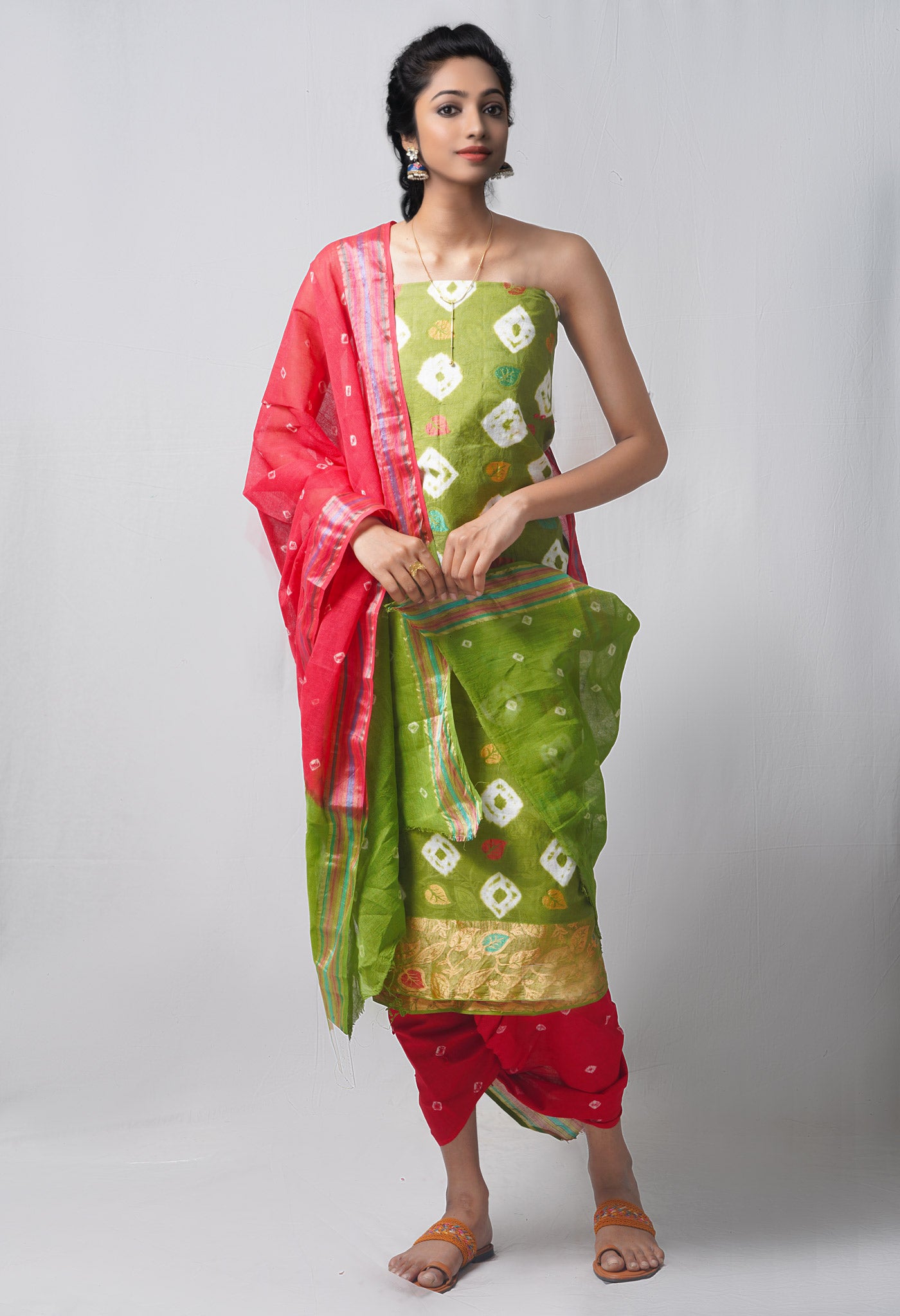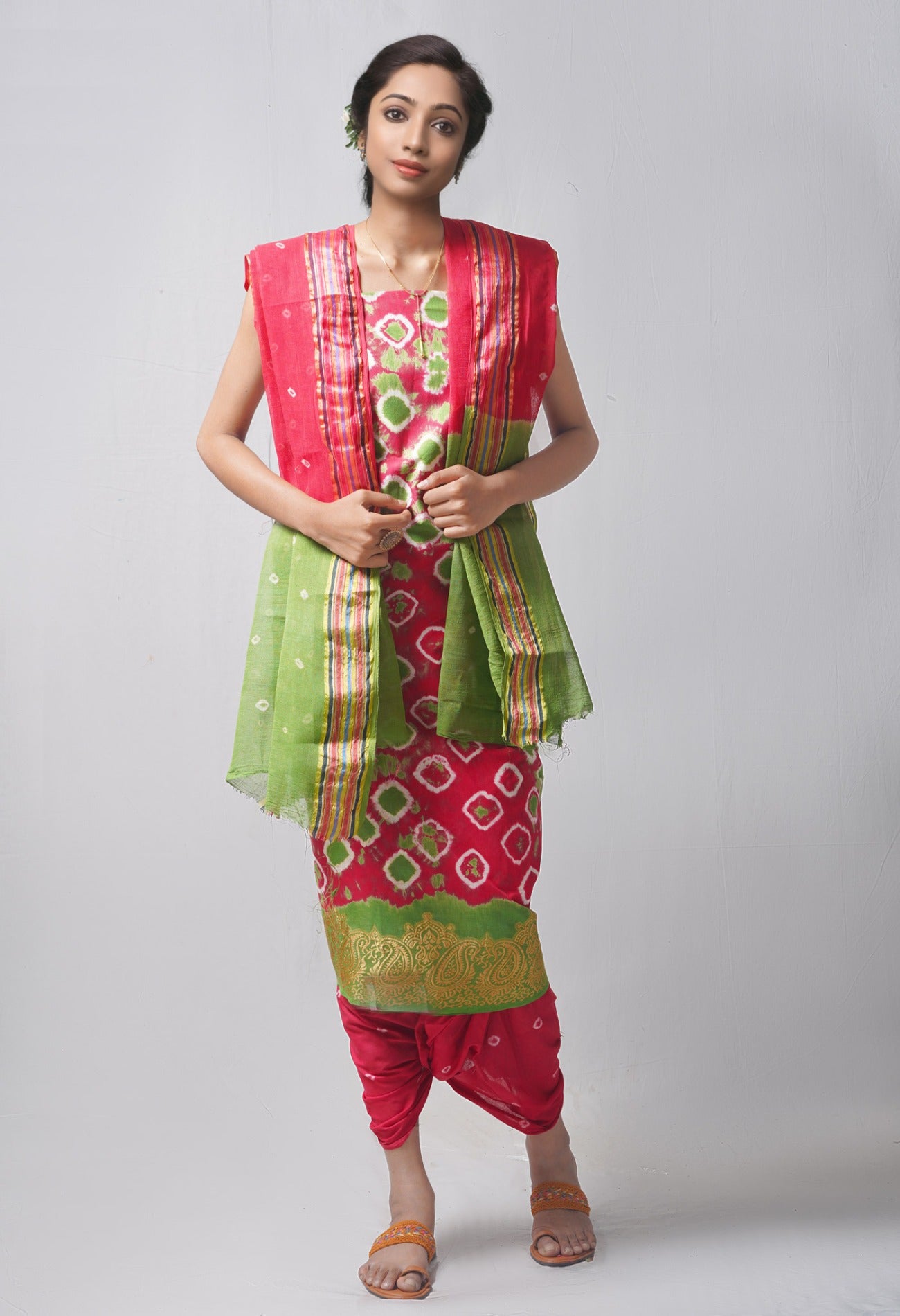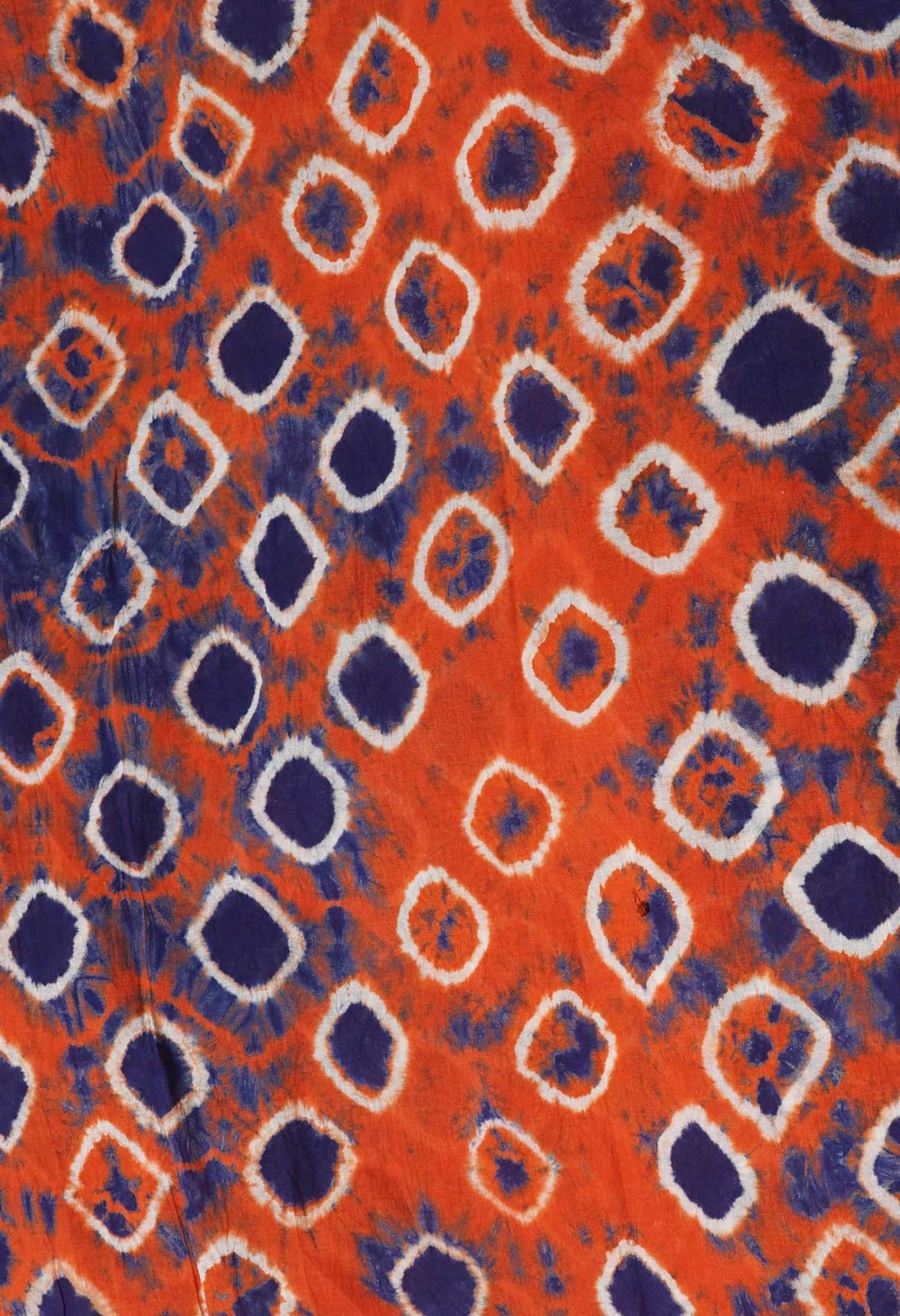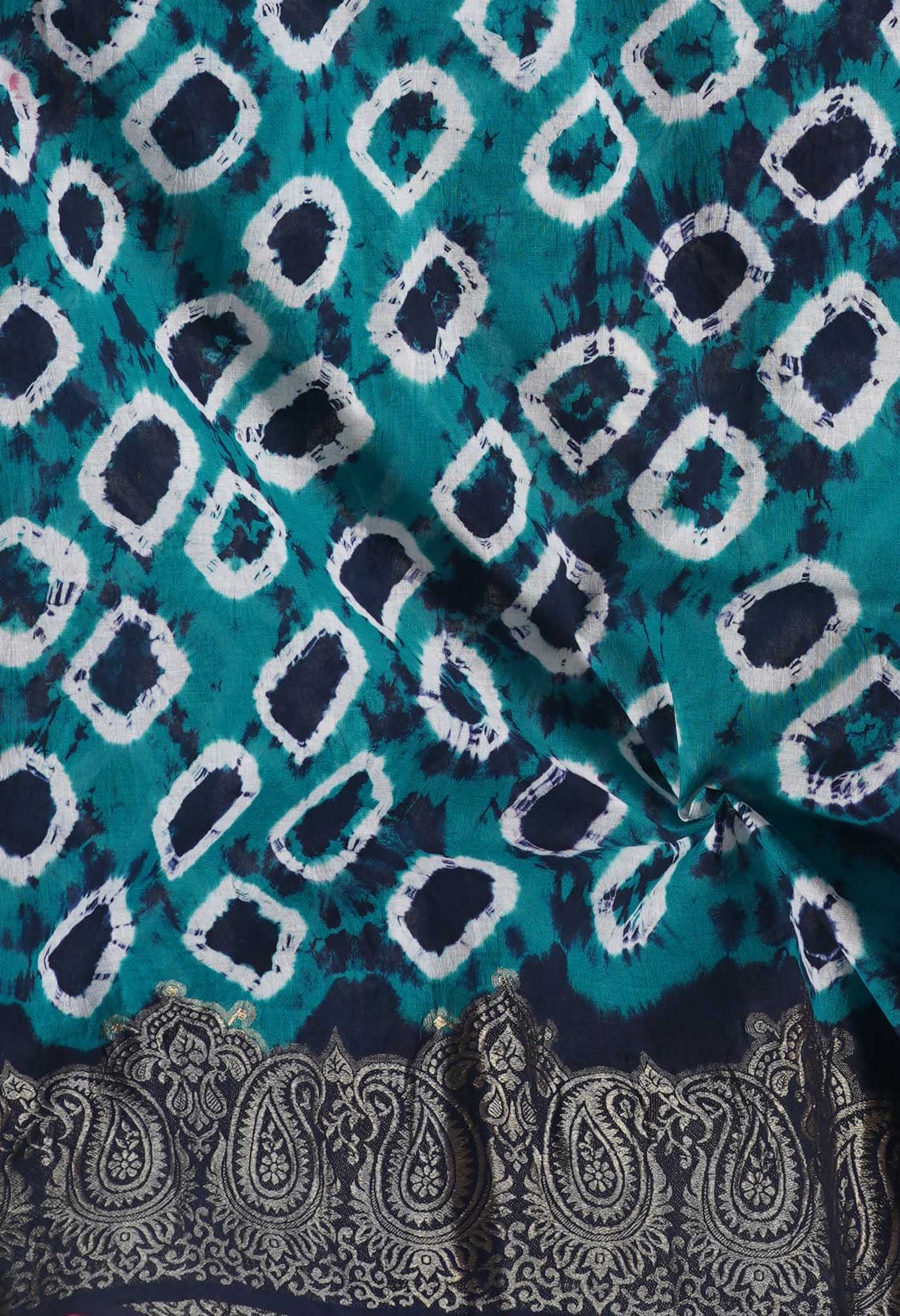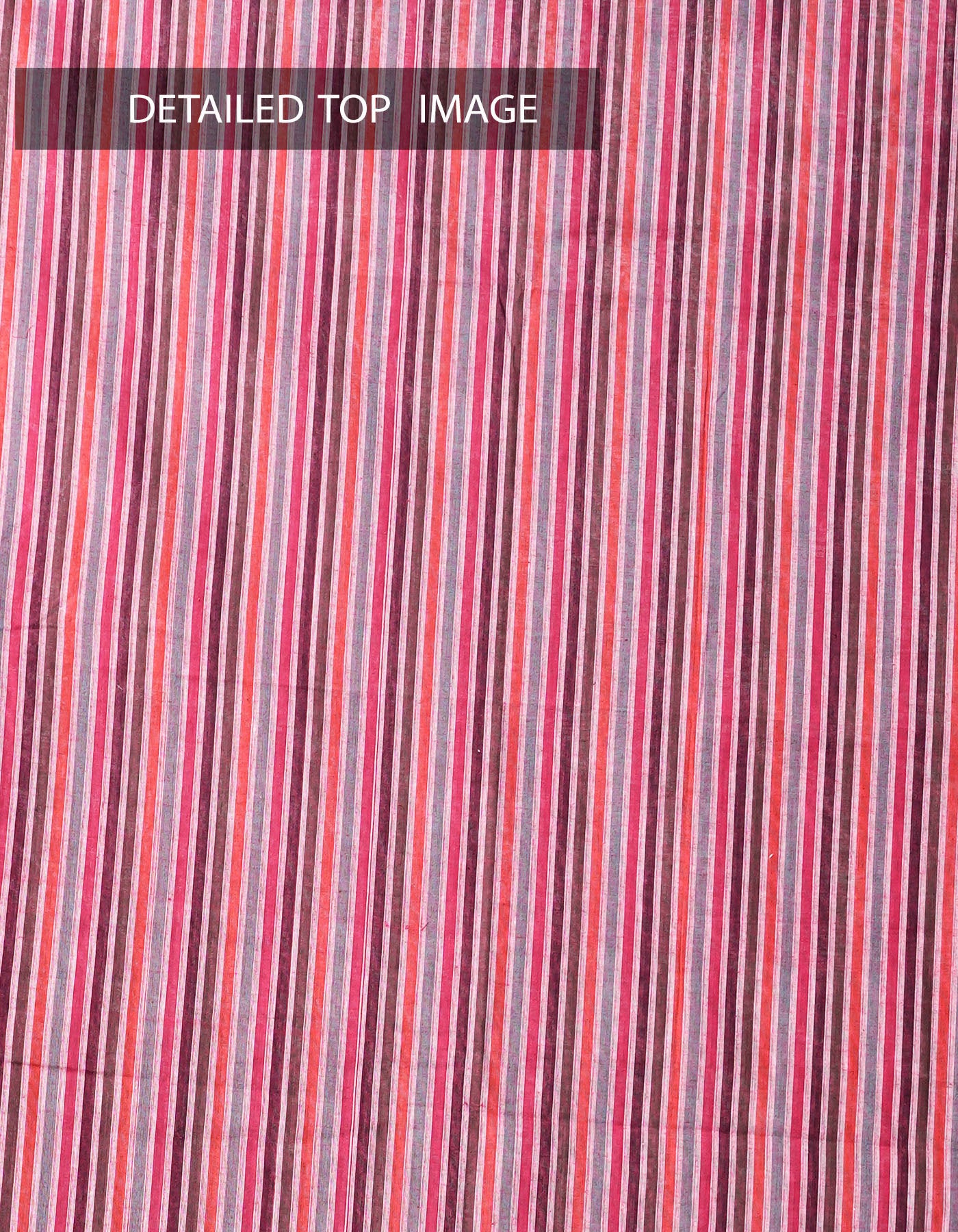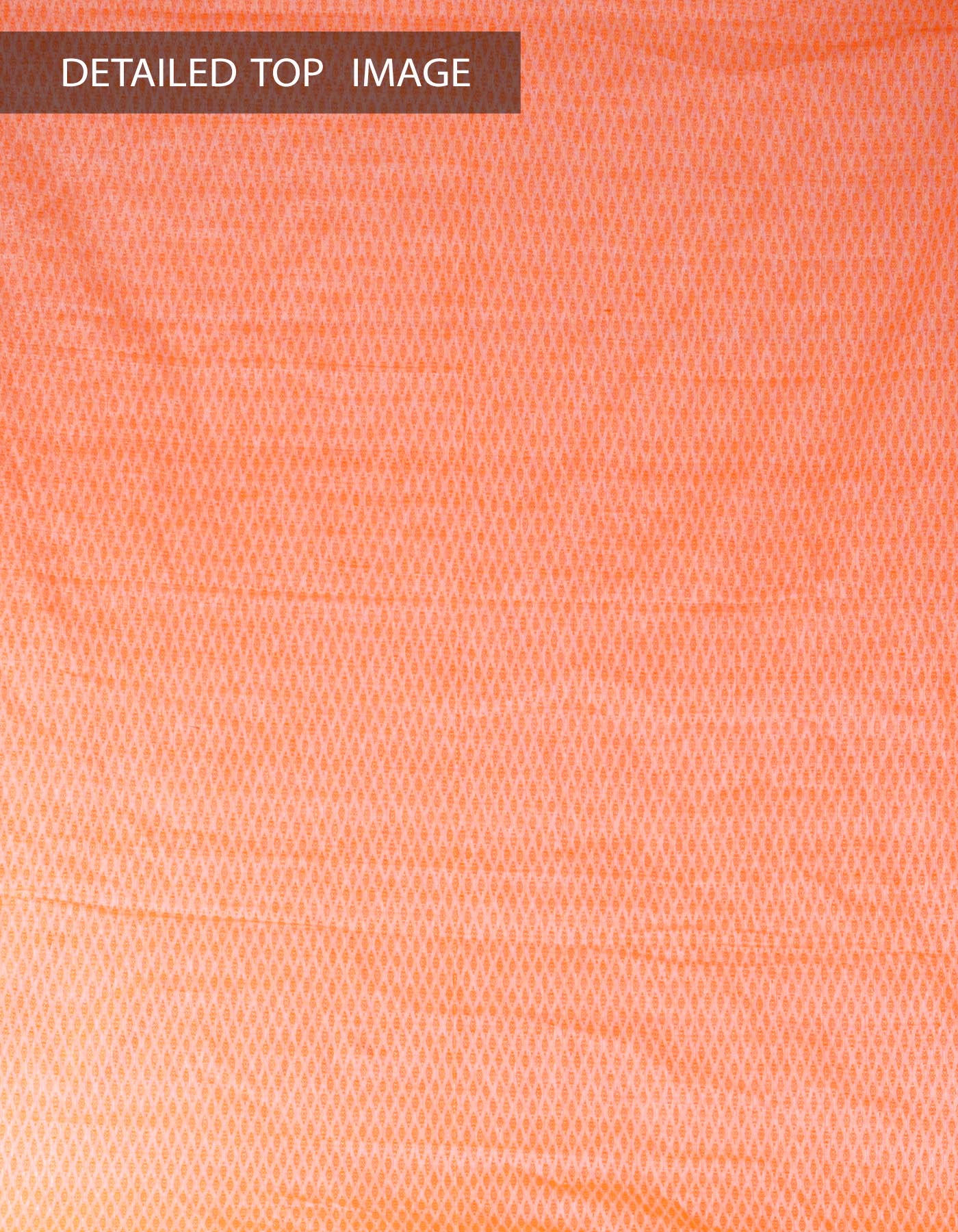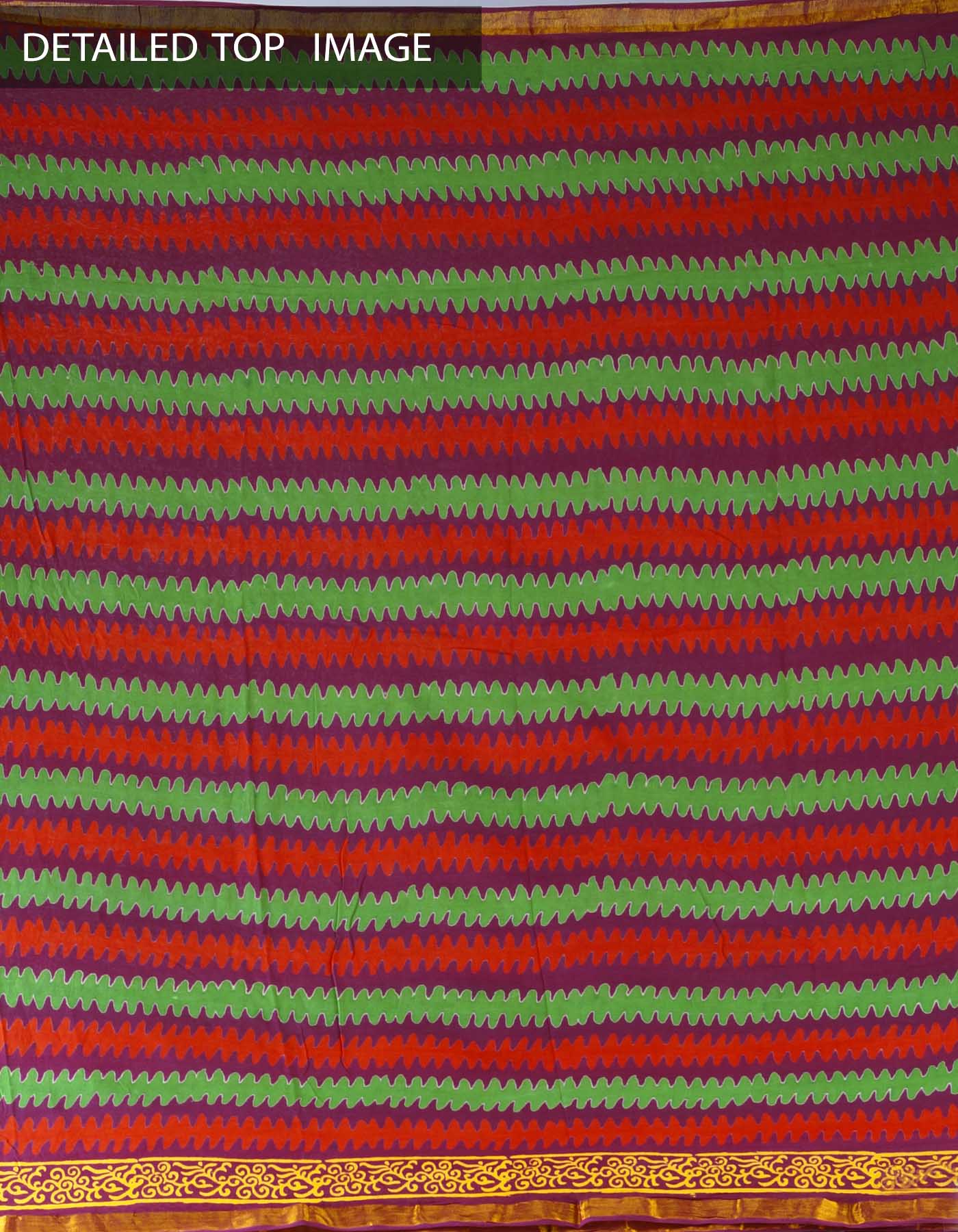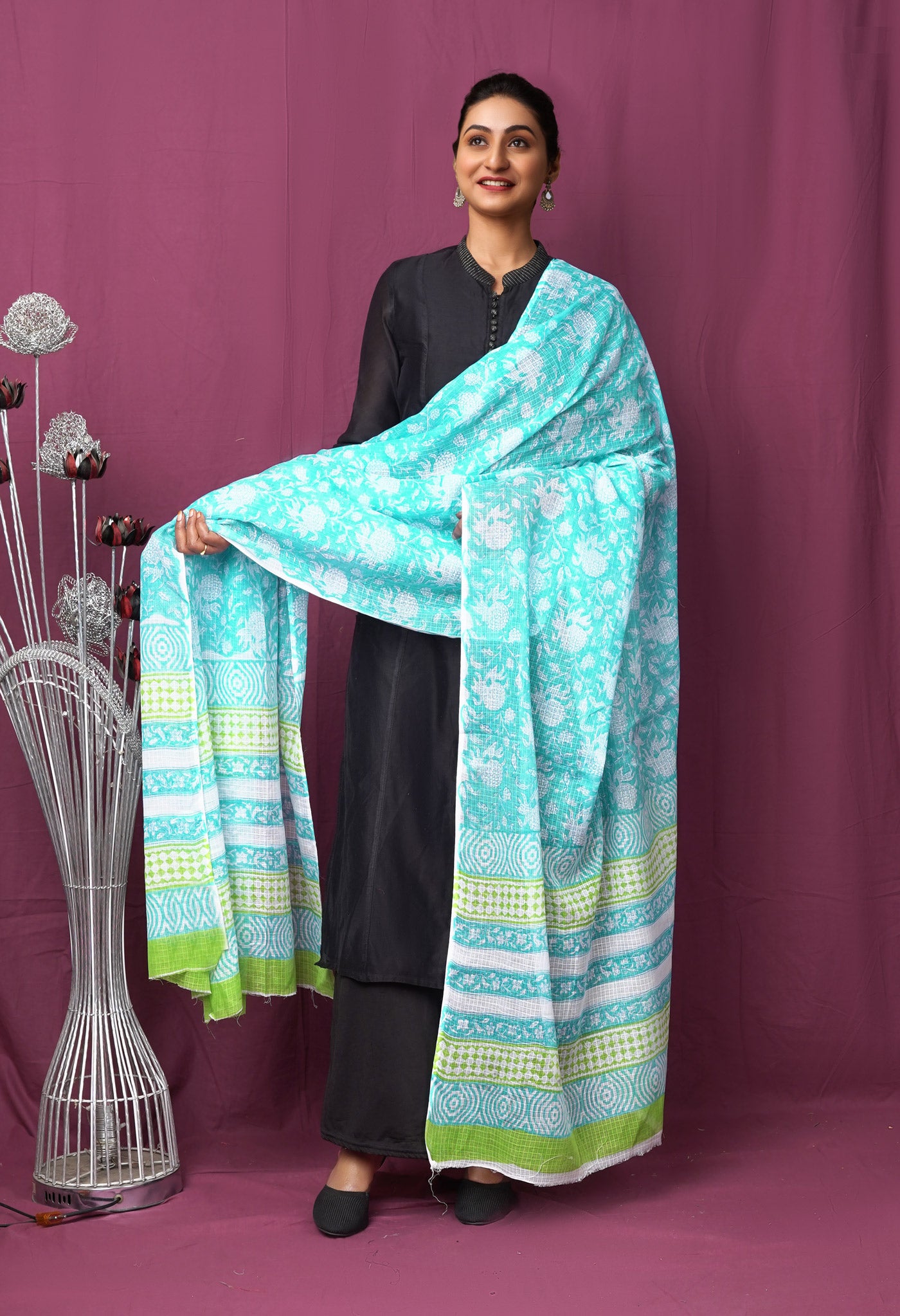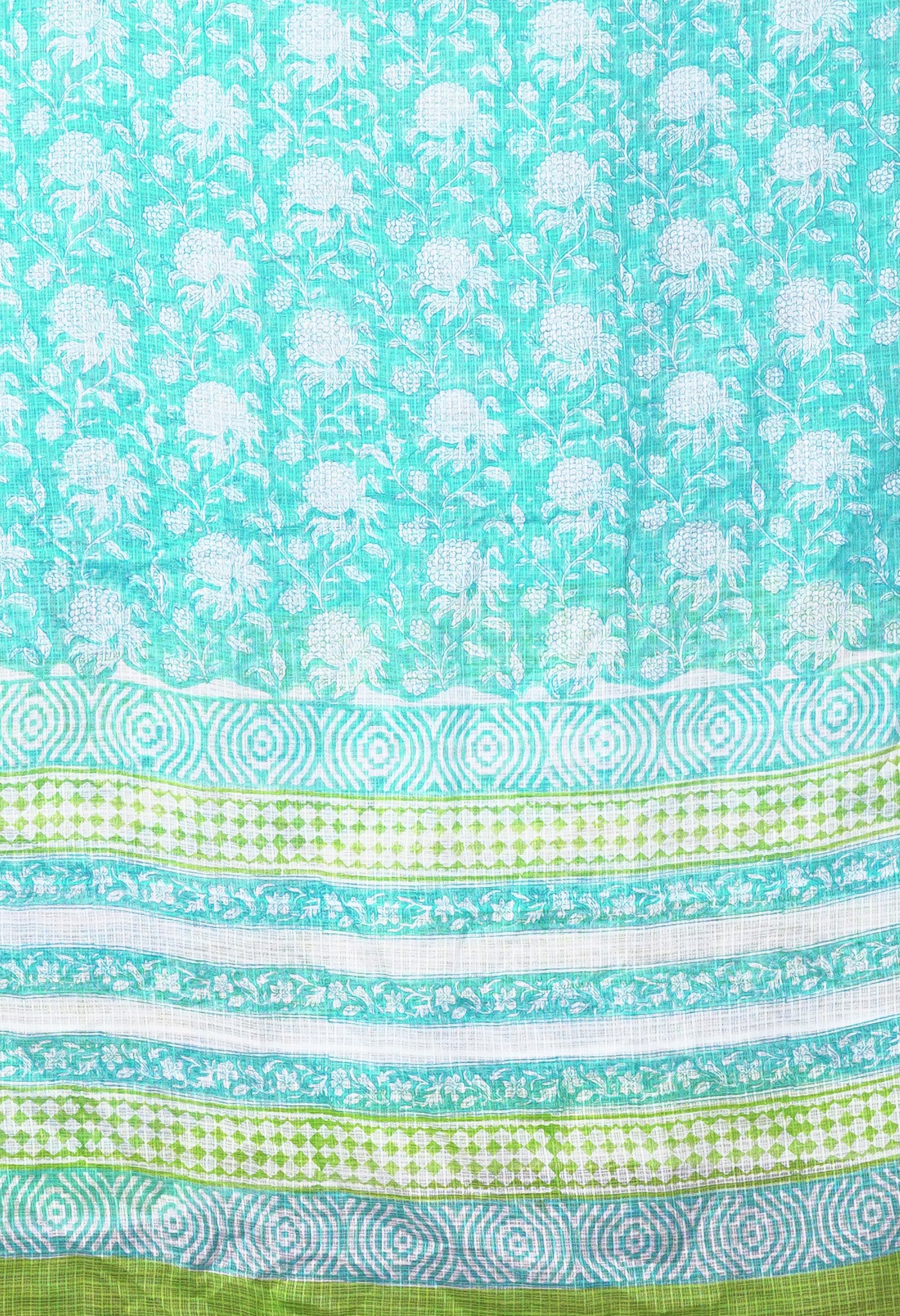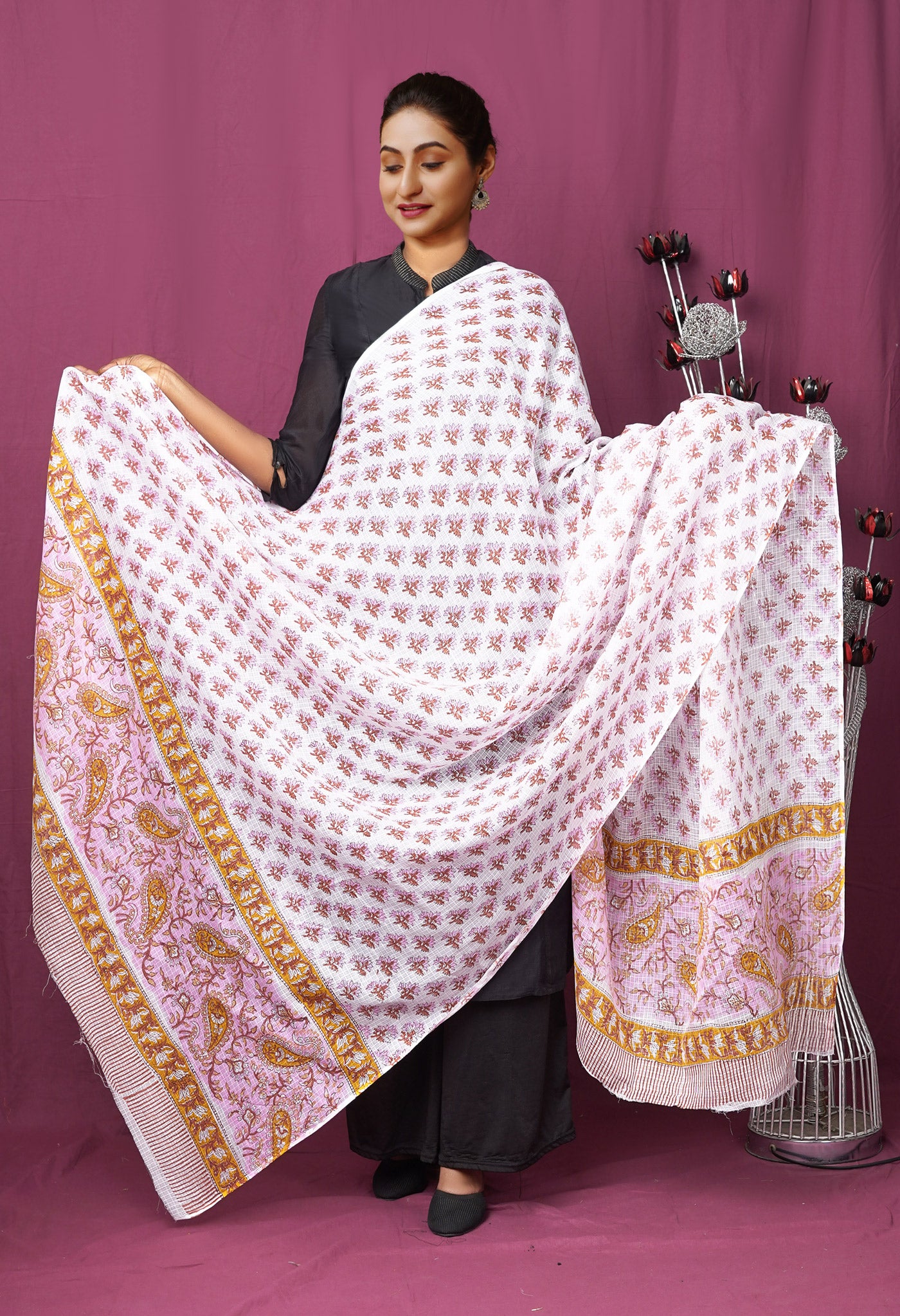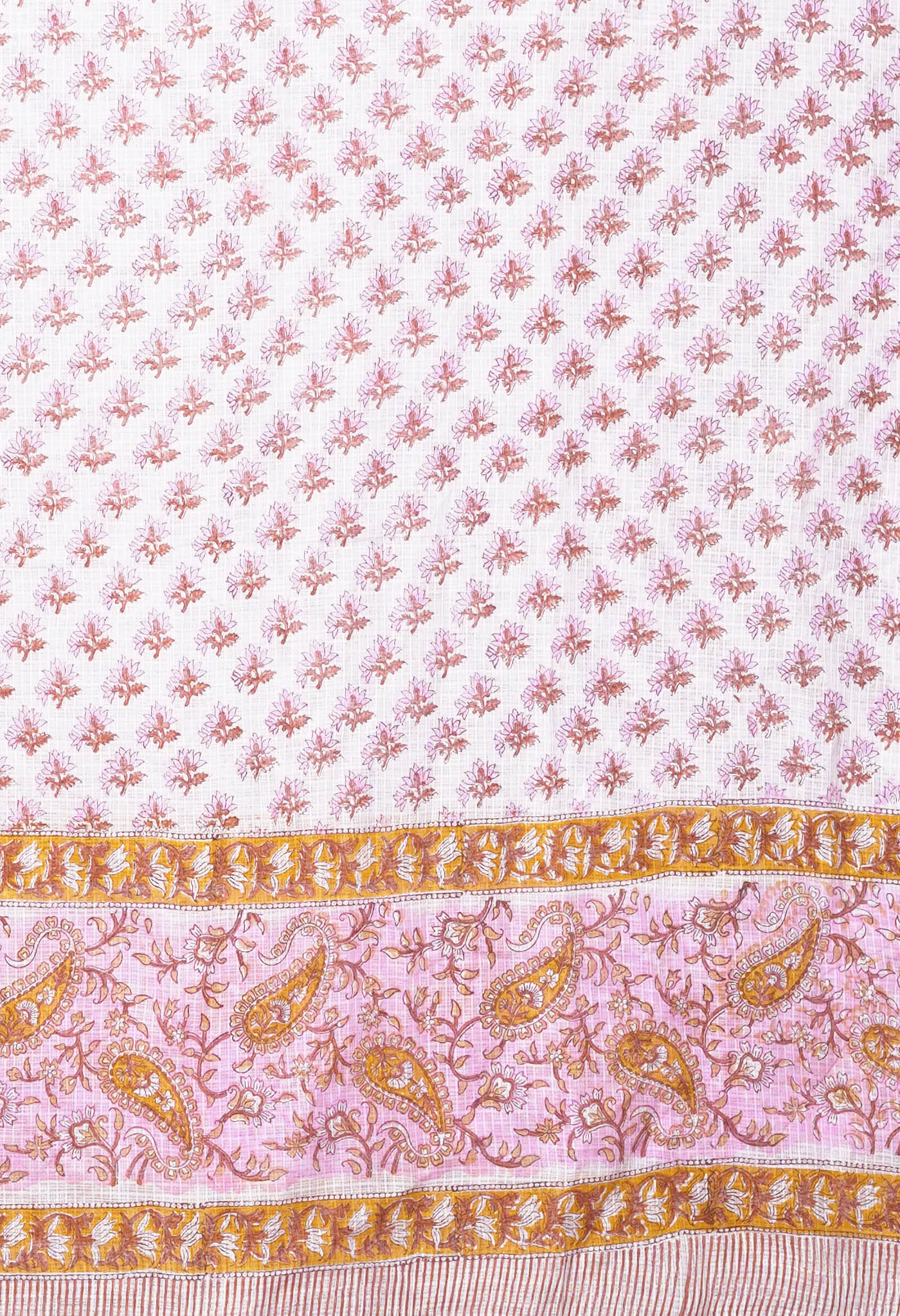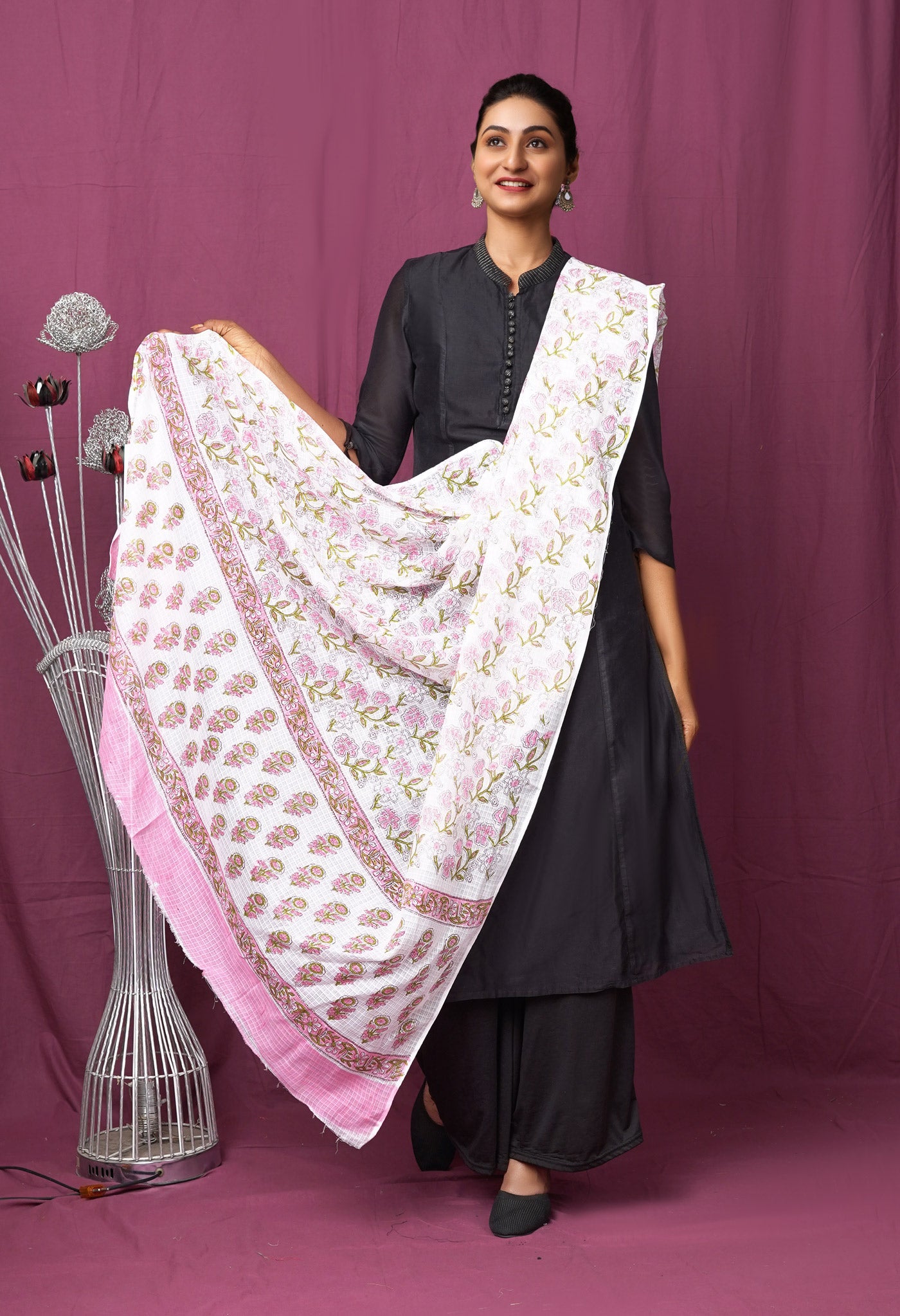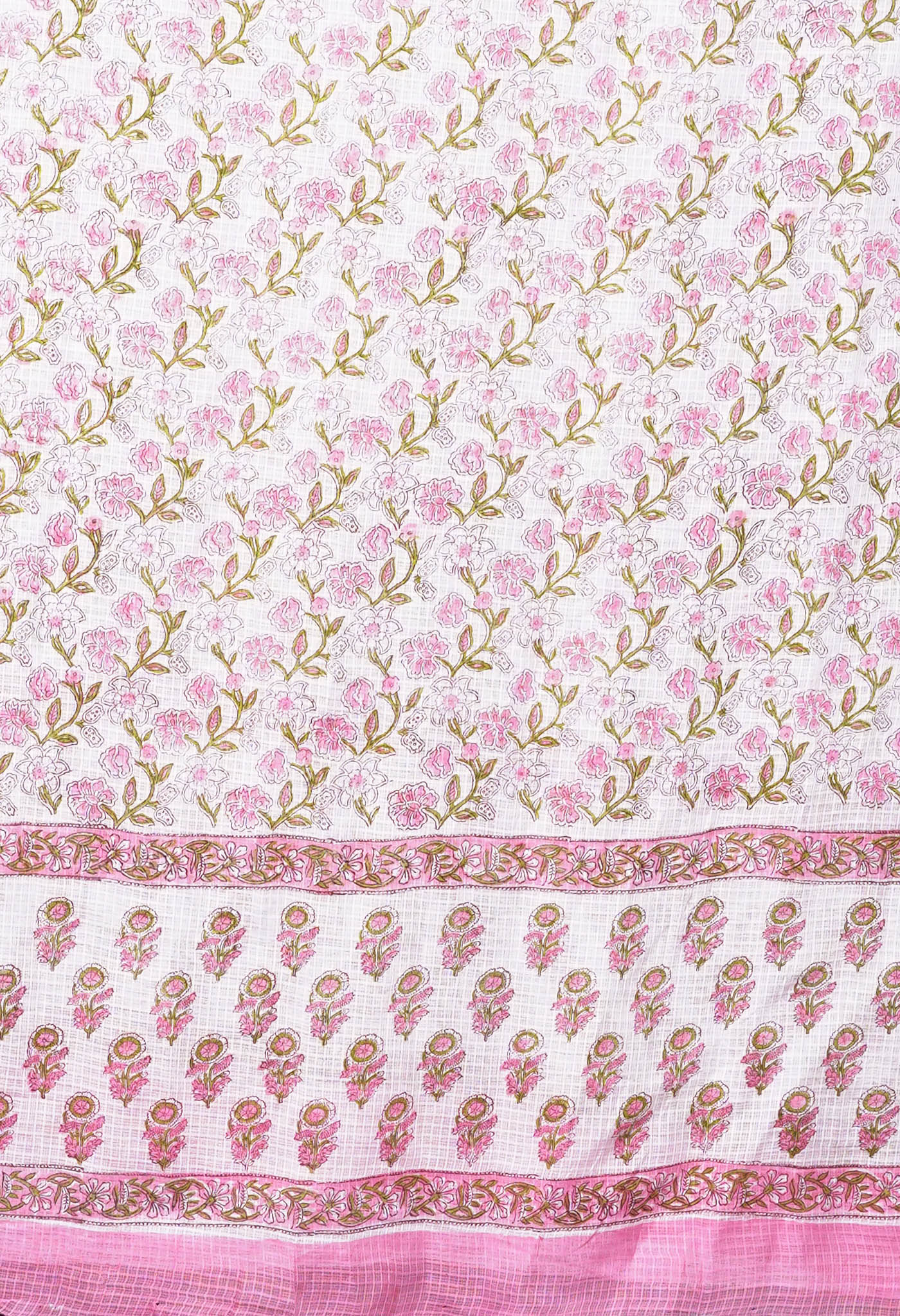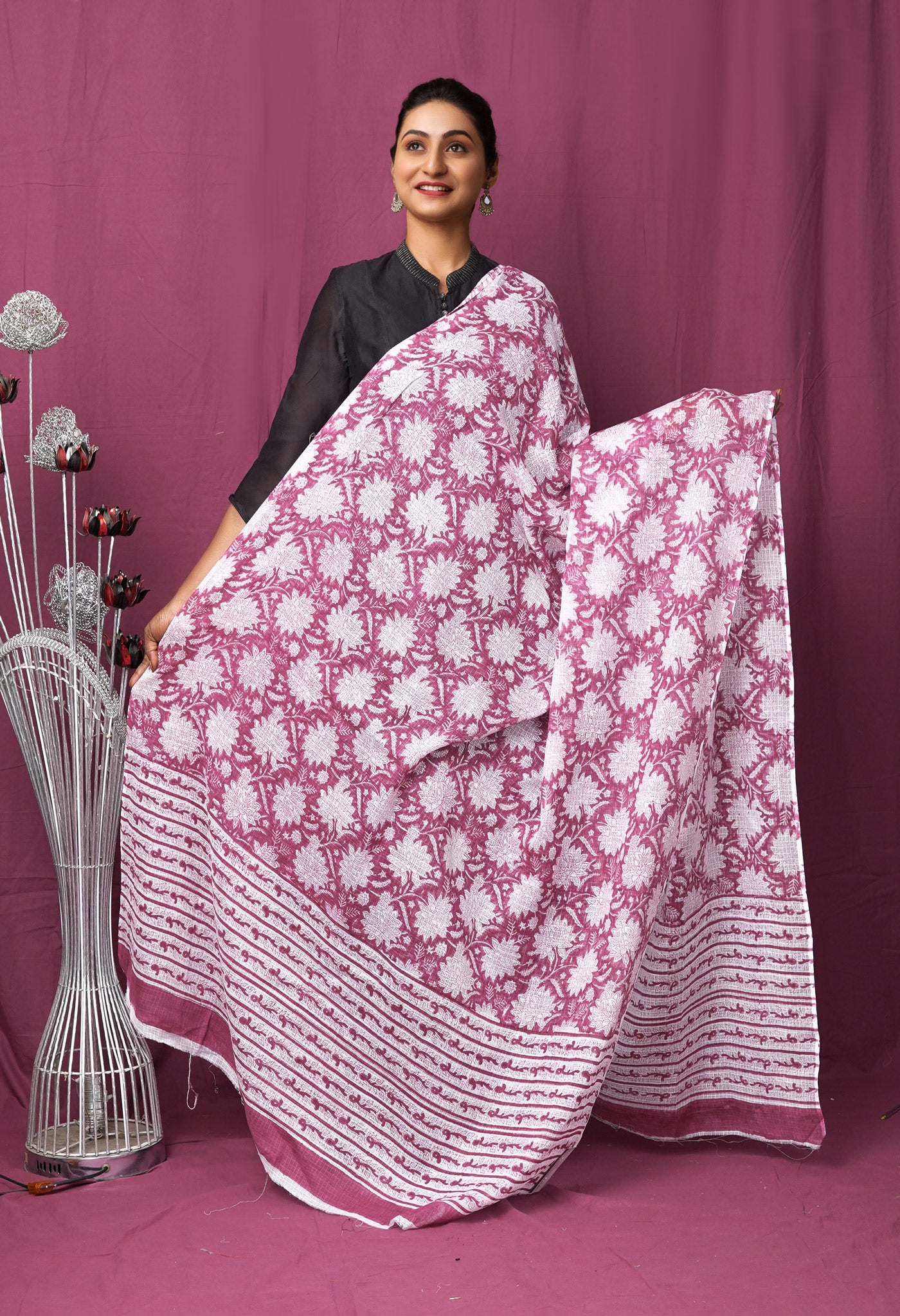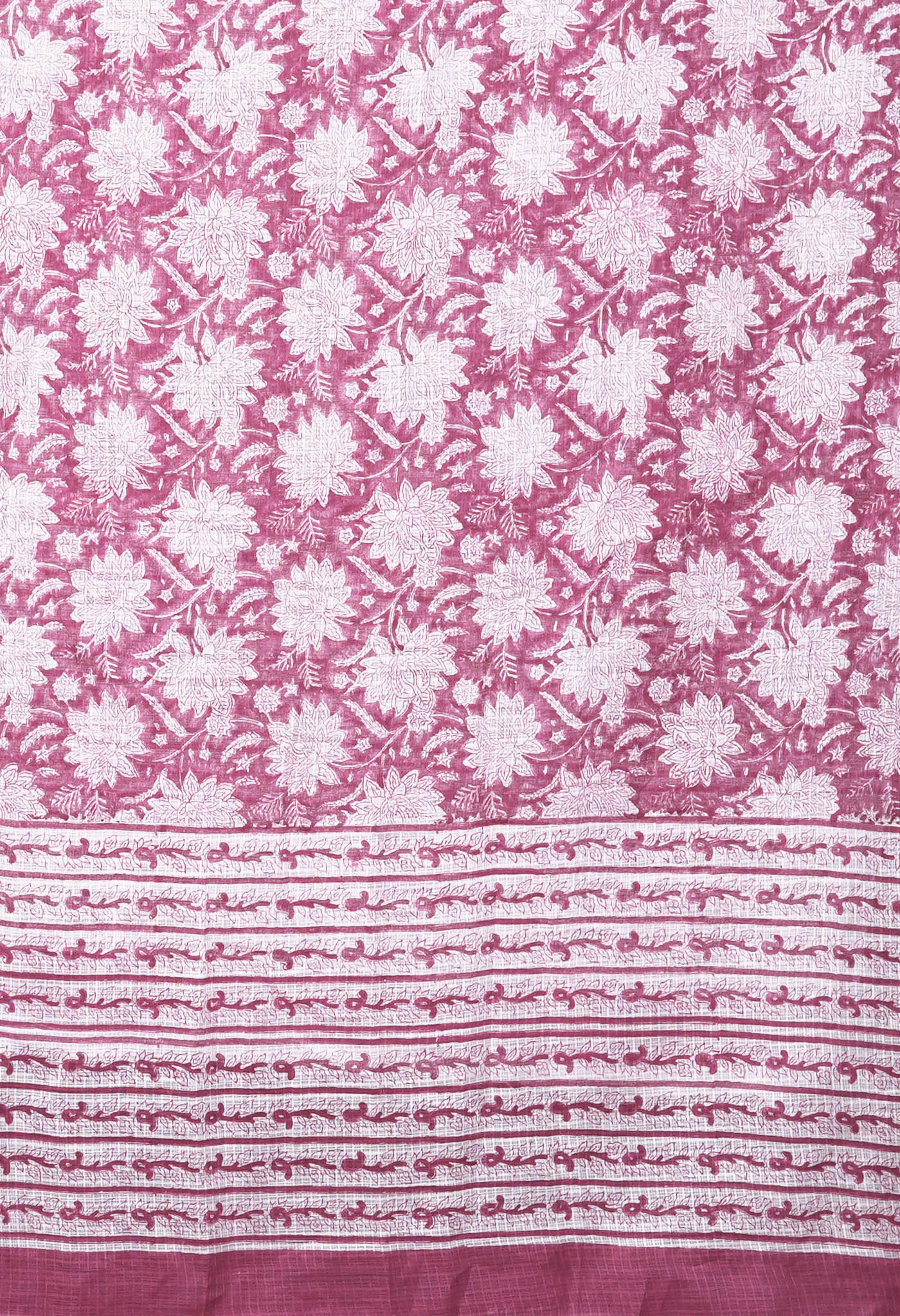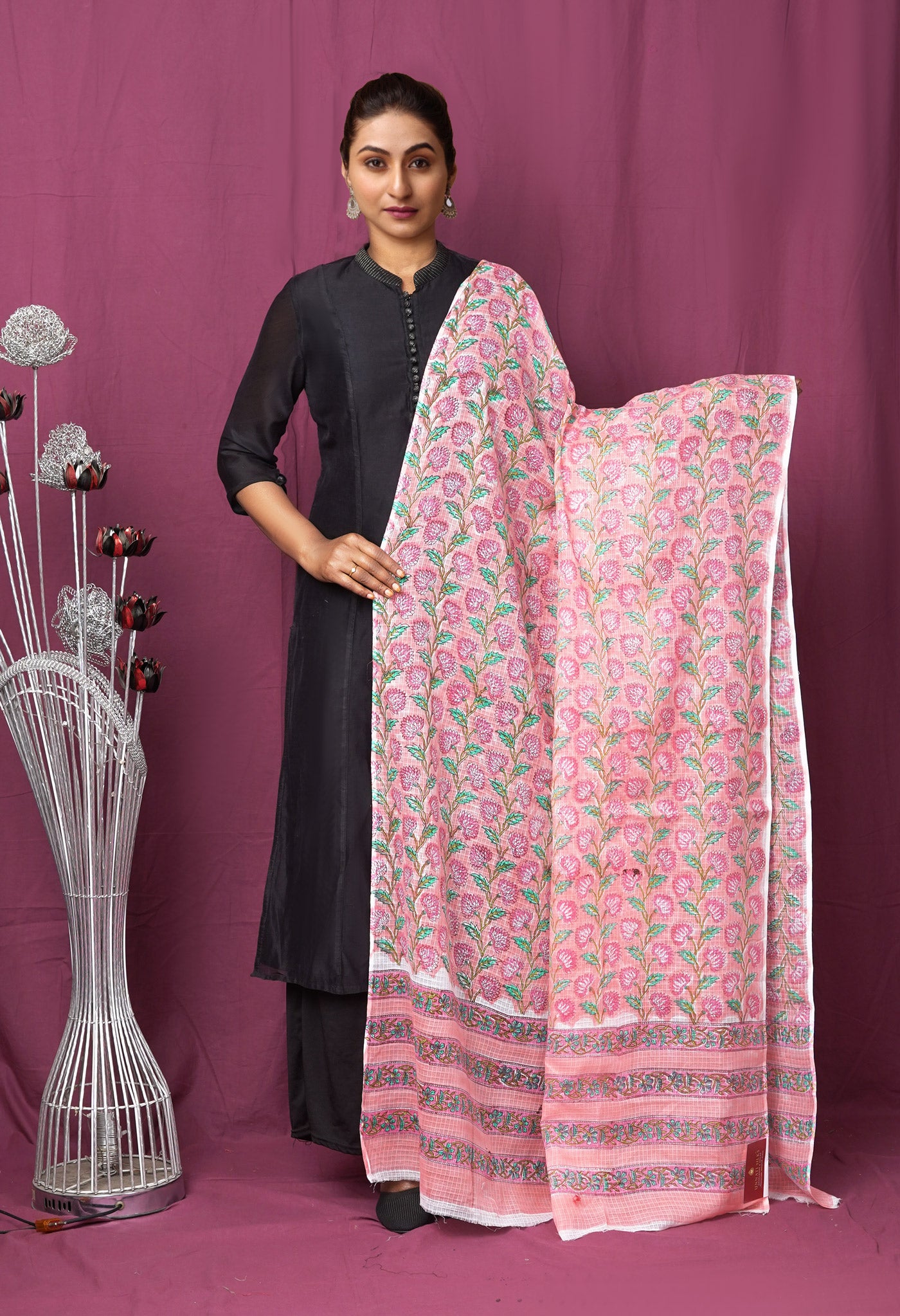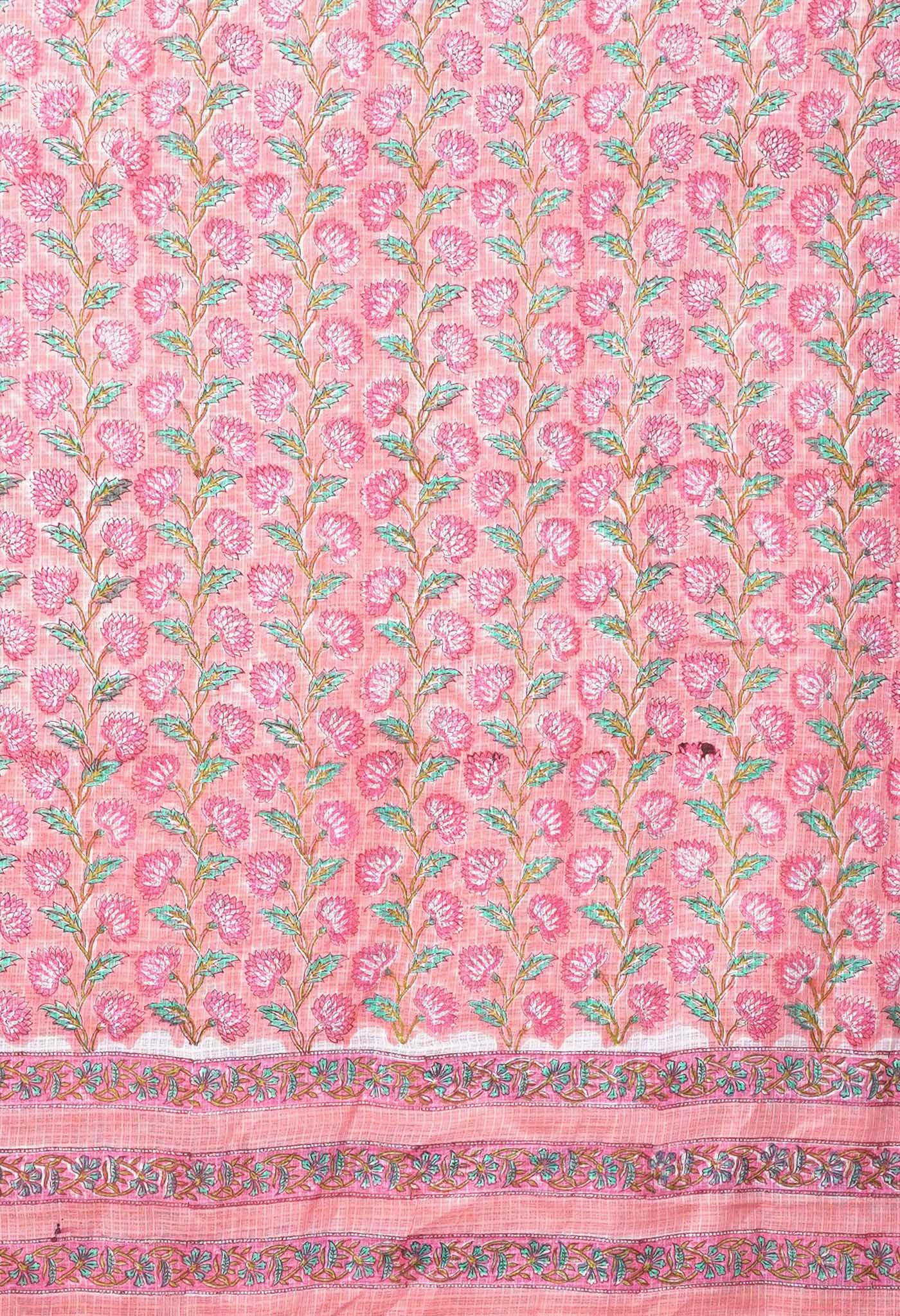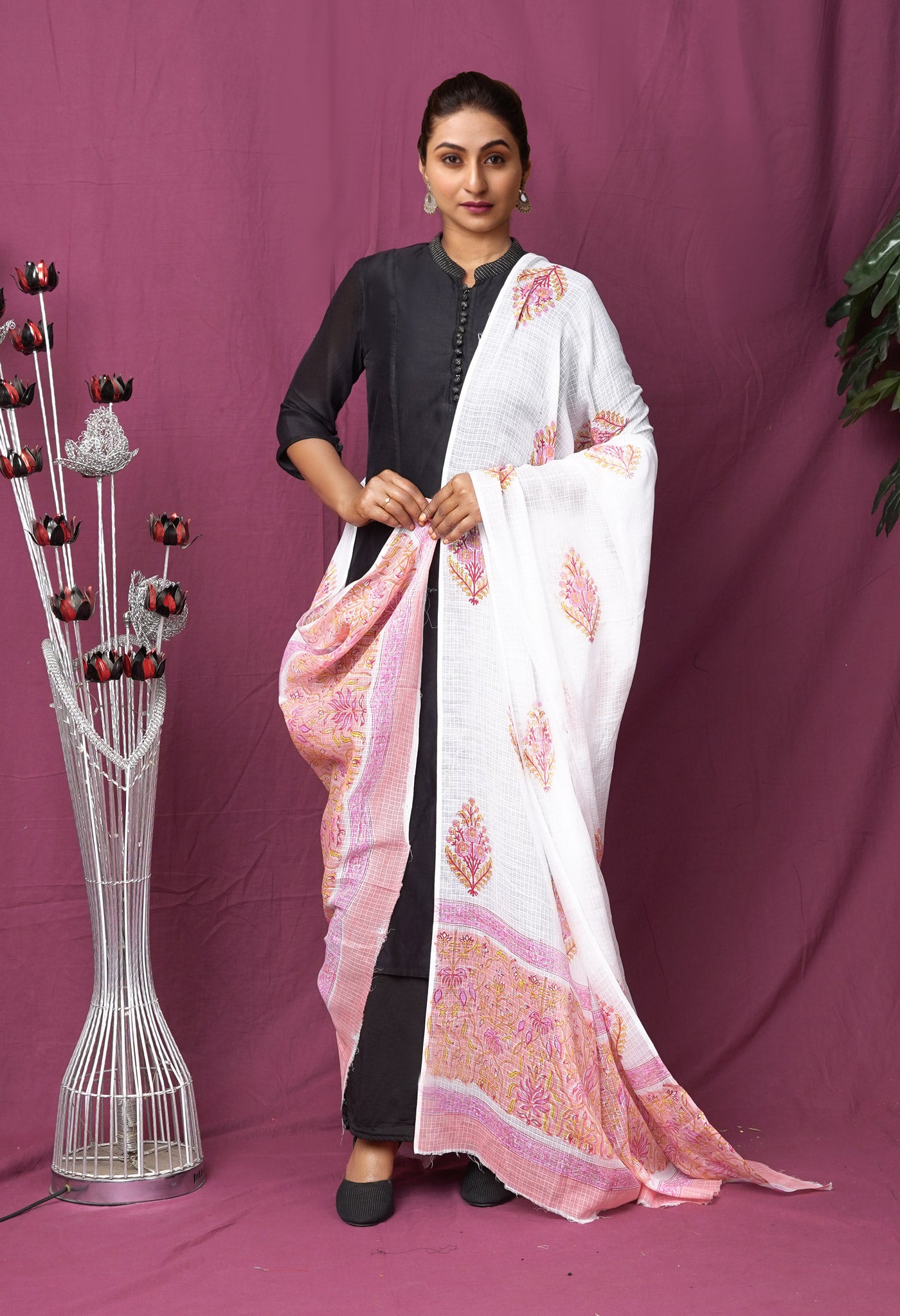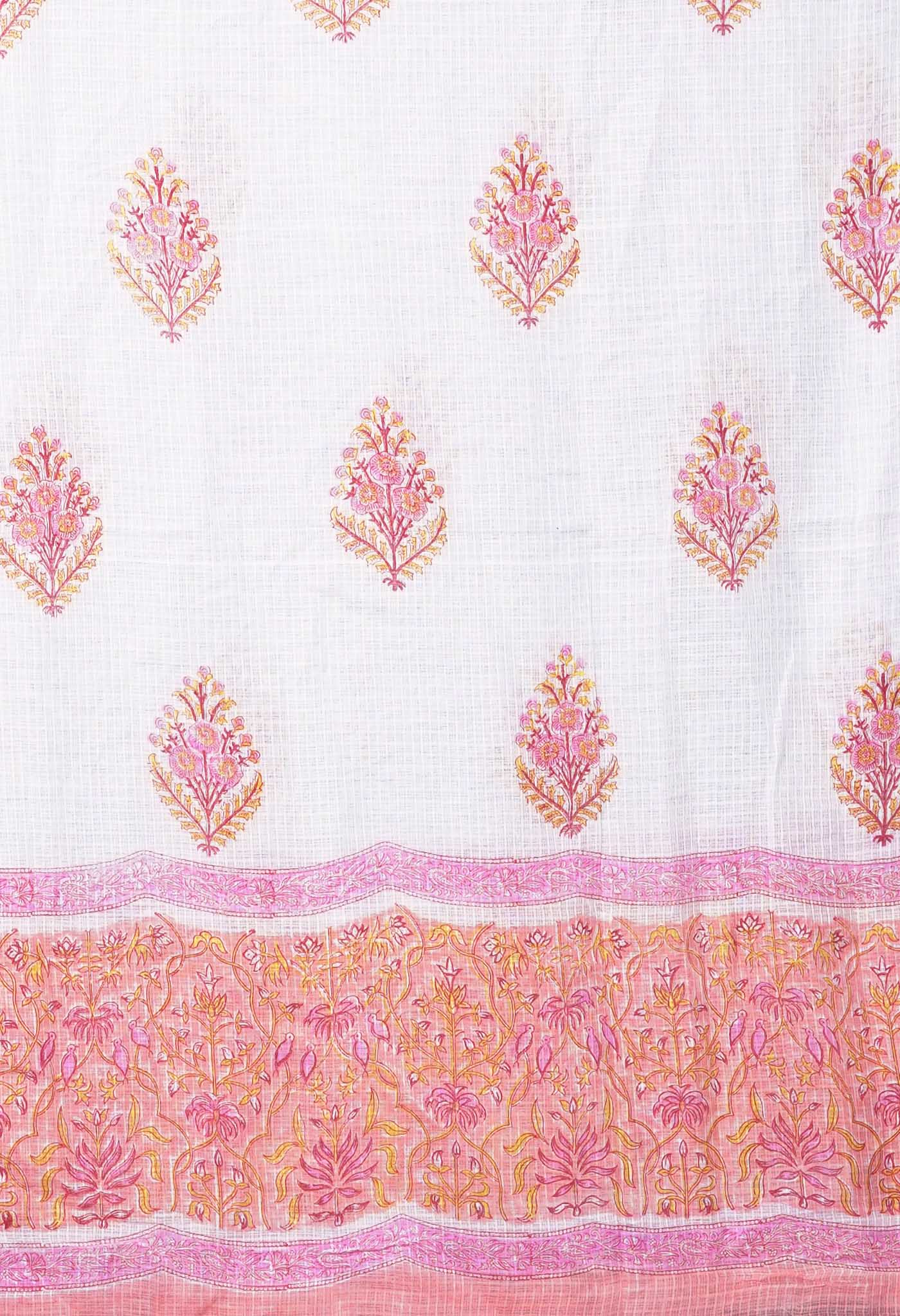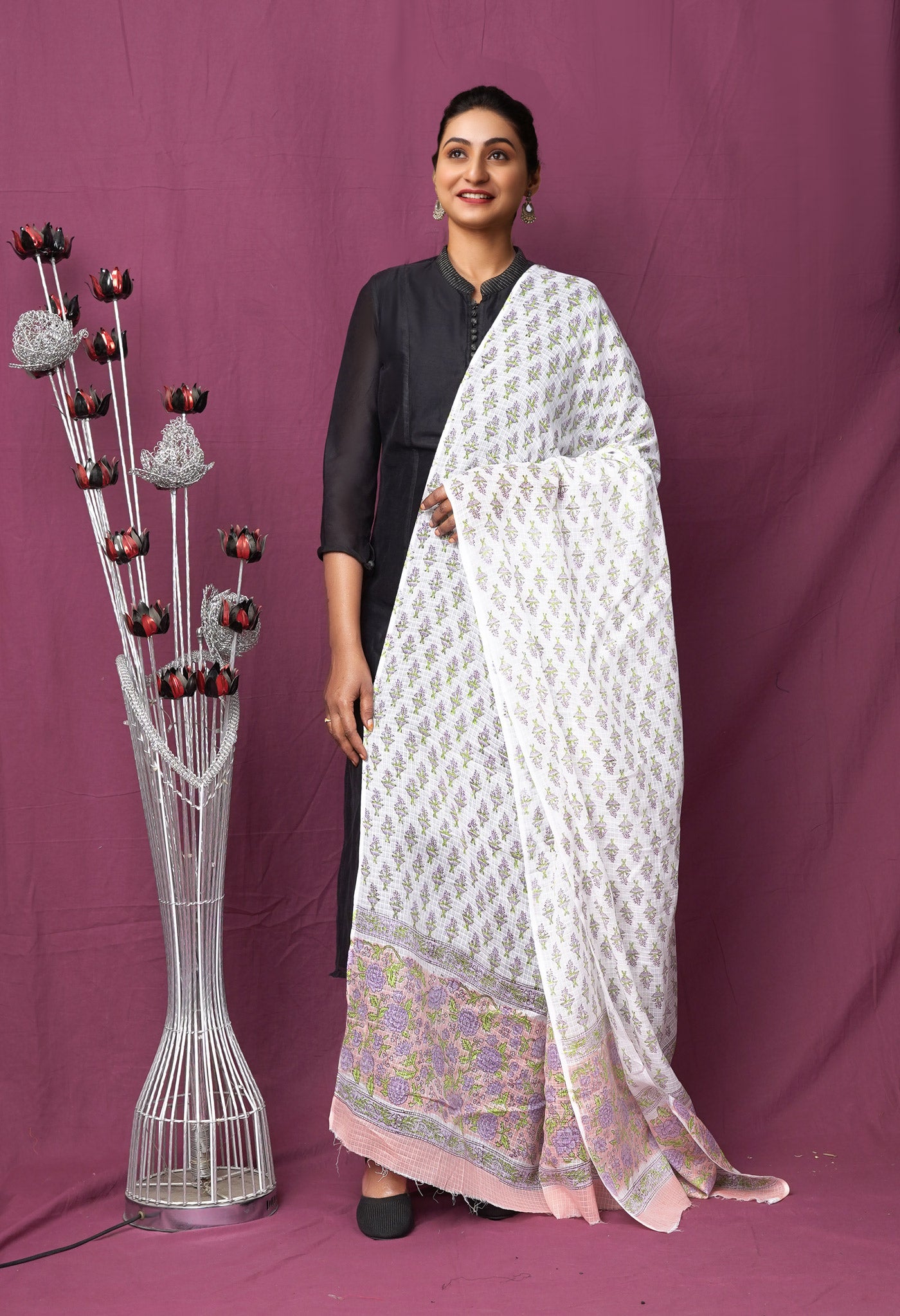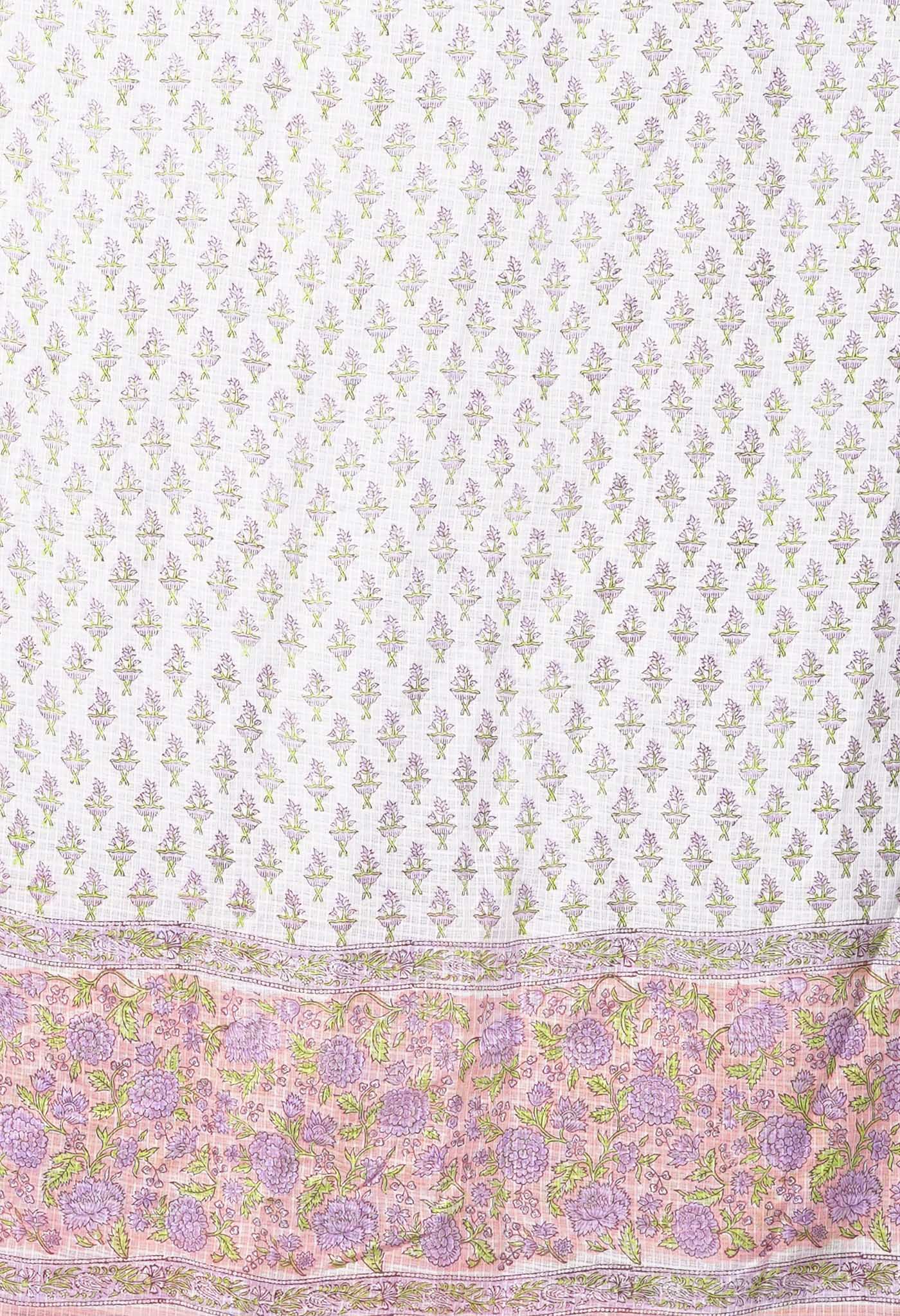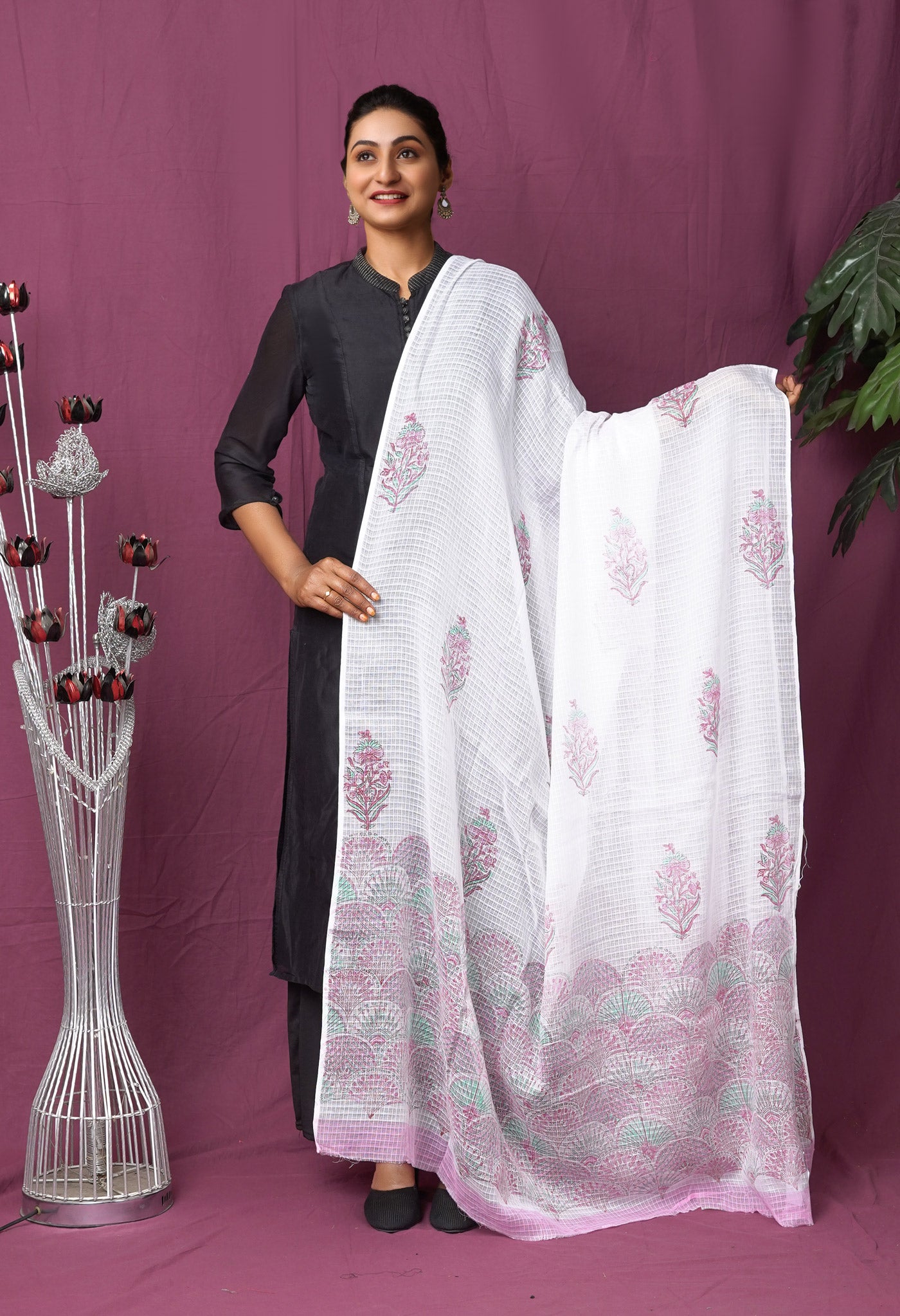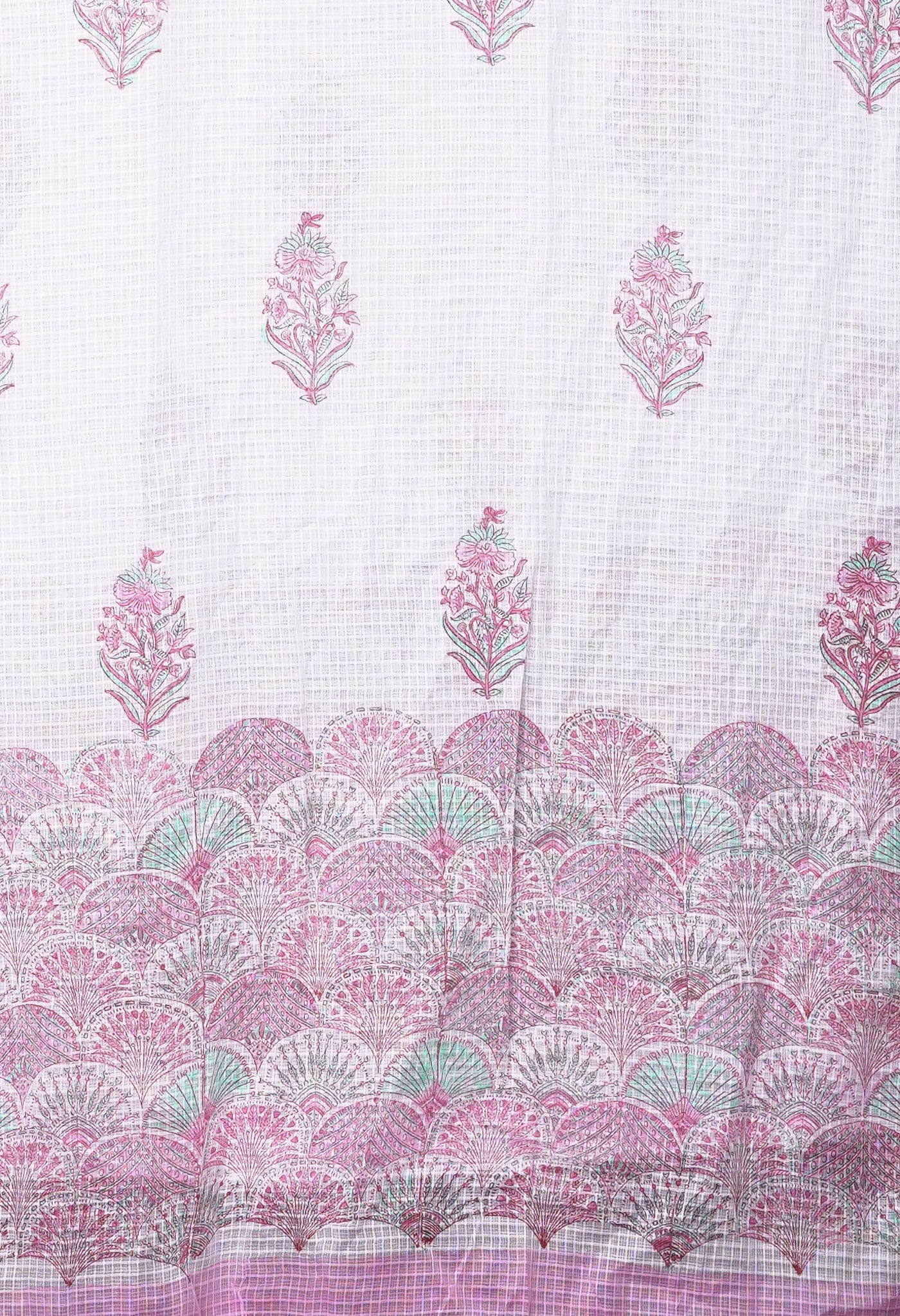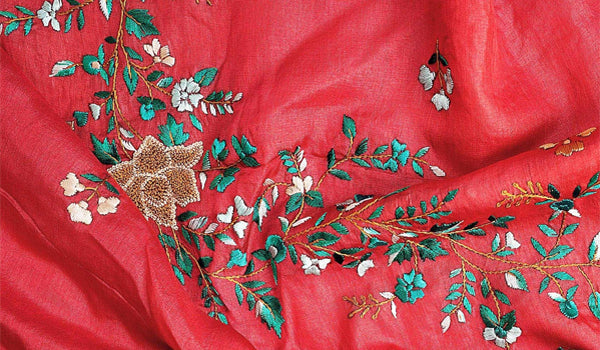
Trending at Unnati - Witness the beauty of Phulkari with Chiffon Dupattas
When a plain broad expanse on a fabric is beautifully decorated with lovely floral arrangements akin to a garden theme, one can guess it to be the Phulkari embroidery. An arty theme once practiced only by the rural women of Punjab, it is traditional embroidery that ‘livens’ the fabric and ‘brightens’ the environs. Unnati Silks has seen it fit to recapture the magic in a successful experiment with the smooth weaves of Jaipuri cotton silk salwar kameez.

What is in store for the expectant market?
You have bright white to light colored kameez adorned nicely with the Phulkari embroidery done on neatly spread out flowers on the plain expanse of the front portion. The cotton silk kameez paired nicely with a plain bottom also in white to light colored salwar with a lovely plain to light colored chiffon chunni with lightly adorned motifs small and sparsely distributed done in colored thread work, make it a wonderful attire for any occasion.
[/vc_column_text][vc_column_text]
What is unequivocally special about this new range?
- The dazzling plain white is a wonderful background for dabbling in all sorts of colors and provides the perfect contrast.
- The Phulkari embroidery in different colored threads, by its very name suggests a wonderful theme – flowers and the manner in which it is so very nicely spread out in a neat sprawl, is a sight to behold.
- Hand embroidery always appeals because of the slight unevenness and the clear indication of the human touch and the dedication in the effort.
 [/vc_column_text][vc_btn title="Buy Online Beautiful Phulkari Tussar Silk Salwar Kameez" color="warning" align="center" link="url:https%3A%2F%2Fwww.unnatisilks.com%2Fsalwar-kameez-online%2Fby-style-salwar-kameez%2Fpulkari-work-punjabi-suits.html||target:%20_blank"][vc_column_text]
[/vc_column_text][vc_btn title="Buy Online Beautiful Phulkari Tussar Silk Salwar Kameez" color="warning" align="center" link="url:https%3A%2F%2Fwww.unnatisilks.com%2Fsalwar-kameez-online%2Fby-style-salwar-kameez%2Fpulkari-work-punjabi-suits.html||target:%20_blank"][vc_column_text]- There are products having variety in different ranges of the same theme. You have the checks pattern as a design on the kameez but wonderfully outlined in colored Phulkari embroidery. Furthermore there are motifs within the checks also done in different colored threads that spell out a neatly patterned arrangement like flower rows in beds in a well-designed garden.
- The dupatta does not compensate for the plain salwar but instead serves just as the plain light covering lightly done in small motifs, allowing the kameez “to do all the talking”.
- Whether it is flowers laid out in the centre, the checks pattern, the diamond shaped pattern, or whatever else be the innovative array housing smaller arrangements, it is the judicious selection of colors combining and contrasting that create bewitching allure.
- Best of all, the hand worked products with hand-made embroidery is so very natural yet neat, that it takes even critics by surprise about the wonderful offerings that can truly classify as ‘designer’.
 [/vc_column_text][vc_column_text]
[/vc_column_text][vc_column_text]But what exactly is this art of Phulkari?
The word phul means flower and kari means craft, thus its name, literally means floral work or floral craft. Phulkari literally means flower working, which was at one time used as the word for embroidery, but in time the word “Phulkari” became restricted to embroidered shawls and head scarfs. Simple and sparsely embroidered odini (head scarfs), dupatta and shawls, made for everyday use, are called Phulkaris, whereas garments that cover the entire body, made for special and ceremonial occasions, are known as Baghs("garden").
Phulkari is a flowery pattern silk embroidery that is unique in its exquisite floral appeal. Phulkari exclusively adorns the wedding and festival salwar kameez of Punjabi women, but has also in recent times stormed the market for fashion fabrics with a new appeal in fusion. Phulkari or “flower work” is embroidery that rural women in Punjab engage in, in their spare time.
 [/vc_column_text][vc_column_text]
[/vc_column_text][vc_column_text]The canvas for Phulkari
Fabrics like odhni, the head cloth or shawl that forms part of a routine Punjabi woman’s attire apart from the salwar and kameez, are generally the canvas for Phulkari. Phulkari has evenly distributed motifs and exquisite panel borders embroidered on the fabric. The border would be a part of the main theme, while in Phulkari it would be different.

The way Phulkari is done
The embroidery was once generally done on a heavy plain cotton fabric called Khaddar. It was done on the wrong side of it using costly floss silk called Pat. The patterns are never drawn beforehand and the threads have to be counted to get the design accurately. The densely packed floral design and other themes of everyday life hand embroidered by the womenfolk who engage in it, used to sometimes takes upto a year to complete.

Current Status of Phulkari
Today with a change in times and tastes, the colours of the Khaddar are generally white, red, black and blue but not restricted to them. Darning is the most commonly used technique to make the pattern. The width of a stitch would determine the quality of the Phulkari - narrower the stitch finer the work. For more complicated or unusual designs or for the borders, the herringbone stitch, the running stitch, Holbein stitch or buttonhole stitch are used.
The colour of the Pat is generally gold and silvery white symbolizing the harvest and wild flowers. Weddings and traditional festivals are the two occasions when considerations of use of Pat are pushed aside and the silk Pat finds its way to its customary place to make the fabrics on display stun onlookers with the resplendent finery.
 [/vc_column_text][vc_column_text]
[/vc_column_text][vc_column_text]Interesting Info about the art
- Phulkaris and Baghs were worn by women all over Punjab during marriage festivals and other joyous occasions. They were embroidered by the women for their own use and use of other family members and were not for sale in the market. Thus, it was purely a domestic art which not only satisfied their inner urge for creation but brought colour into day to day life. In a way, it was true folk art. Custom had grown to give Phulkaris and Baghs to brides at the time of marriages.
- The Phulkari has been around since ages and its origin has not been pinpointed to any particular source. But In its present form, phulkari embroidery has been popular since the 15th century.
- The main characteristics of Phulkari embroidery practiced in the rural segment of Punjab is the use of darn stitch on the wrong side of coarse cotton cloth with coloured silken thread. Punjabi women created innumerable alluring and interesting designs and patterns by their skilful manipulation of the darn stitch. In Phulkari embroidery ornaments the cloth, whereas in Bagh, it entirely covers the garment so that the base cloth is not visible. The end portion of pallav of Phulkari have separate panels of exquisite workmanship of striking design.

- No religious subject or scenes from the royal court were embroidered. Instead Phulkari encompassed life in the villages. The creative ability of rural Punjabi women produced innumerable and intricate geometrical patterns. However, most motifs were taken from everyday life. Wheat and barleystalk with ears were used as a common motif.
- Traditionally, Phulkari garments were part of a girl's wedding trousseau, its motifs expressive of her emotions and the number of Phulkari pieces defined the status of the family. Over the years, the state government has been working towards the promotion of Phulkari embroidery, by organizing special training programs, fairs, and exhibitions.
- There was a time when most of women artisans creating phulkari were in the unorganized sector or sold their work through agents. But they did not make much money compared to an actual market price of their product, since their ignorance of the value of the products they made was taken advantage of. Today with the direct intervention of the Govt., NGOs, and individuals, women self-help groups and cooperatives are able to sell directly and make more profits.

- Some modern fashion designers have incorporated this embroidery in their garment ranges, and its use has spread beyond salwar kameezand dupatta to objects and garments as varied, as jackets, bags, cushion covers, table-mats, shoes, slippers, juttis, and kids’ garments.
Take your time take your pick, but from the ranges of Phulkari Jaipur Cotton silk salwar kameez you will definitely get much more than what you anticipated.
[/vc_column_text][vc_btn title="Shop Online Beautiful Phulkari Tussar Silk Salwar Kameez " color="warning" align="center" link="url:https%3A%2F%2Fwww.unnatisilks.com%2Fsalwar-kameez-online%2Fby-style-salwar-kameez%2Fpulkari-work-punjabi-suits.html||target:%20_blank"][/vc_column][/vc_row]

